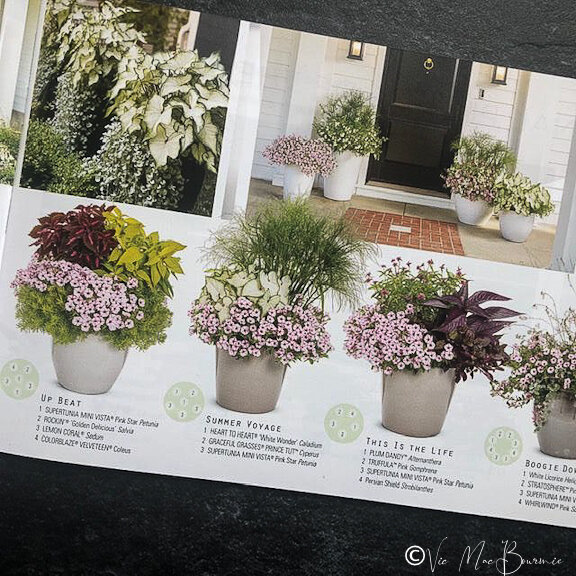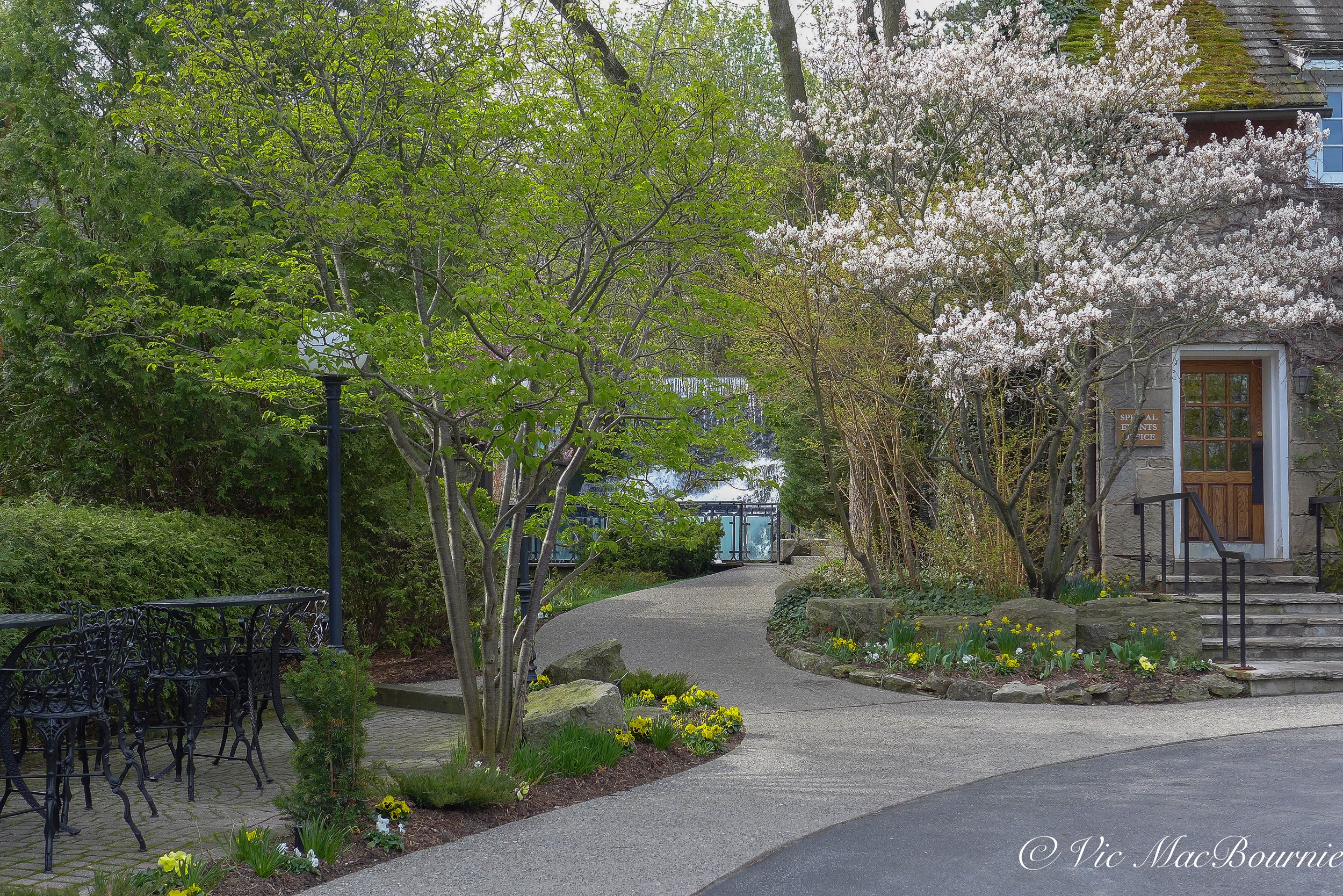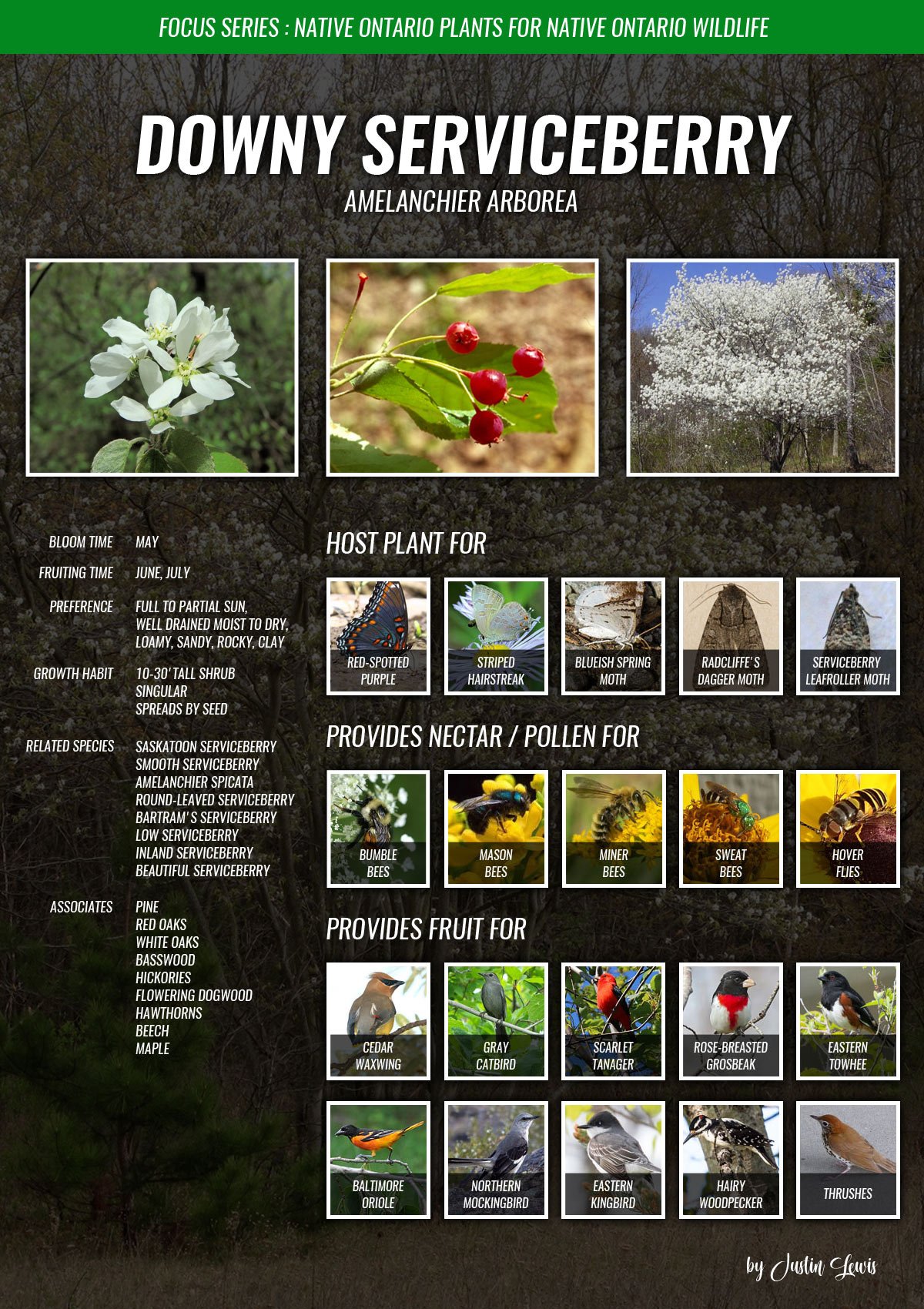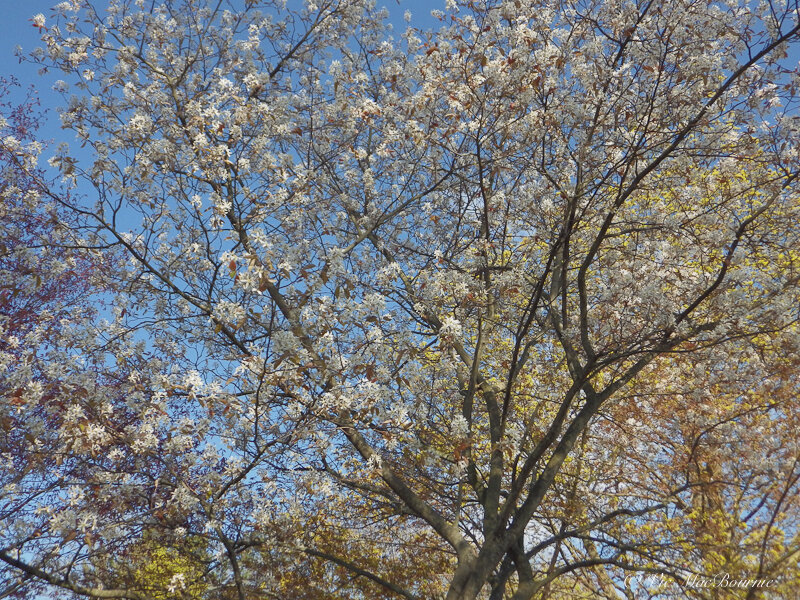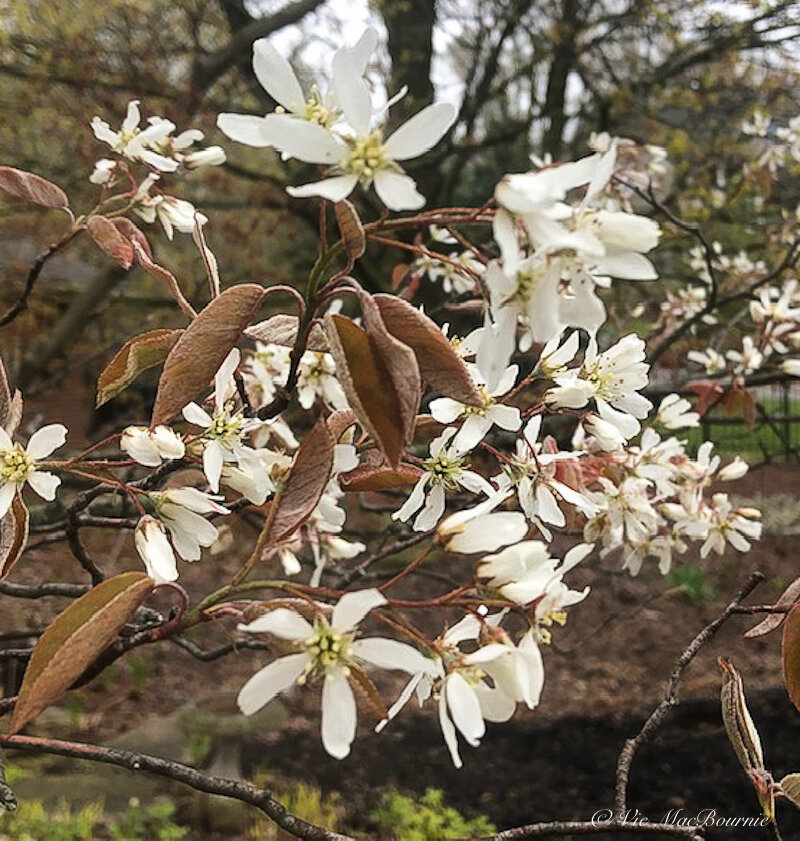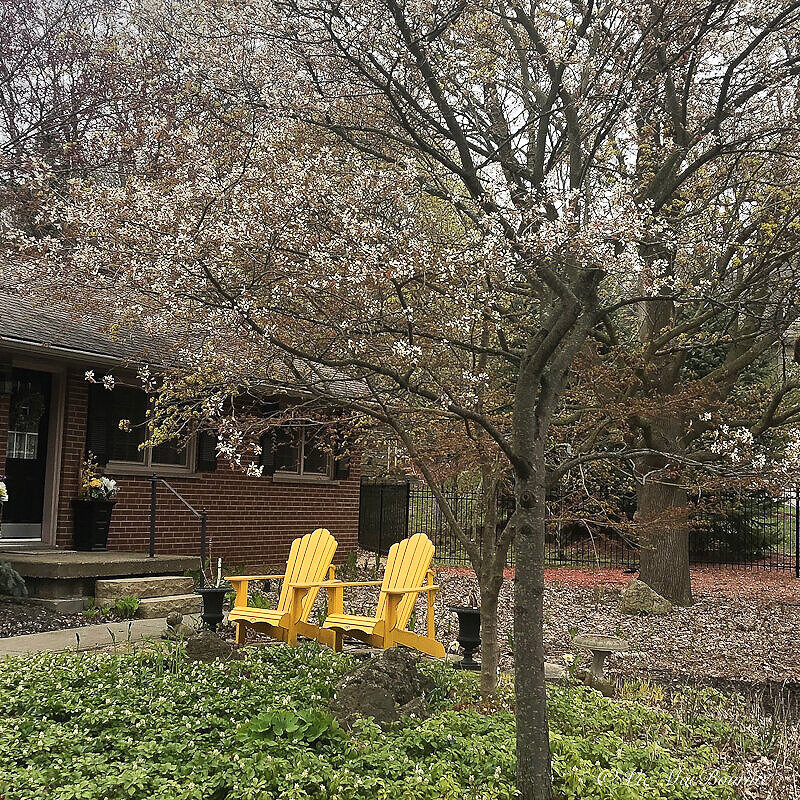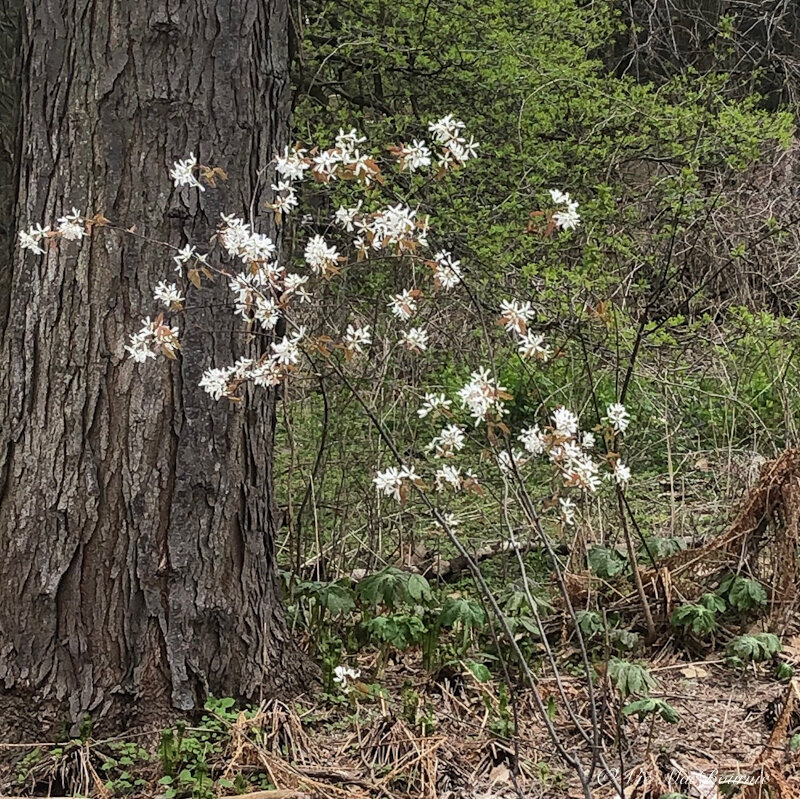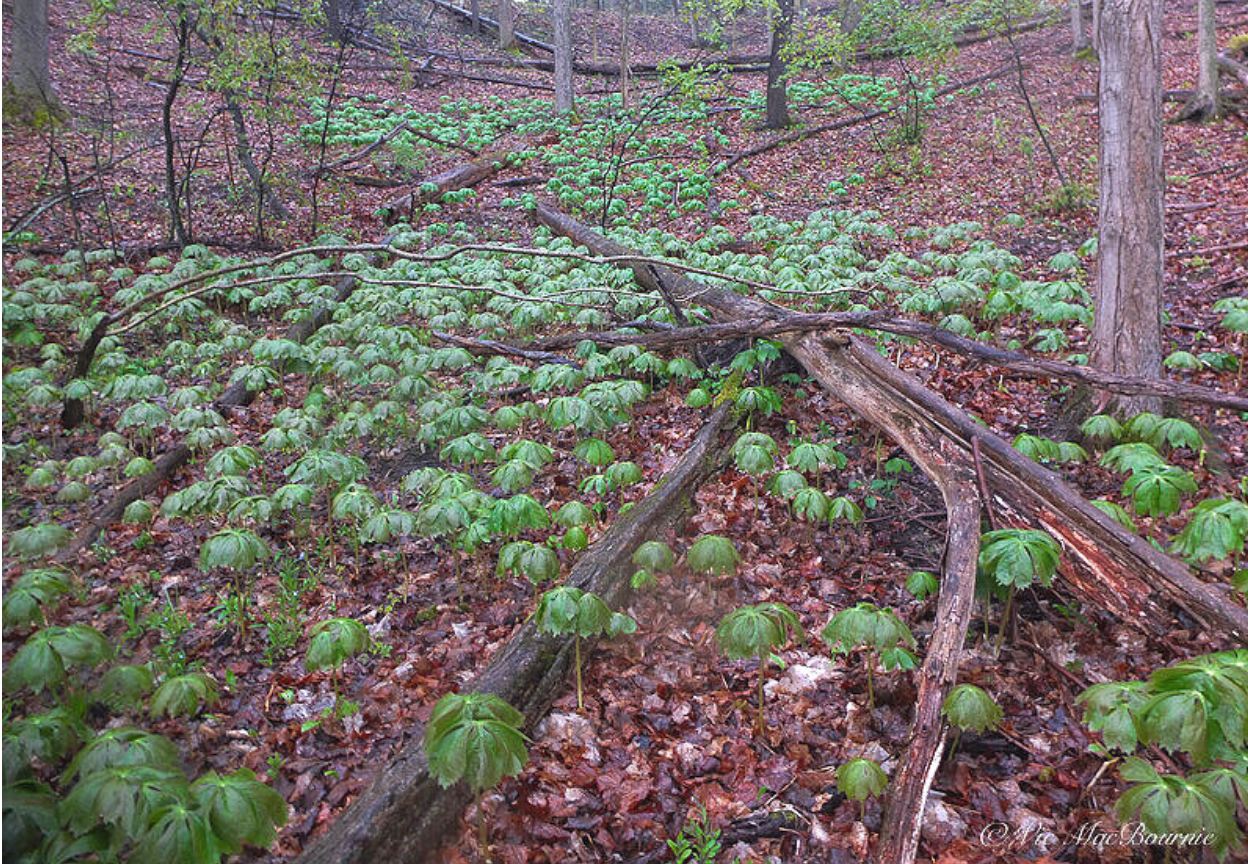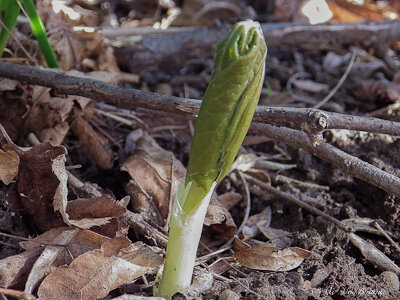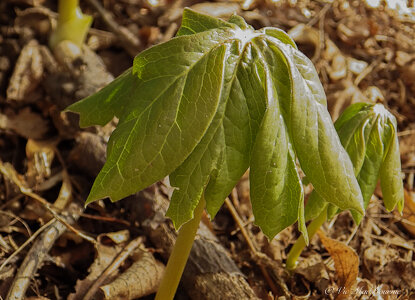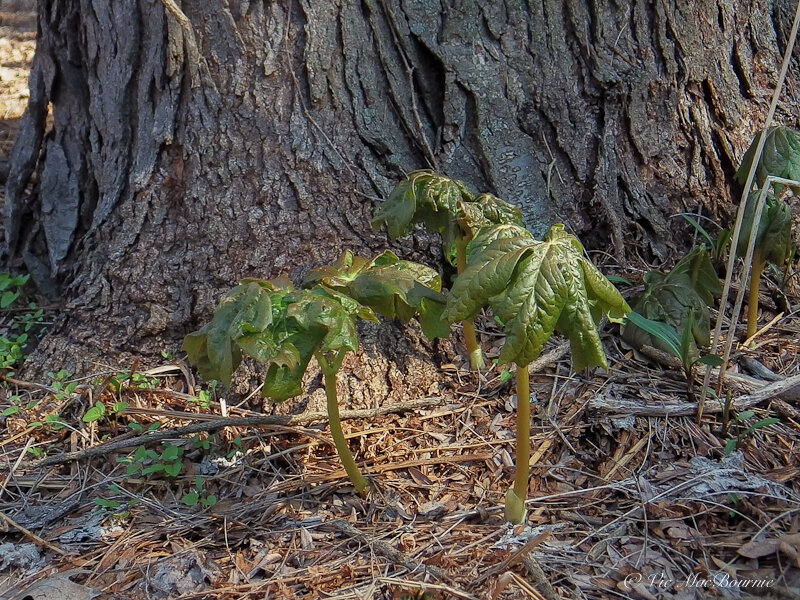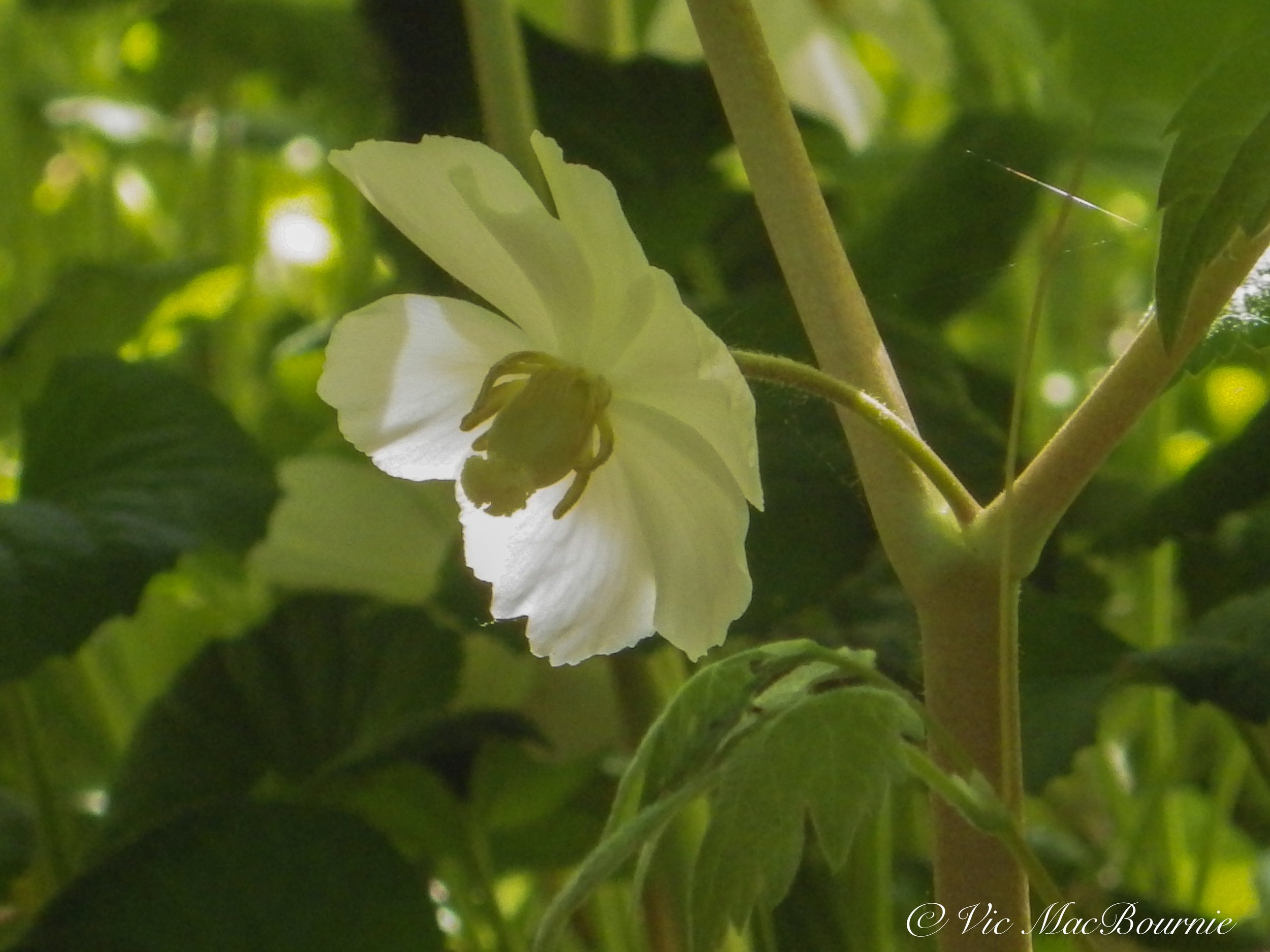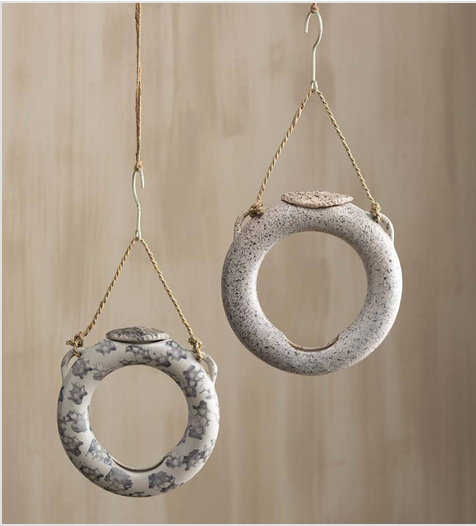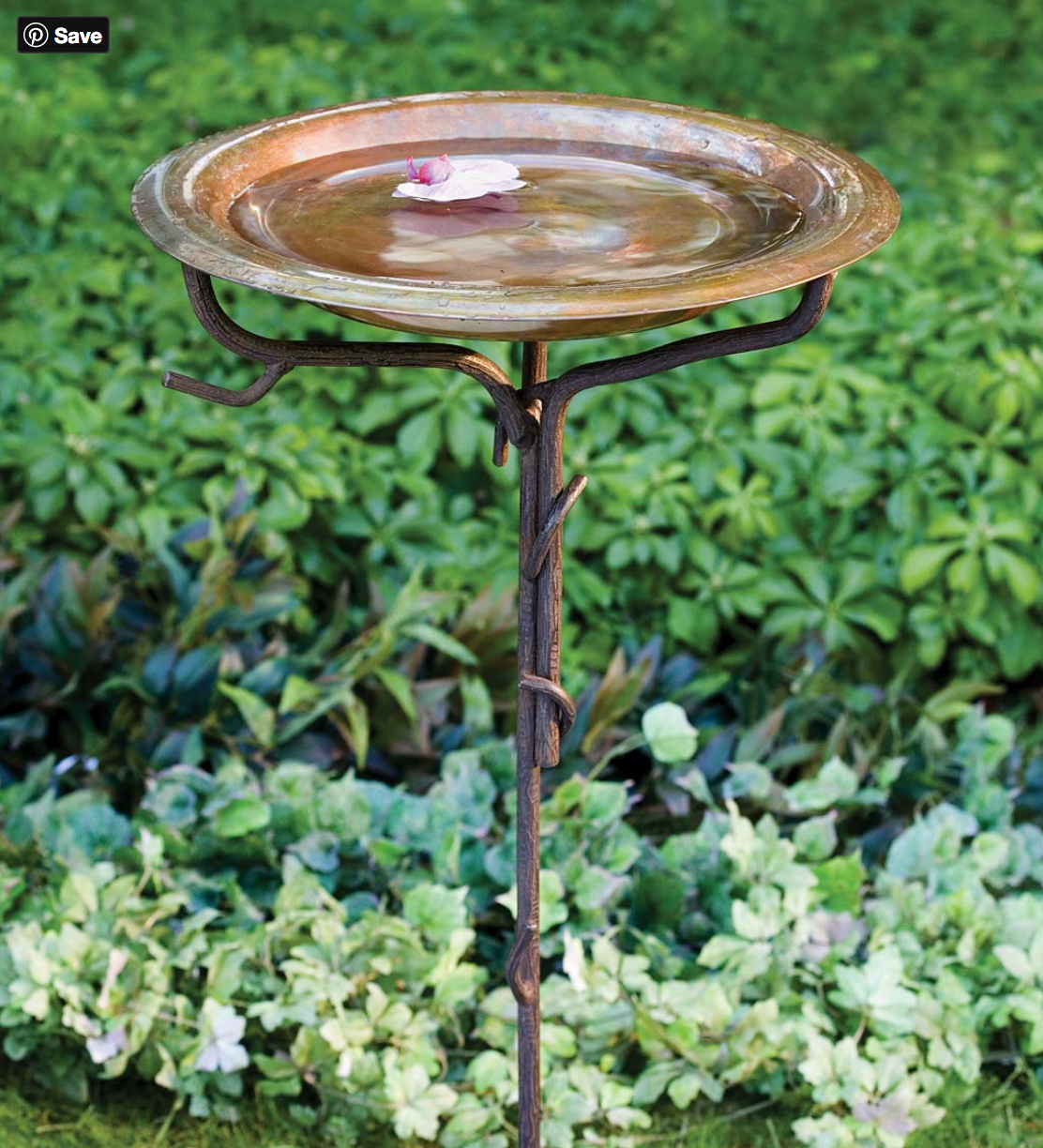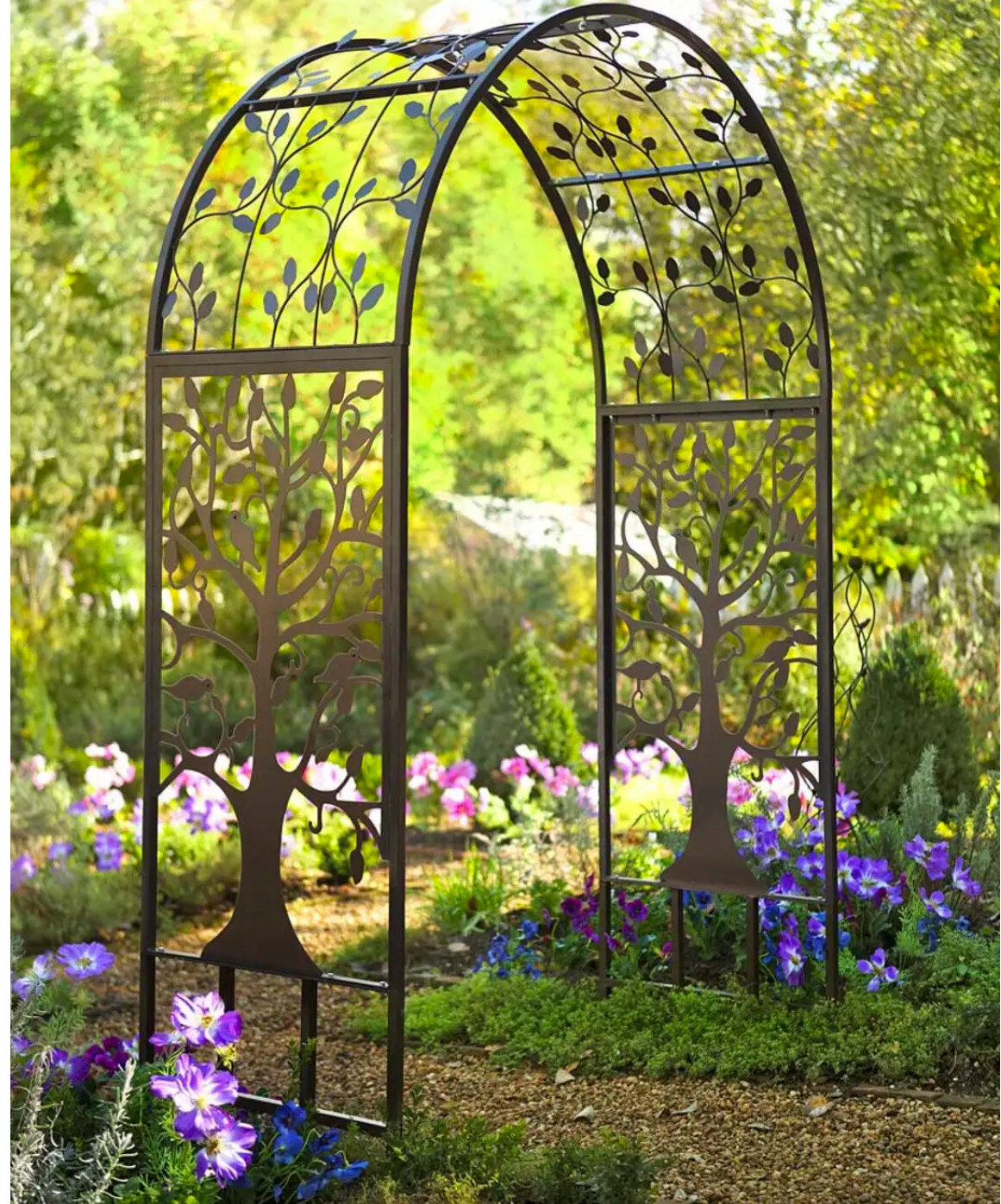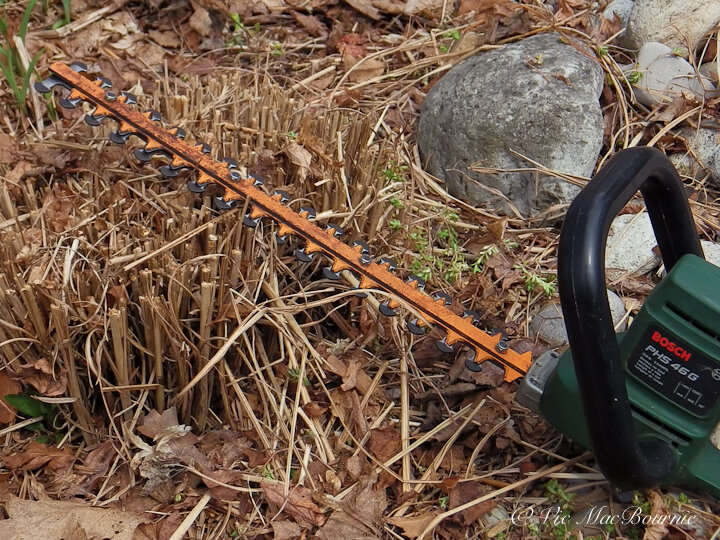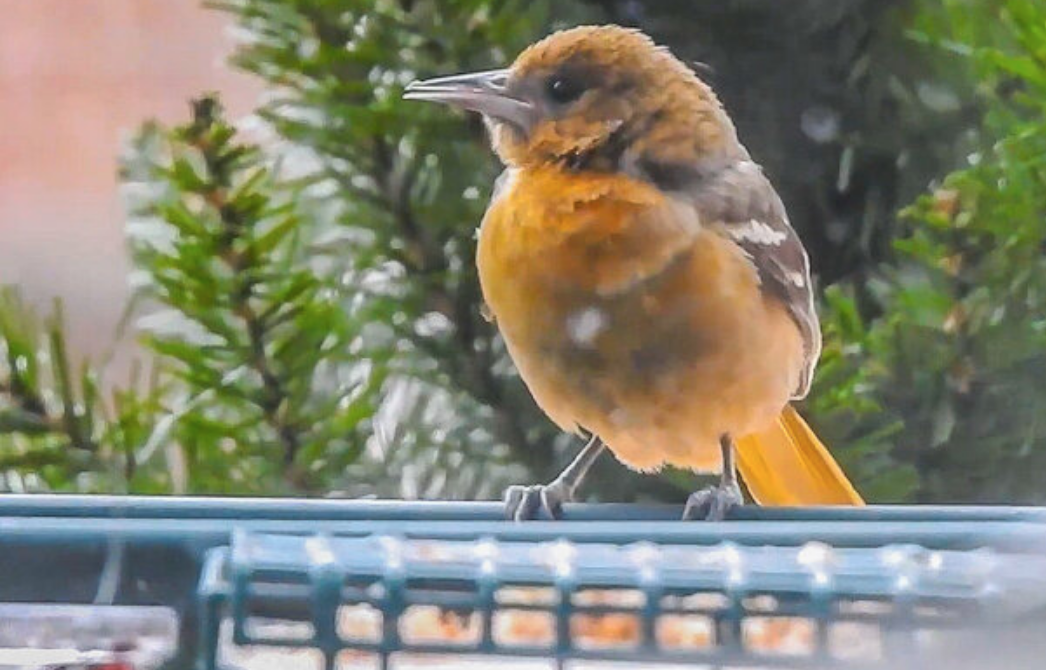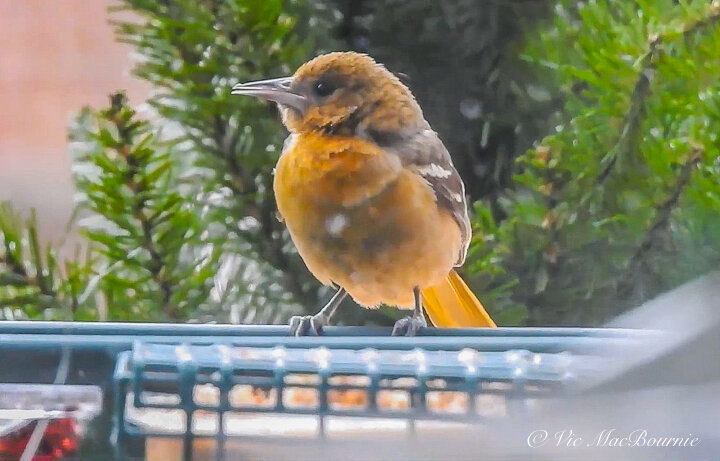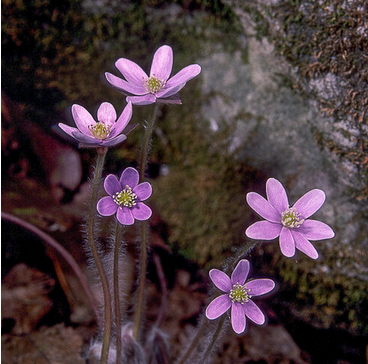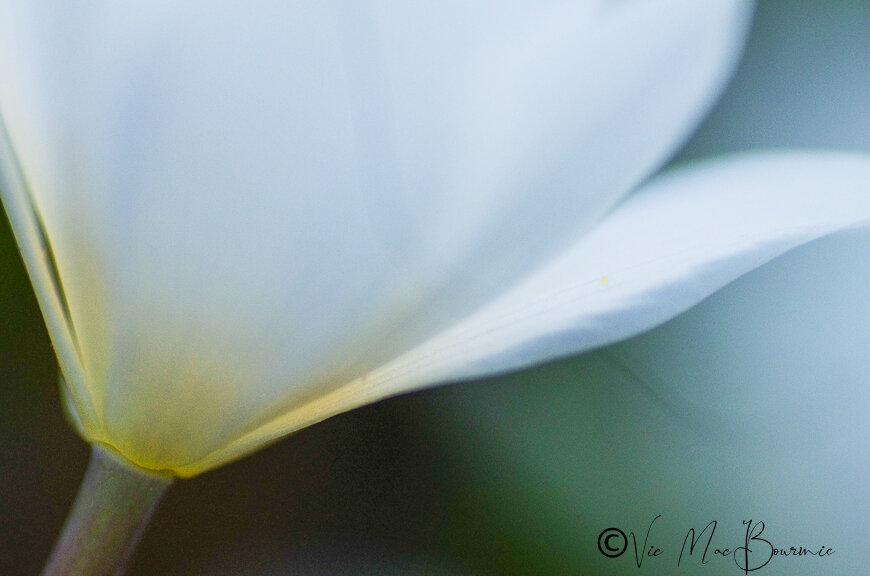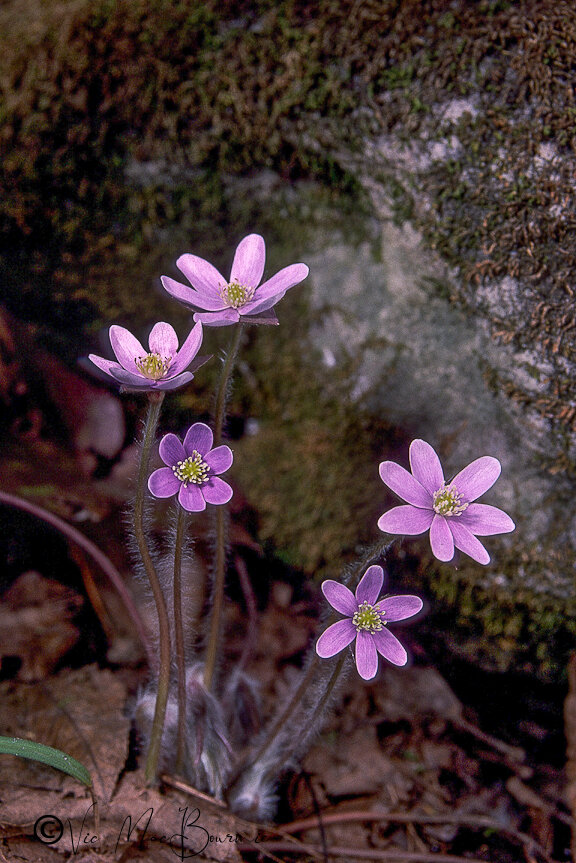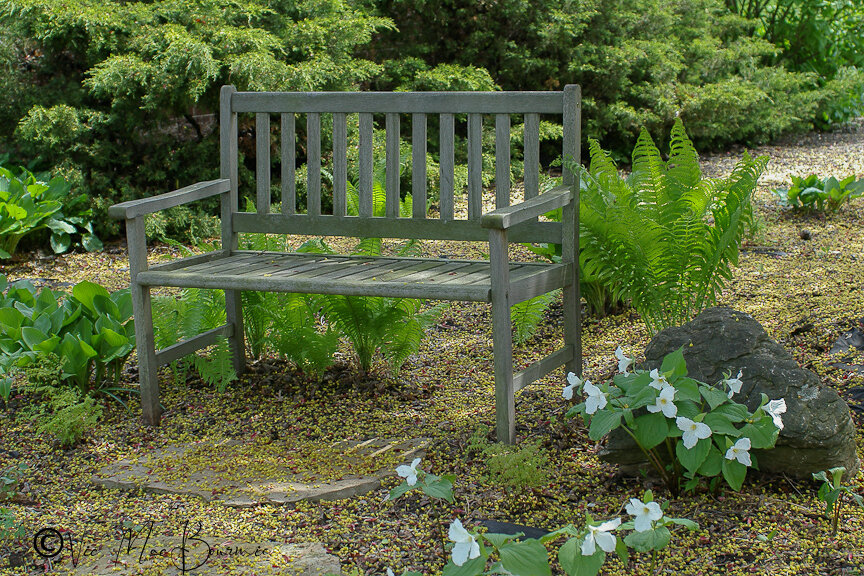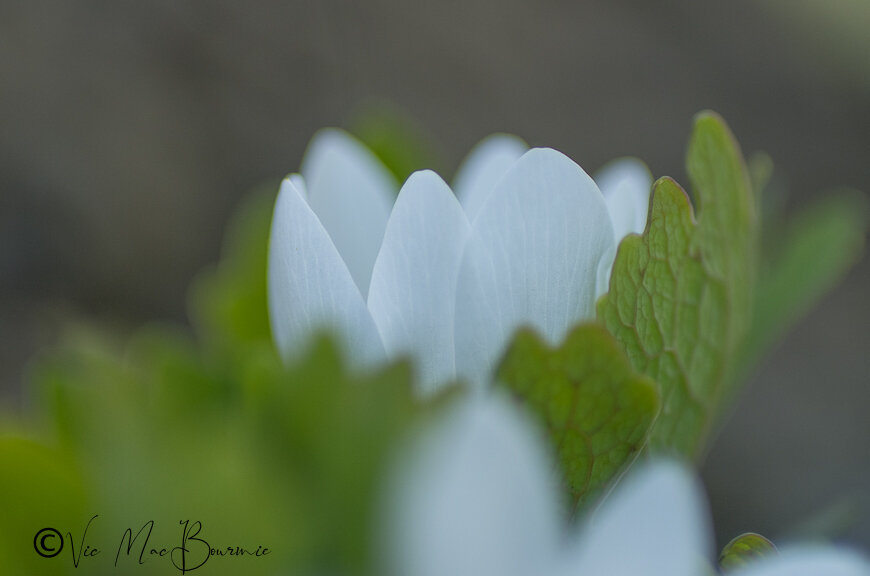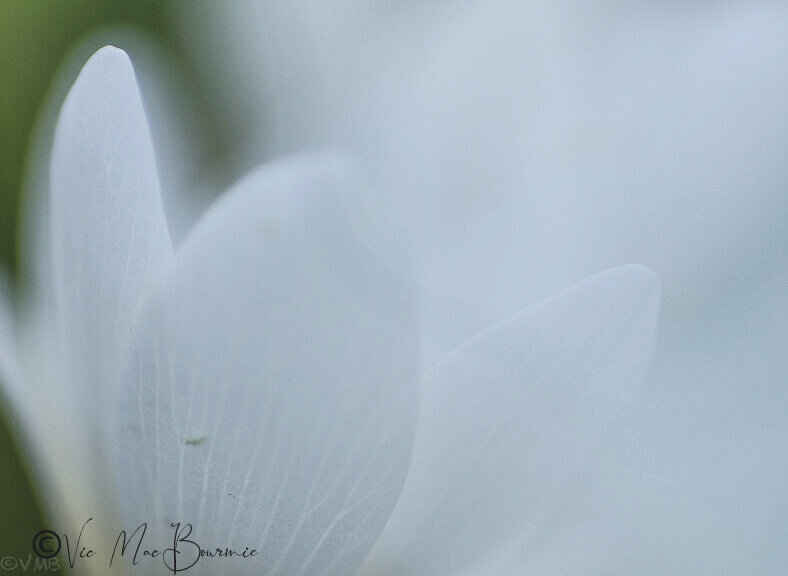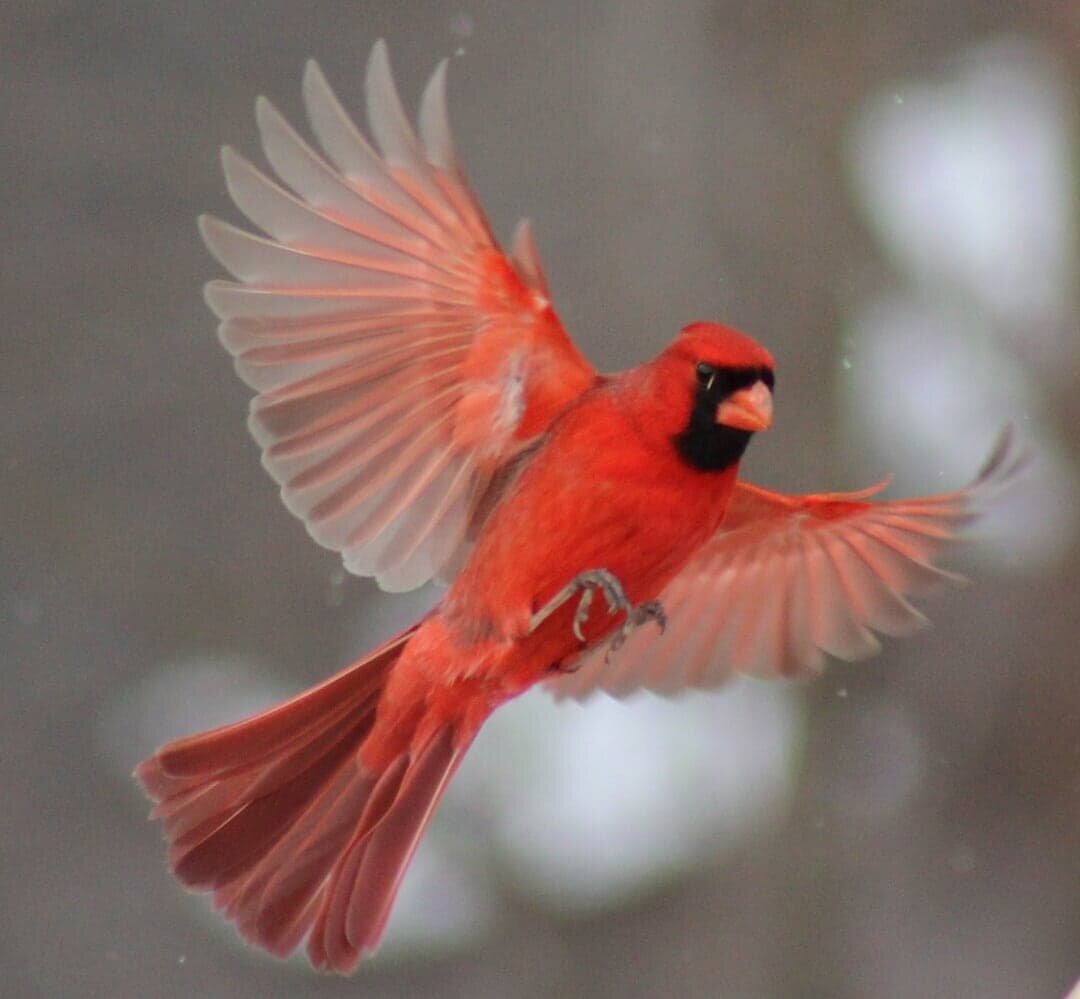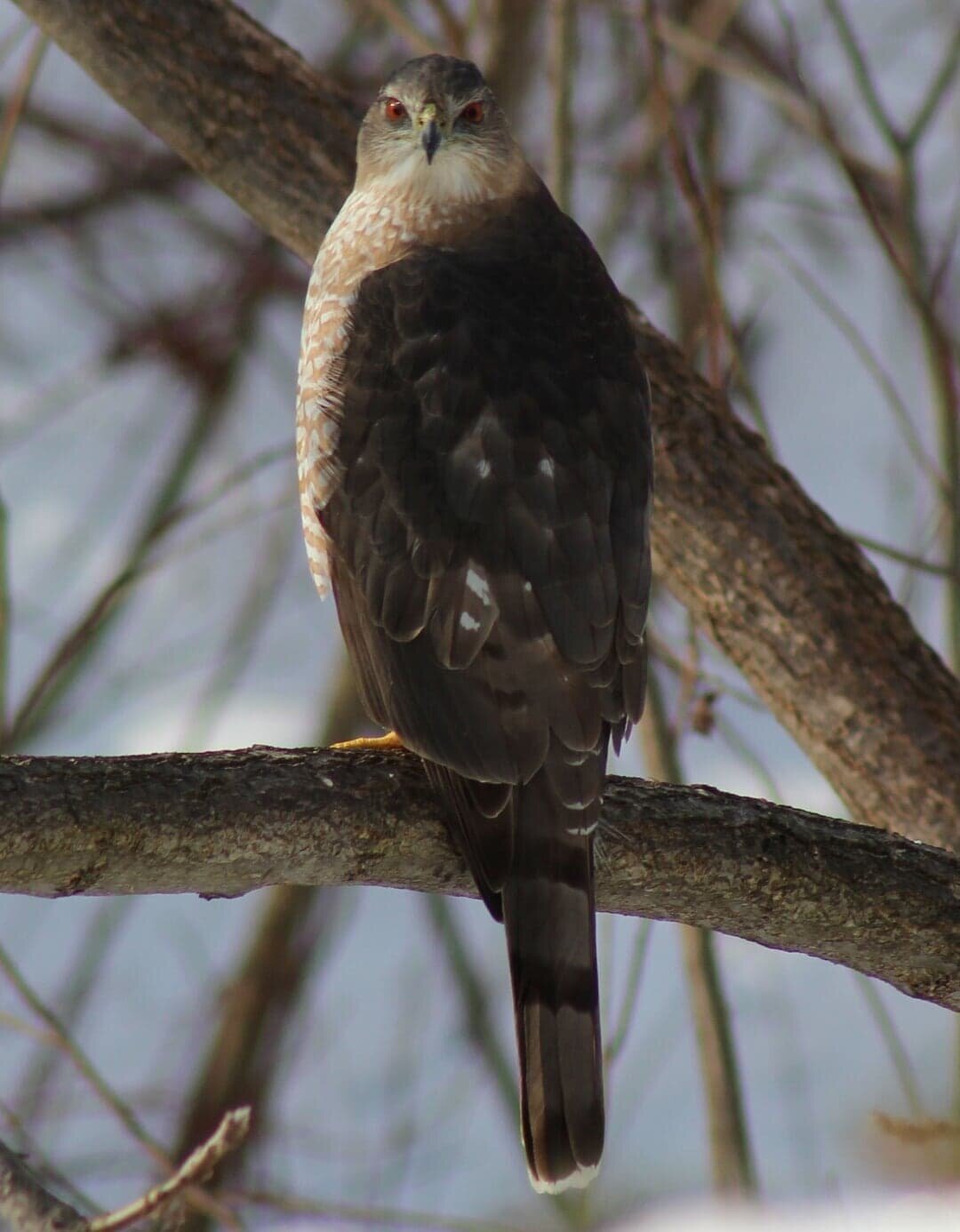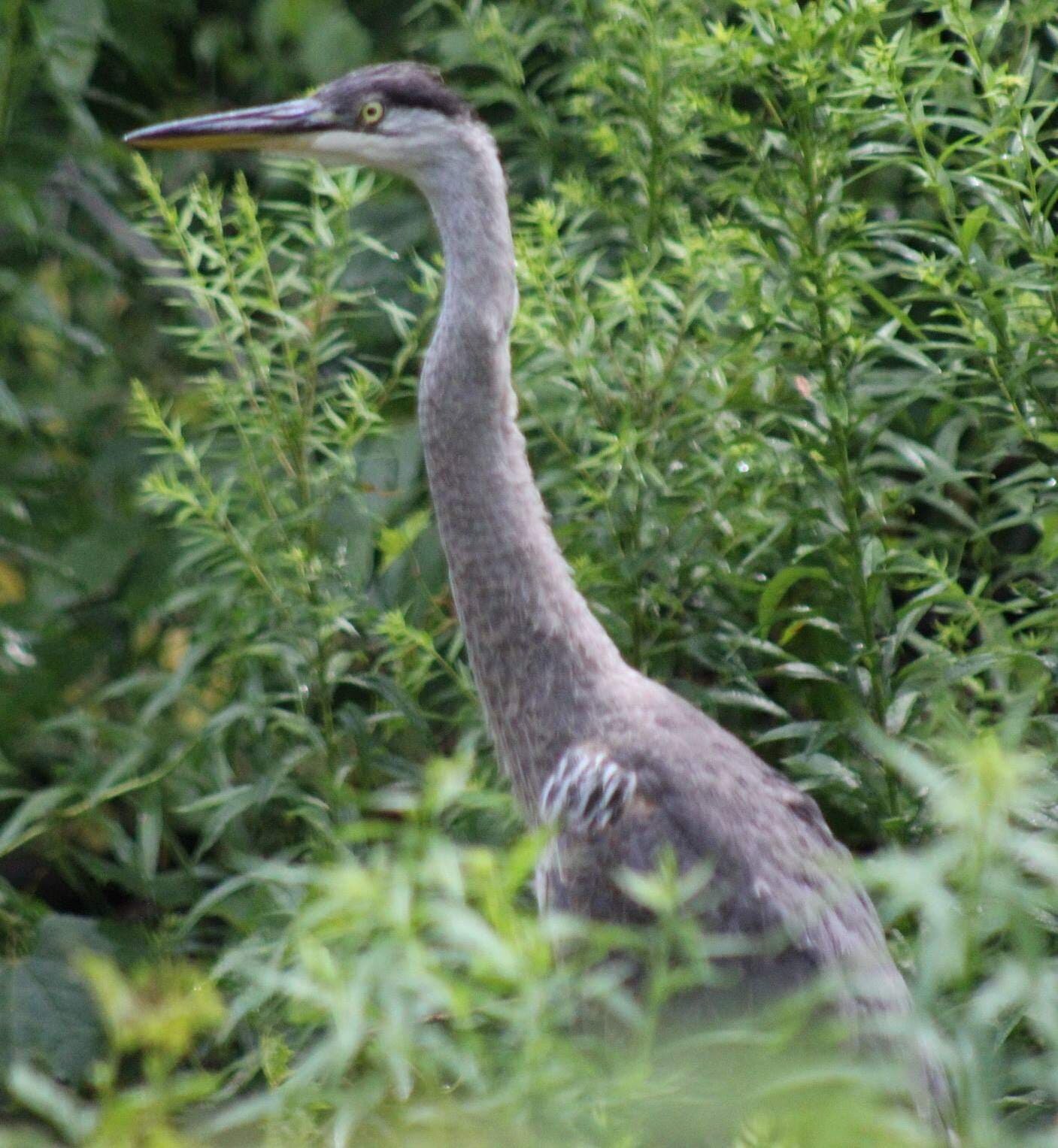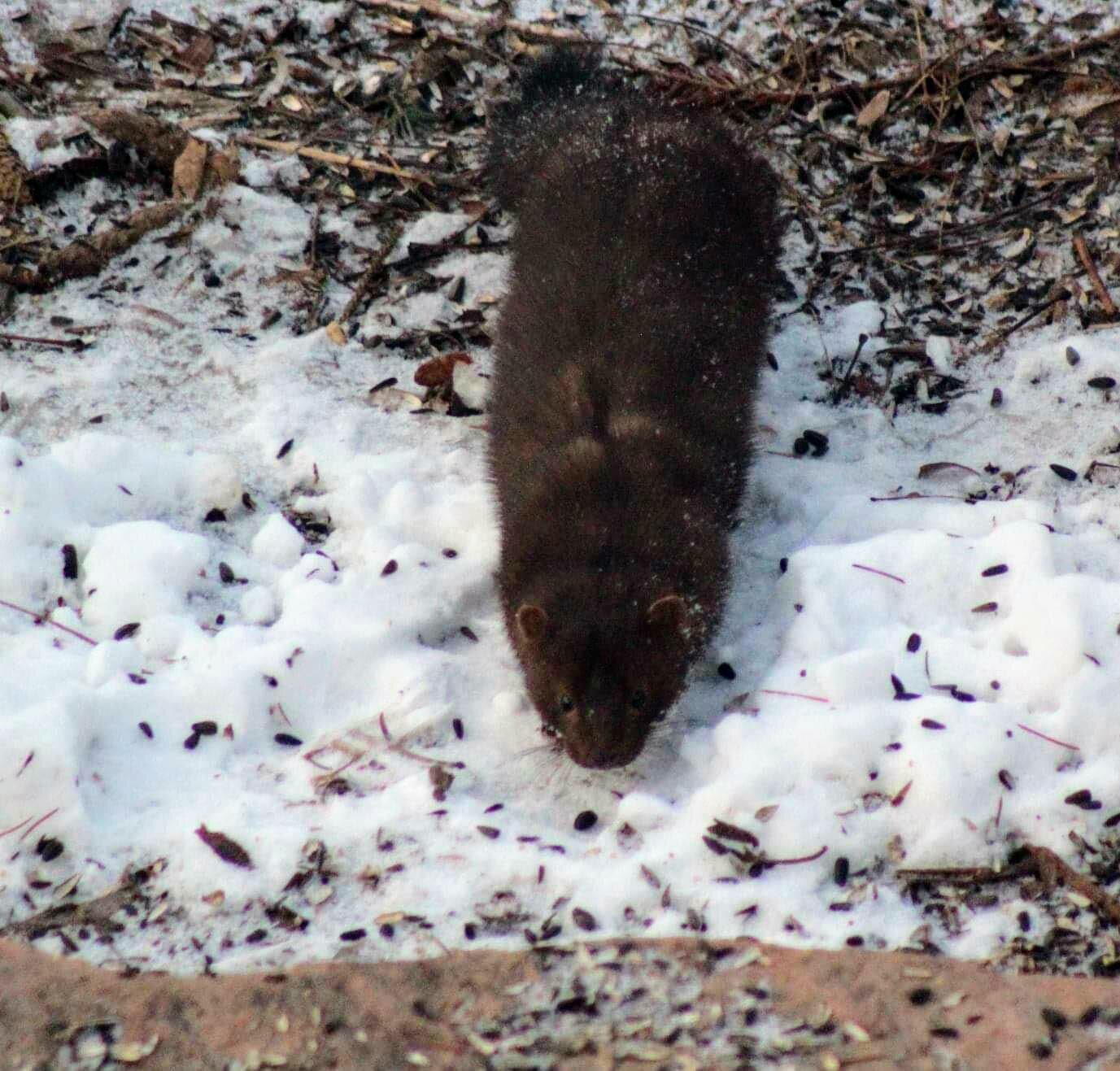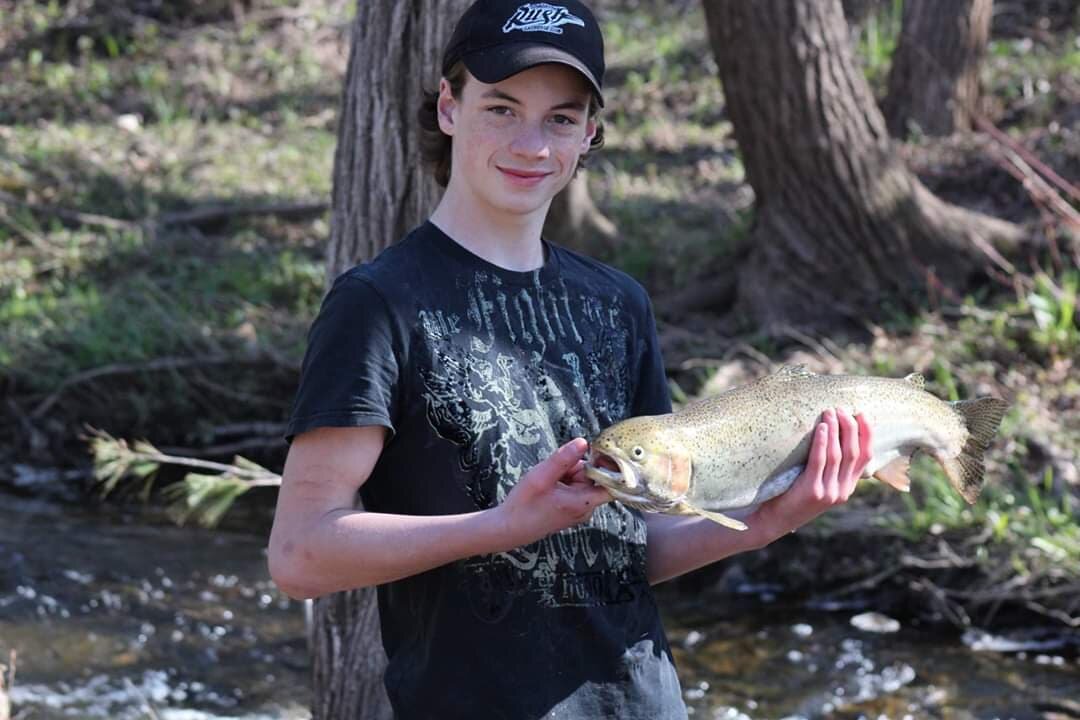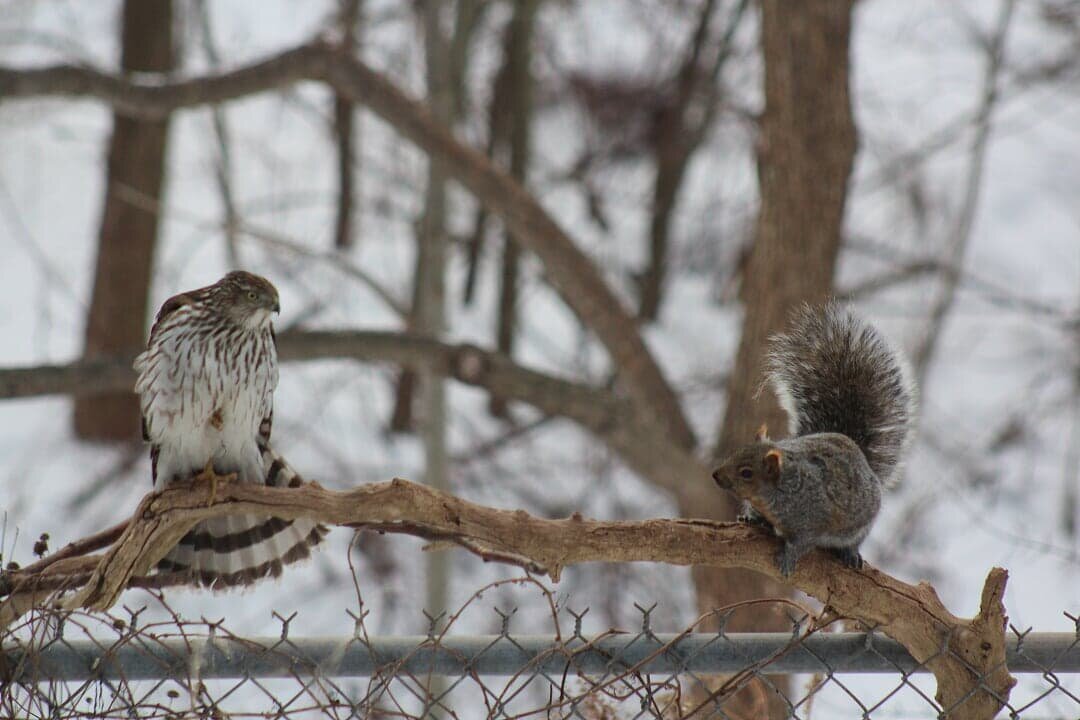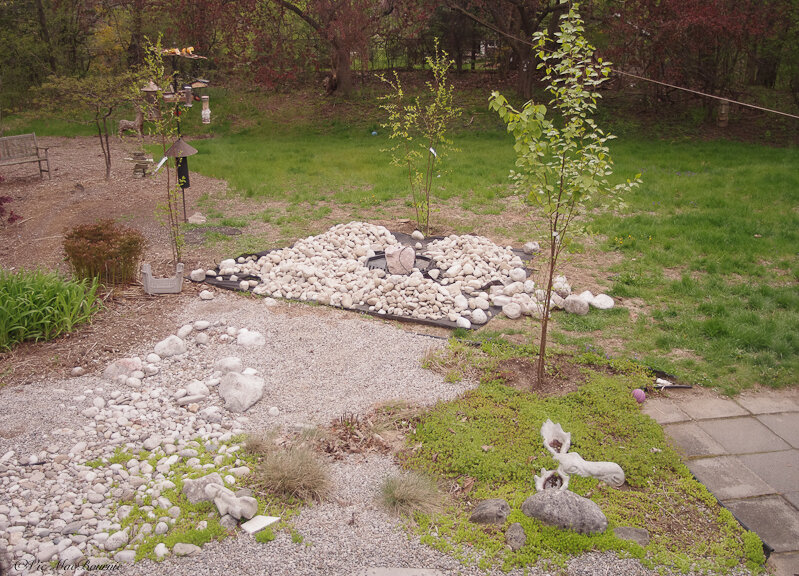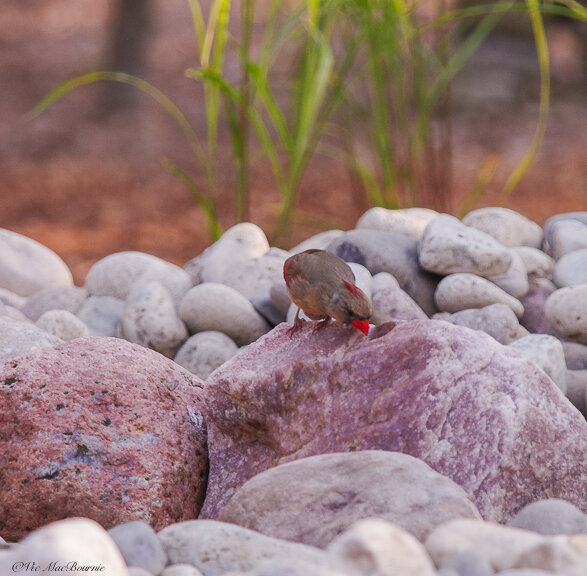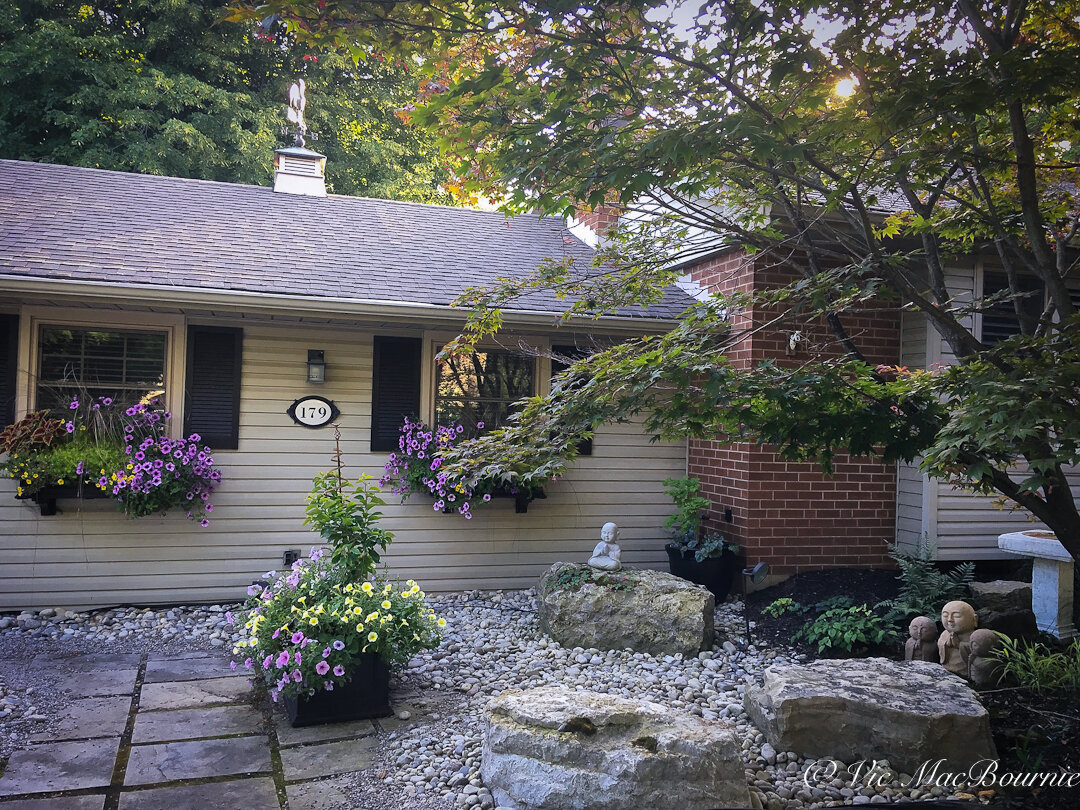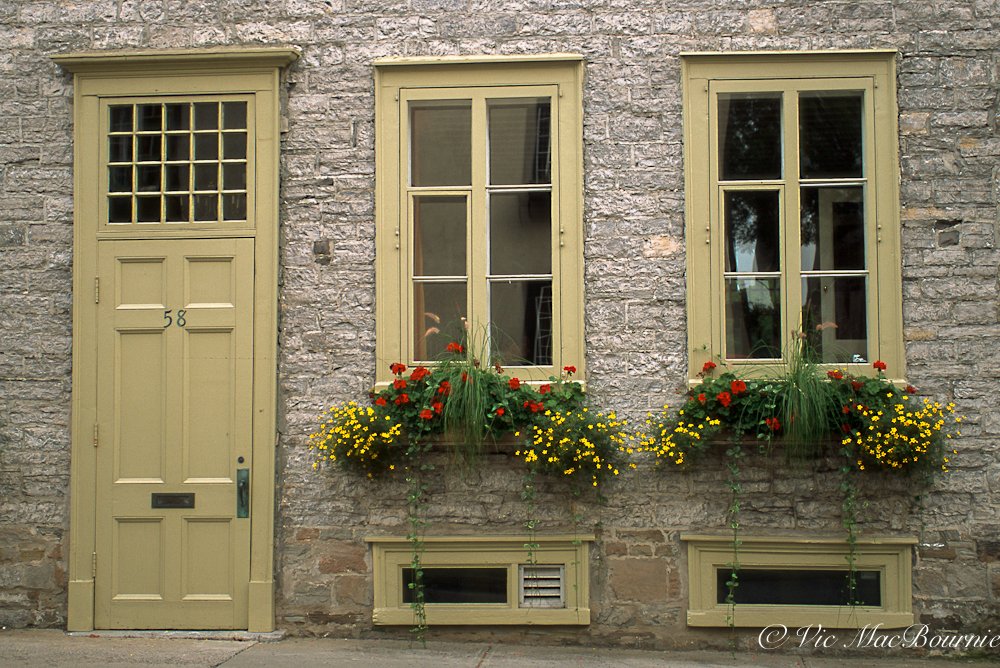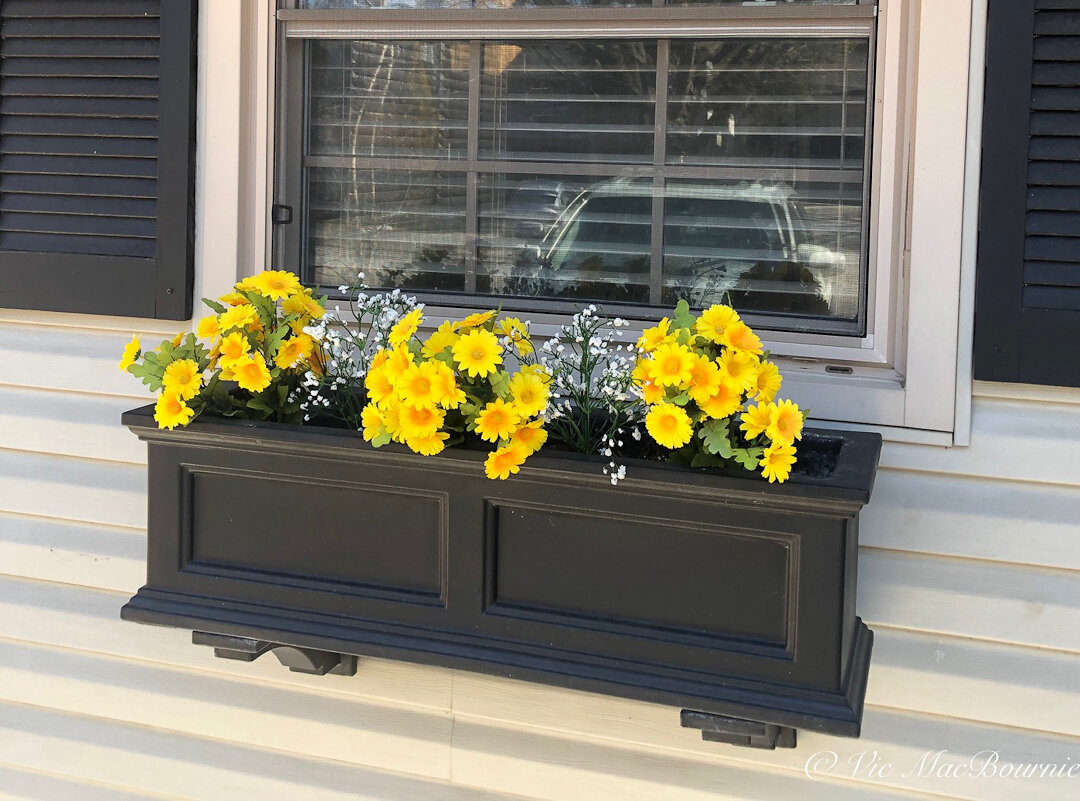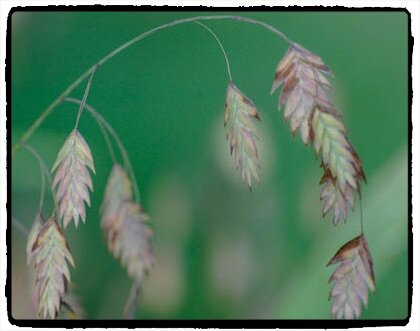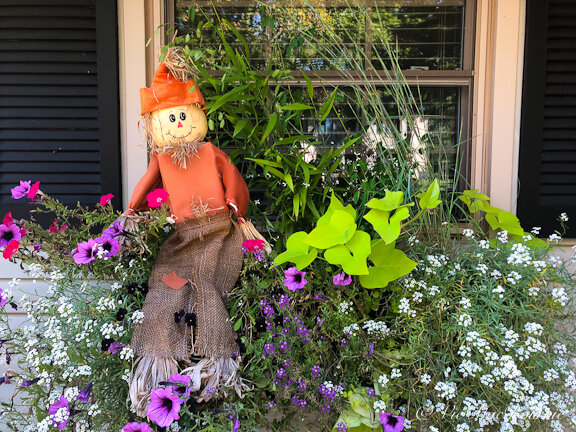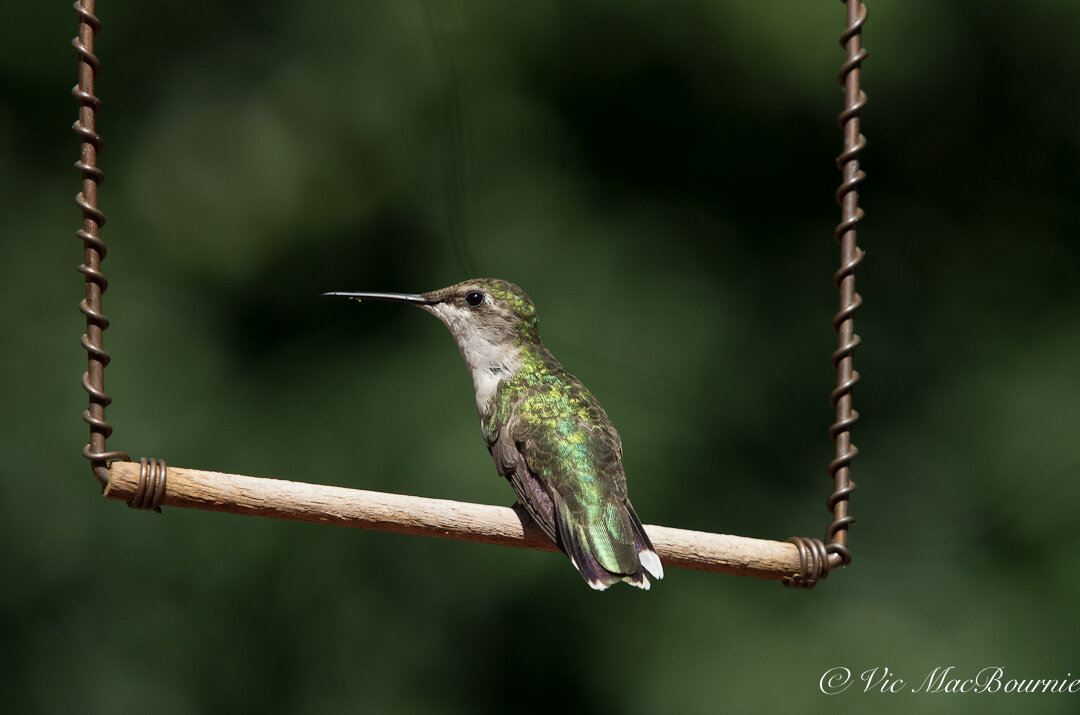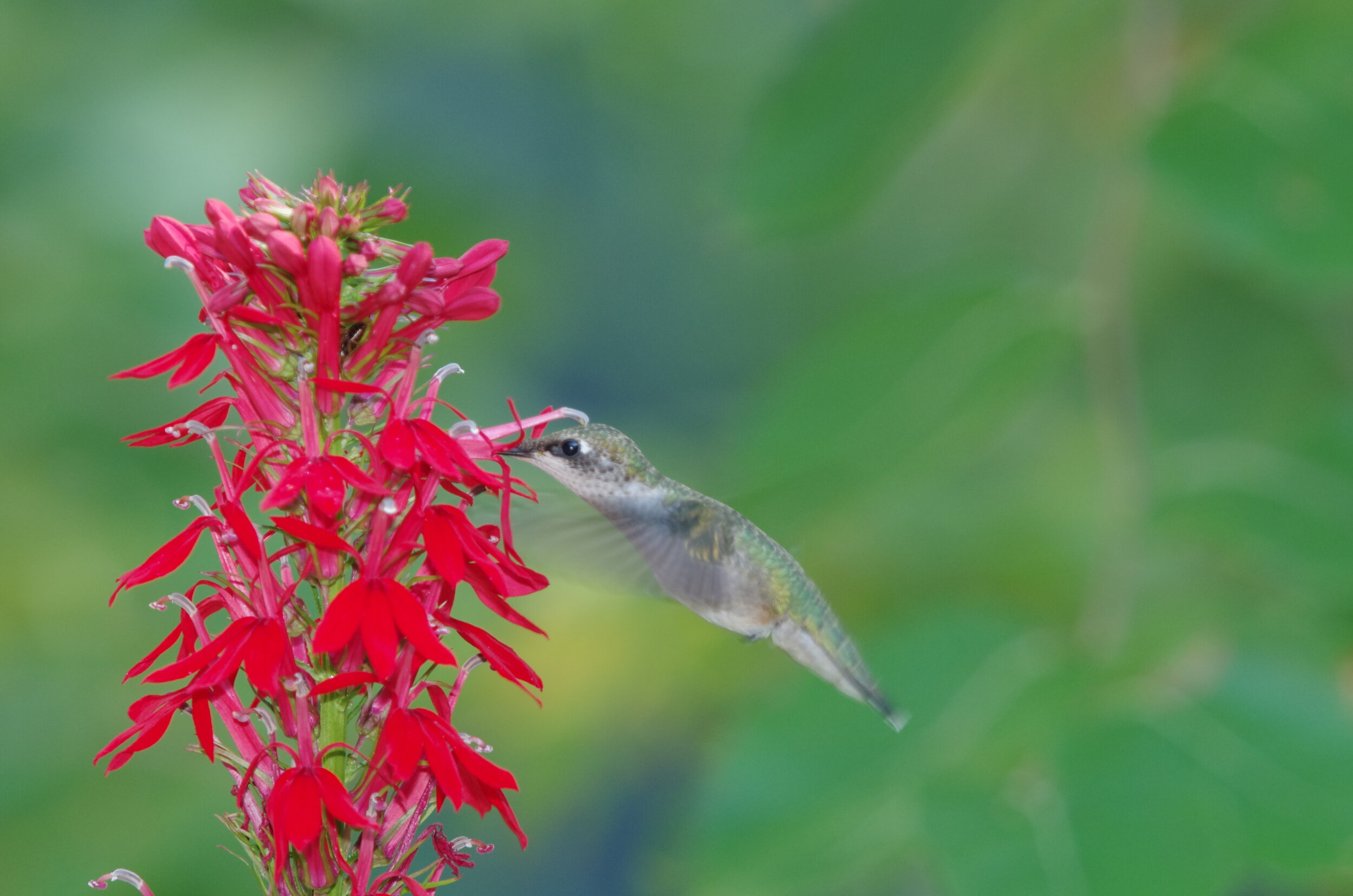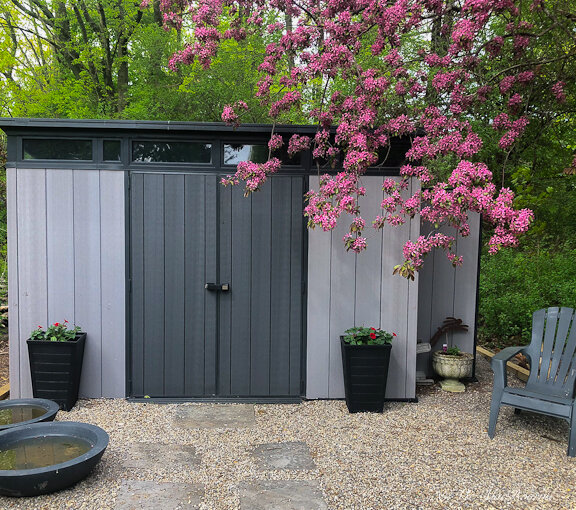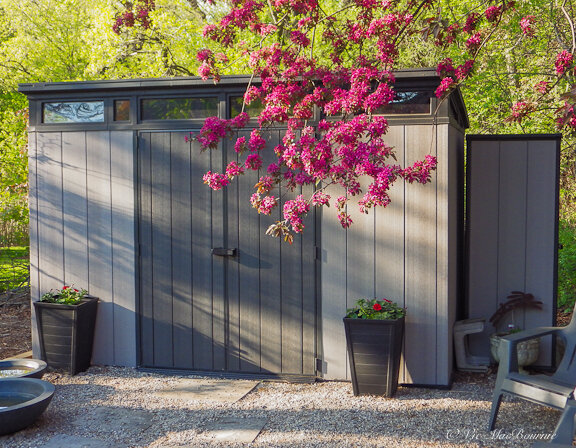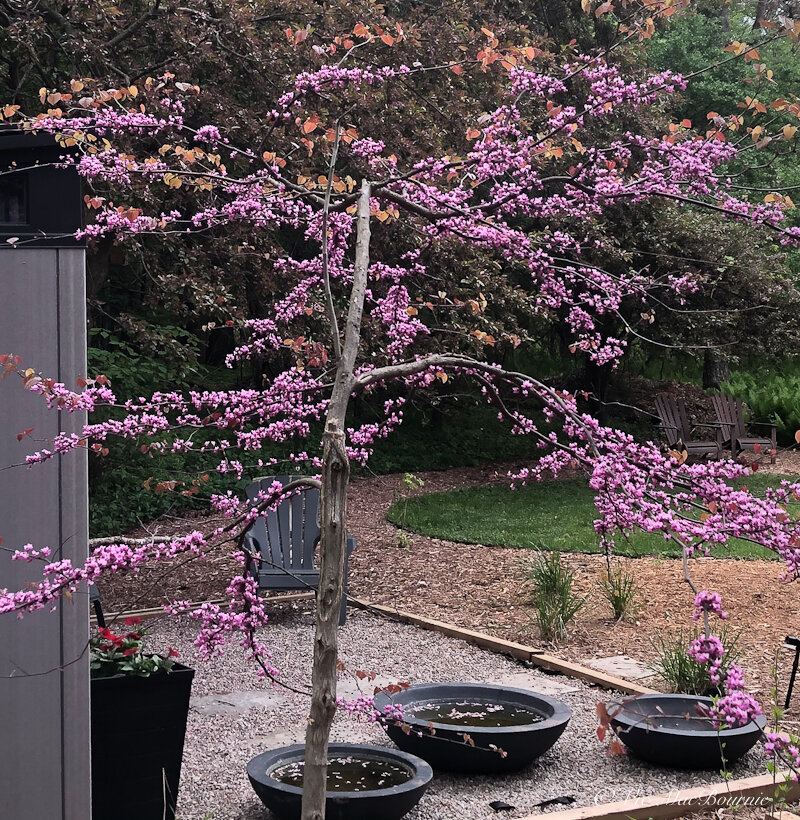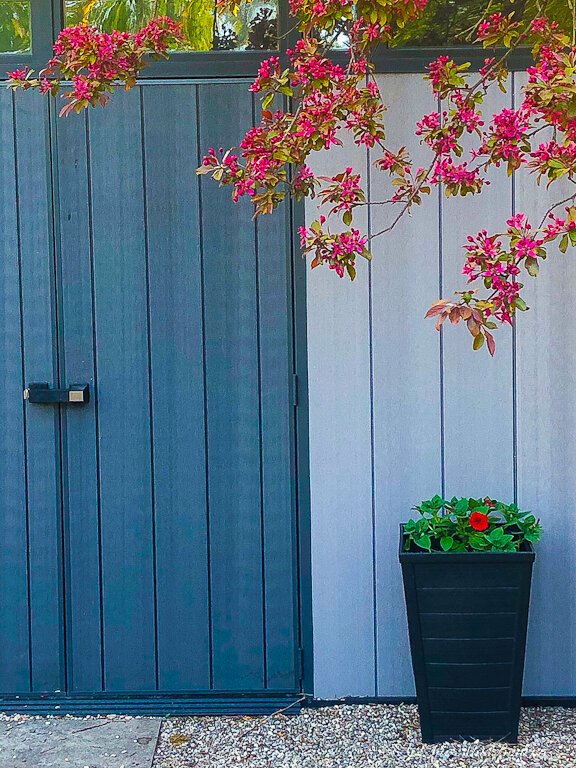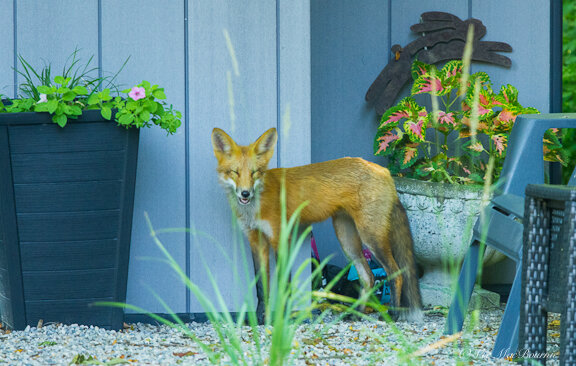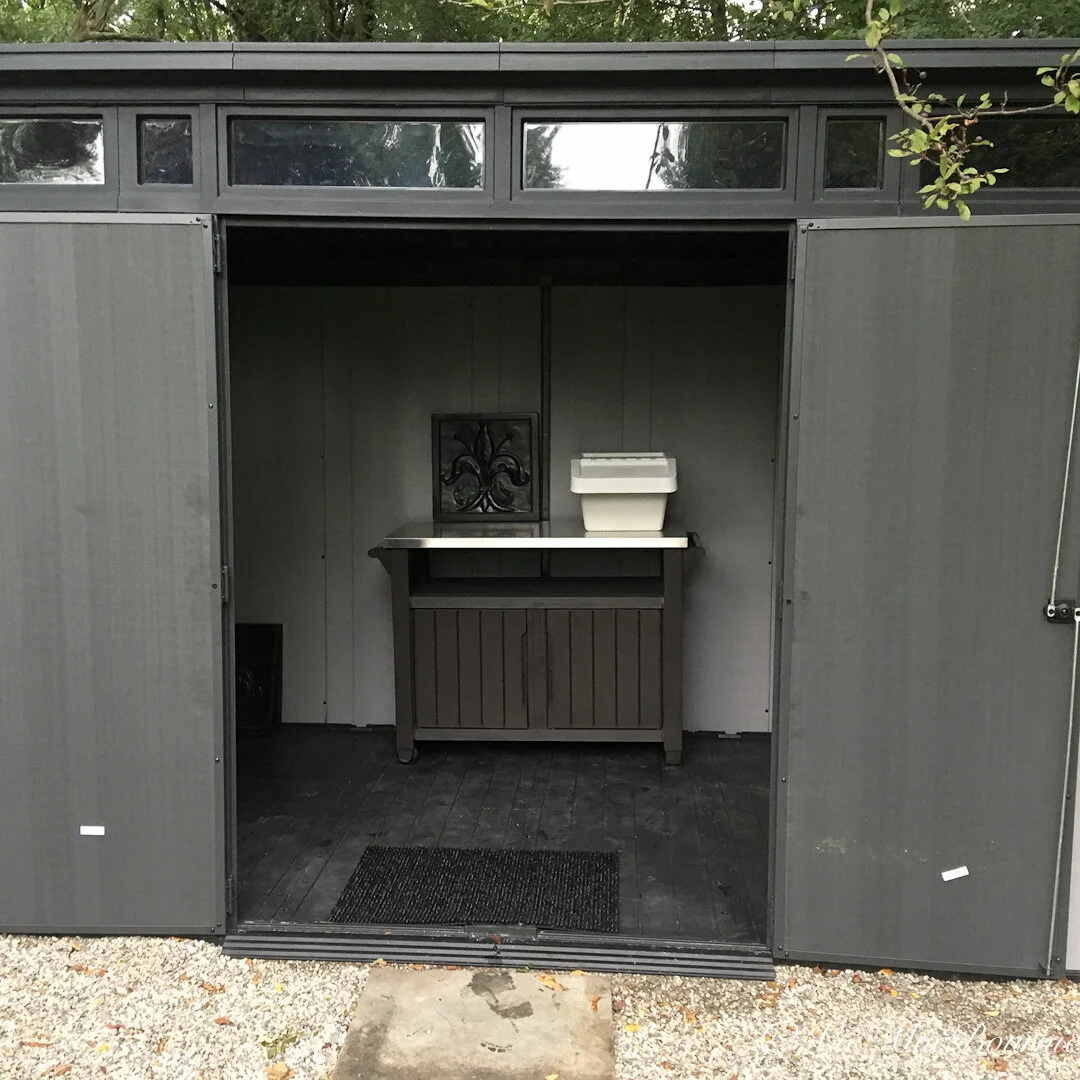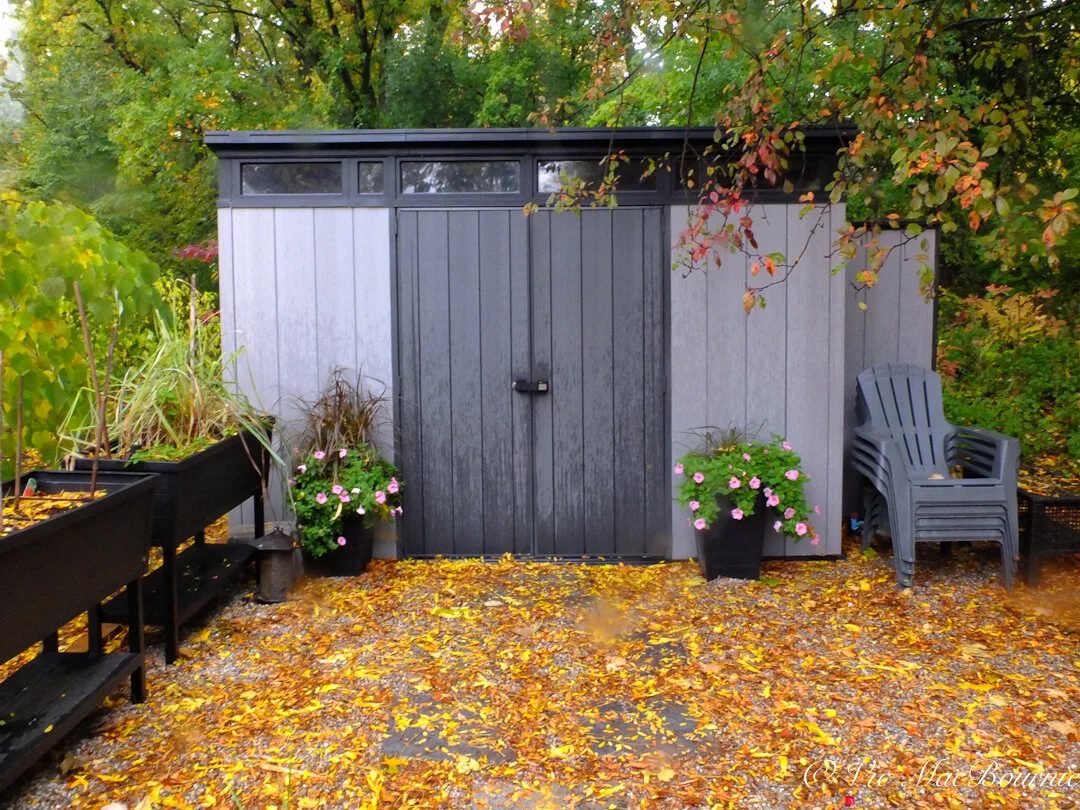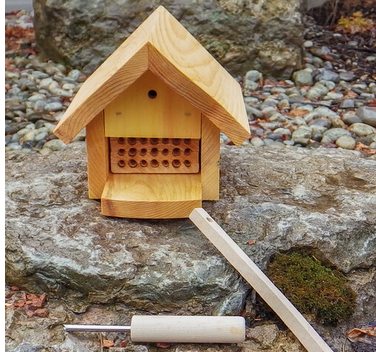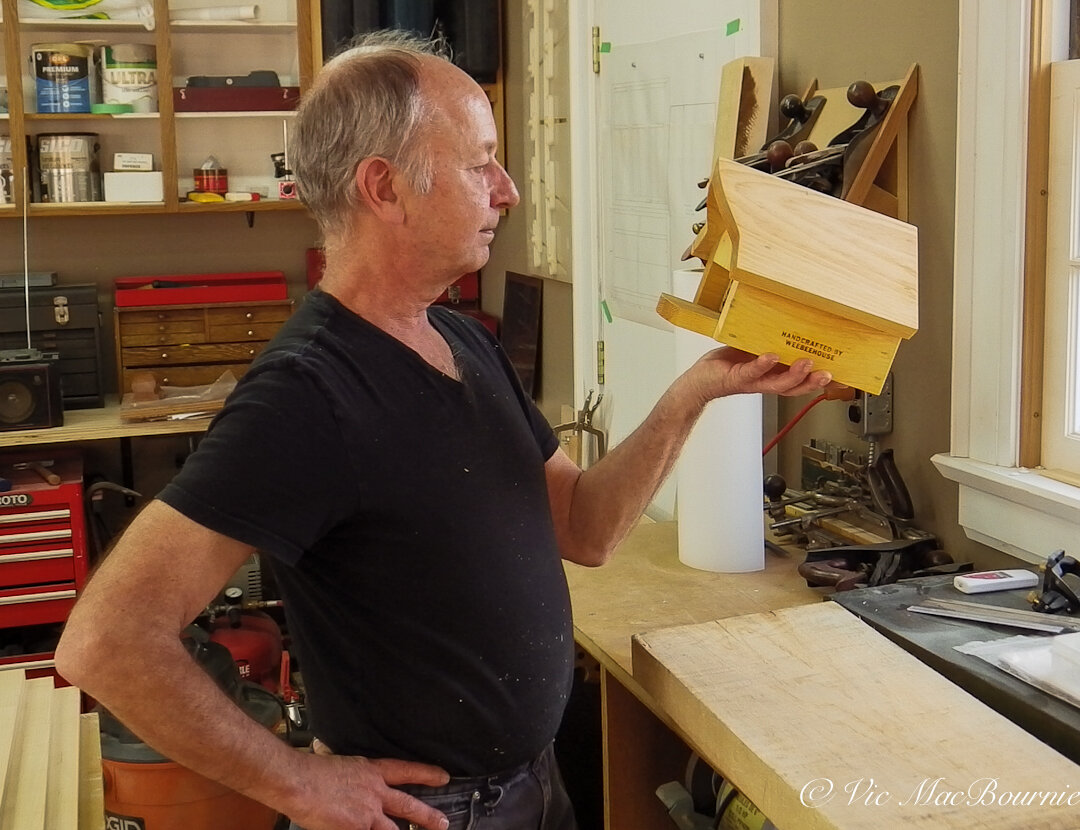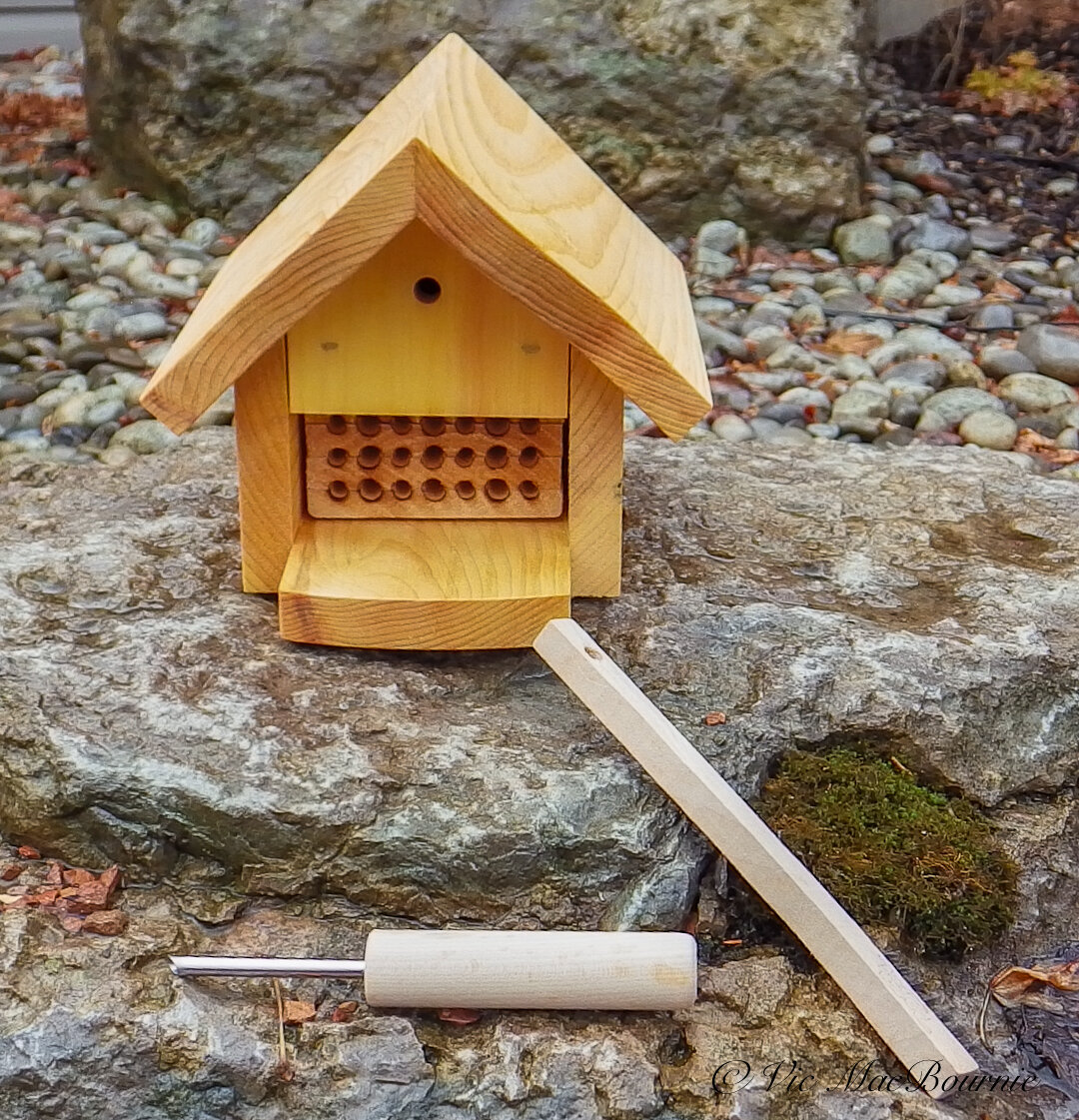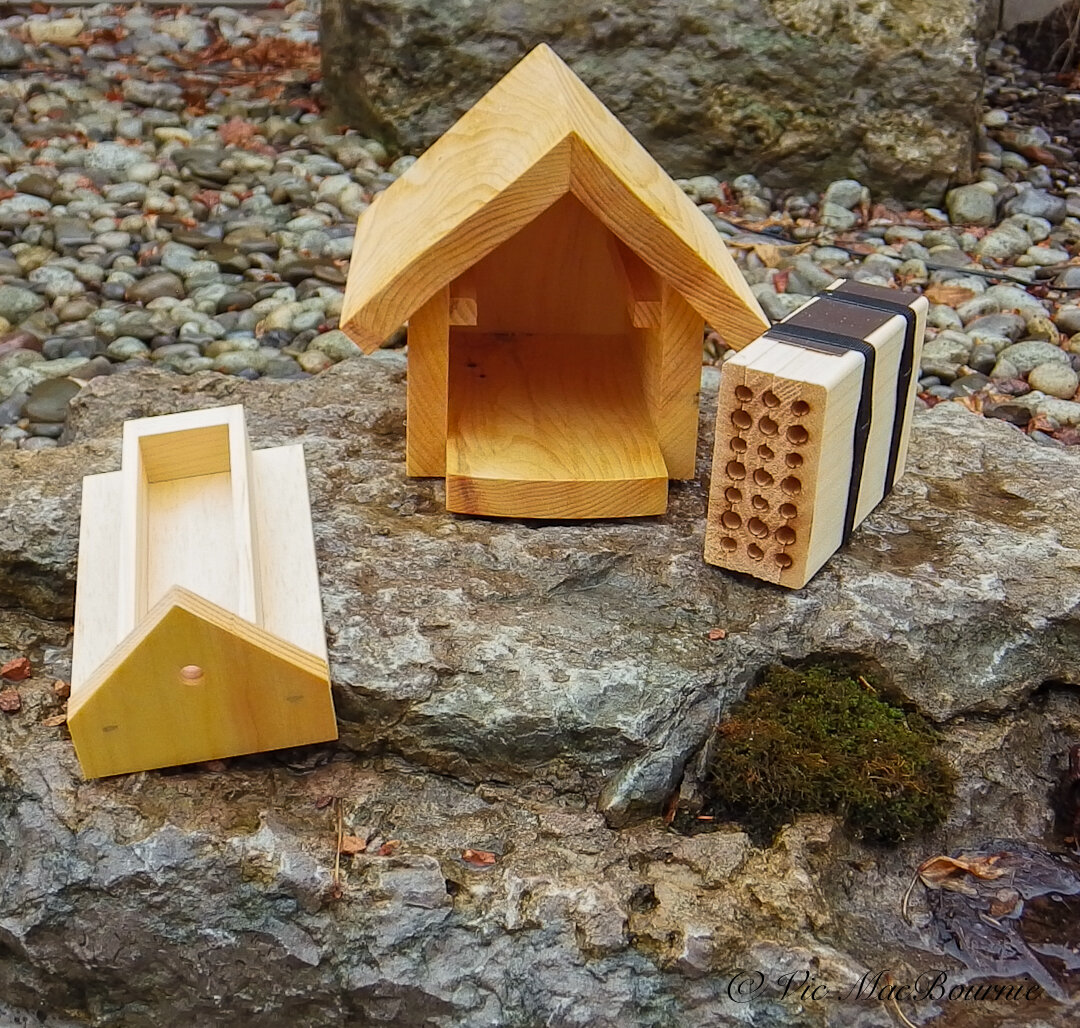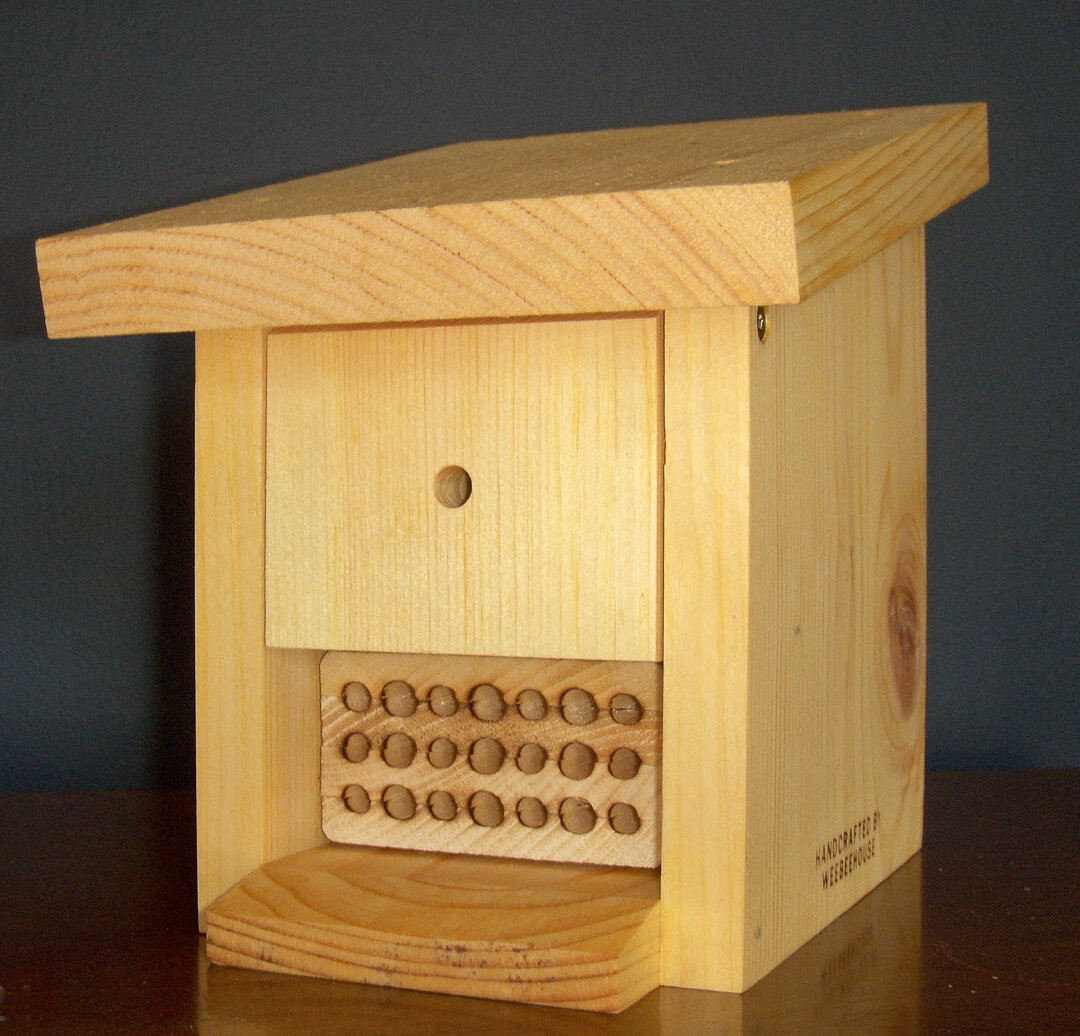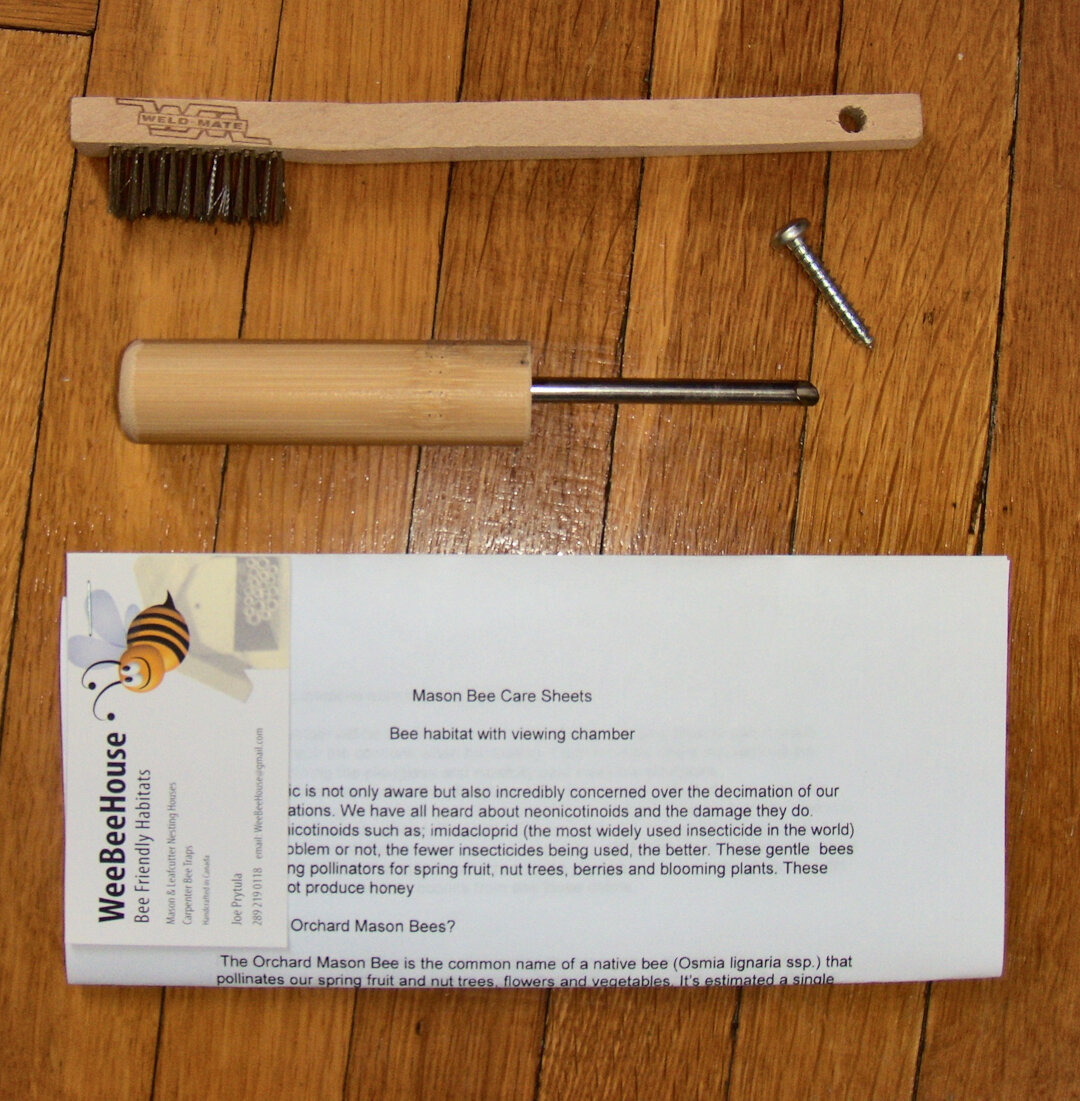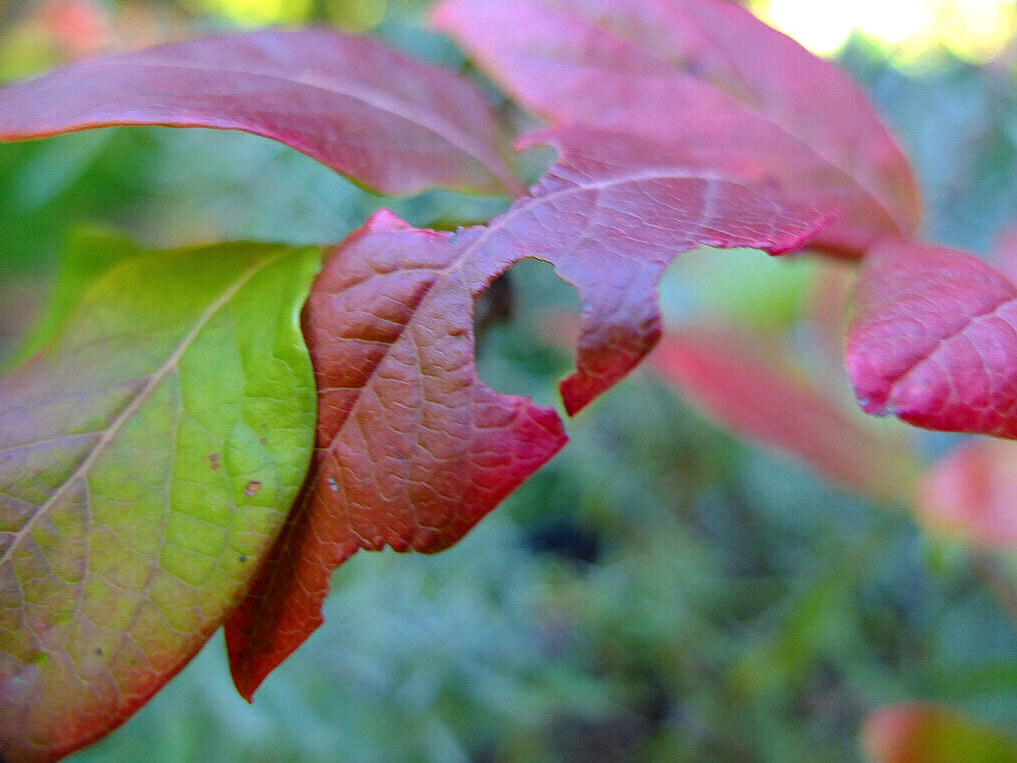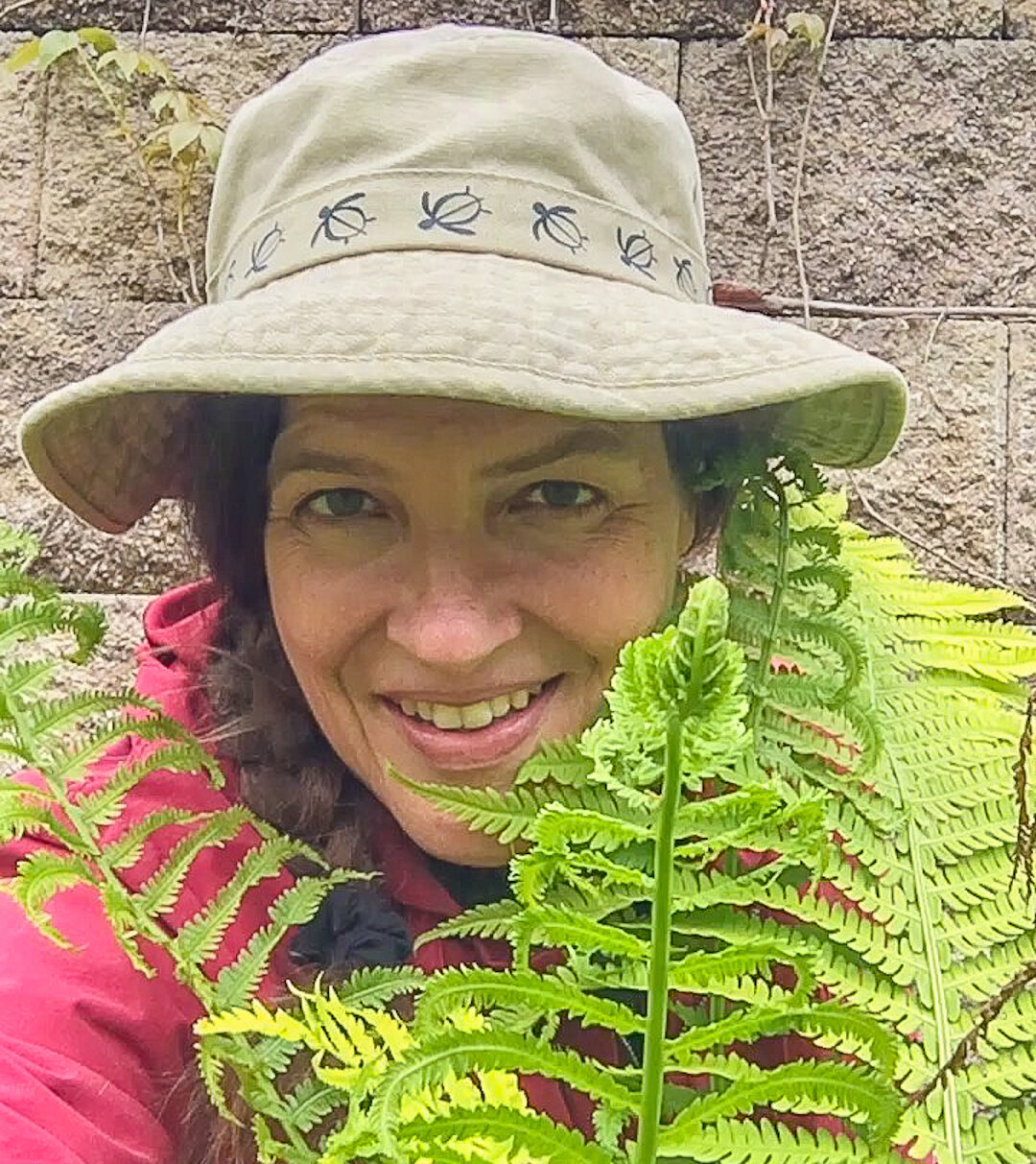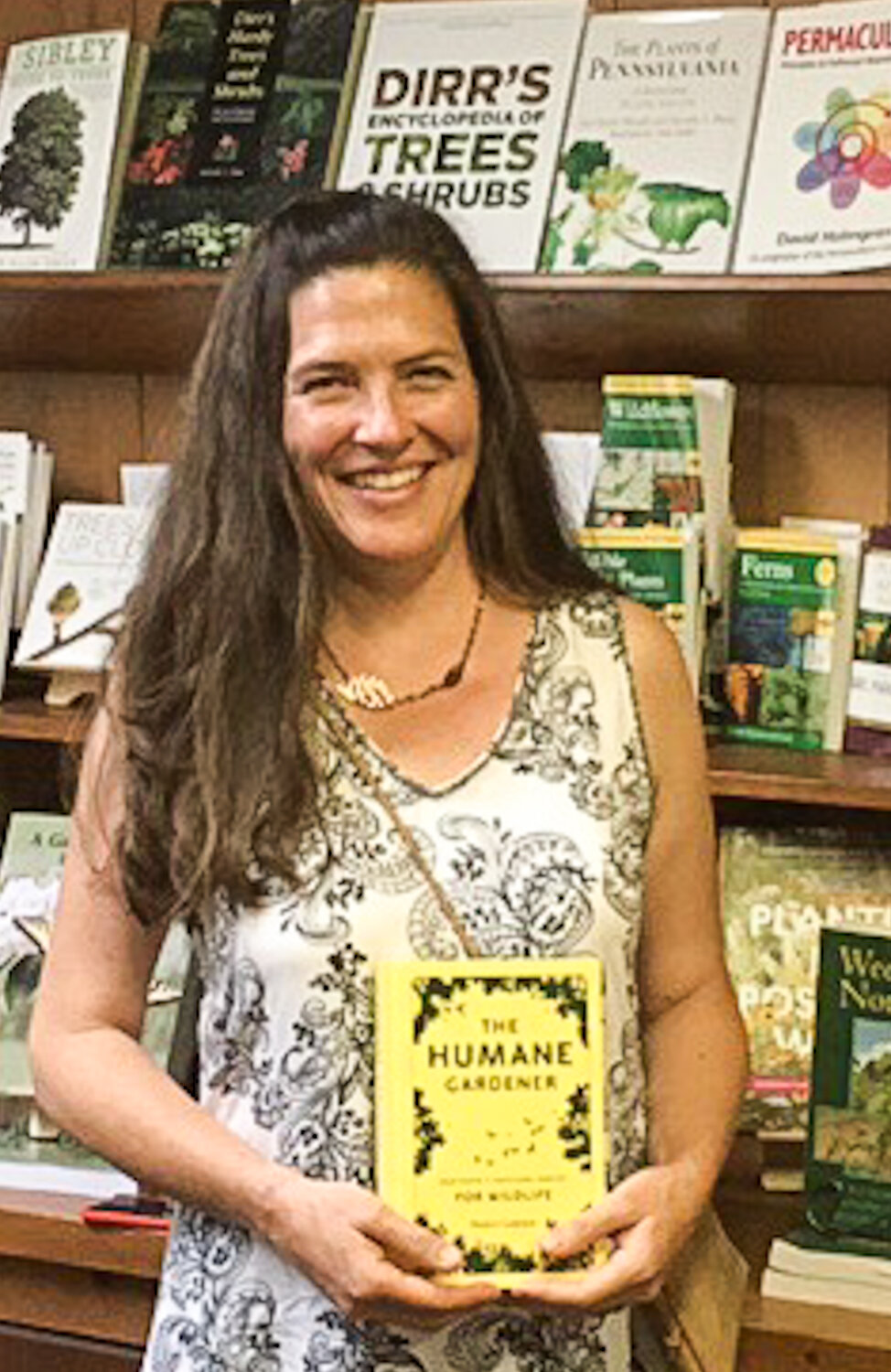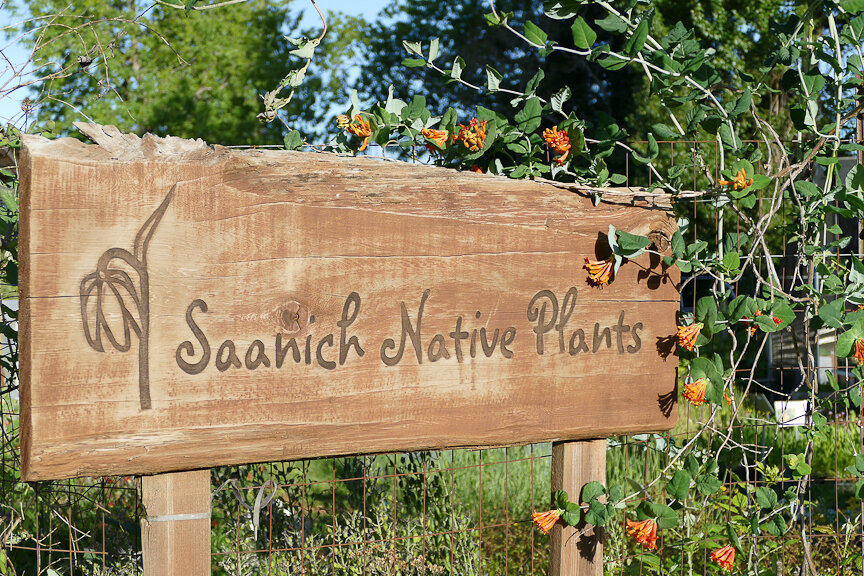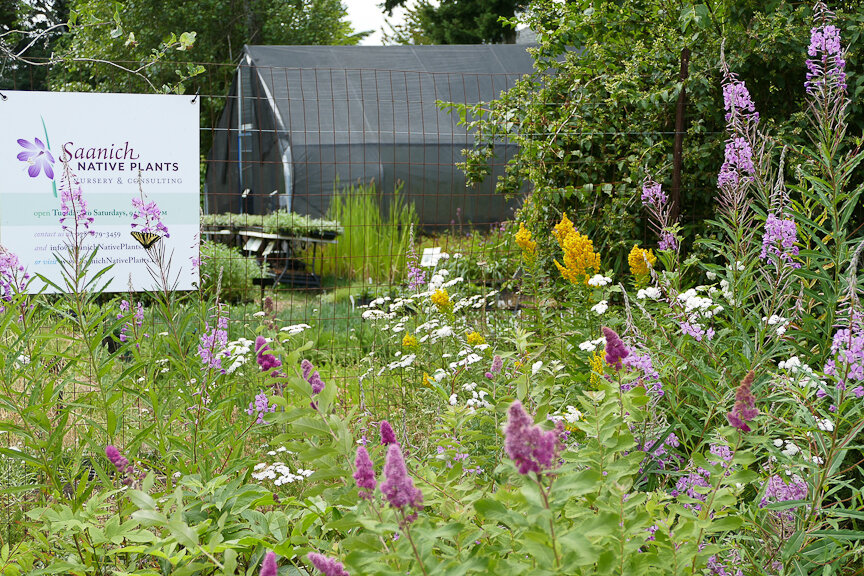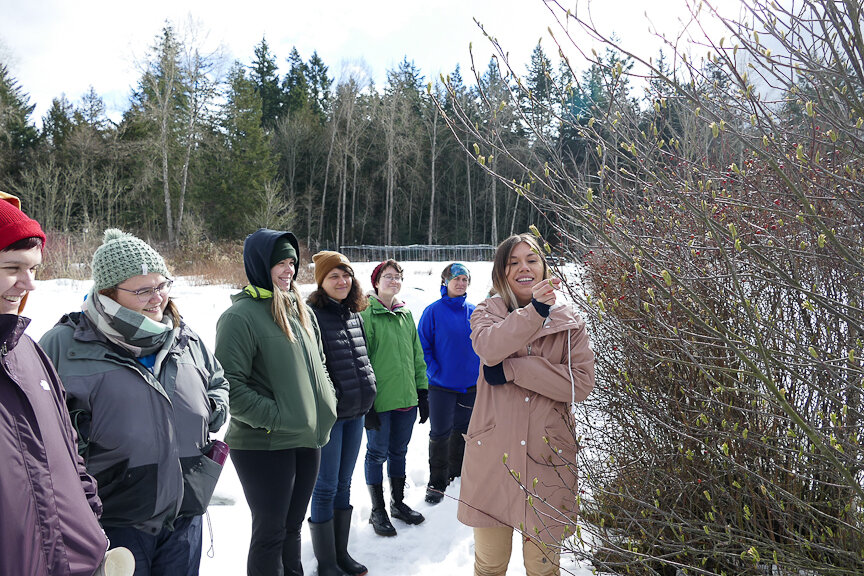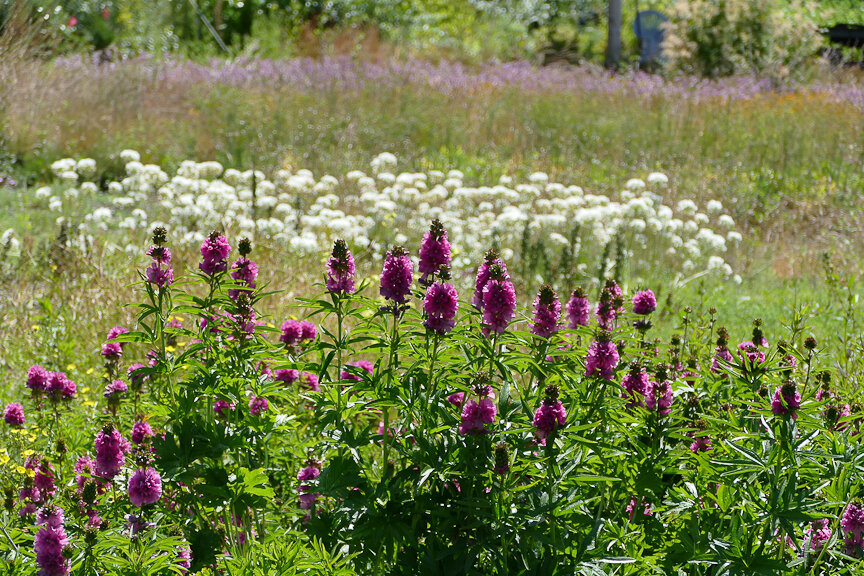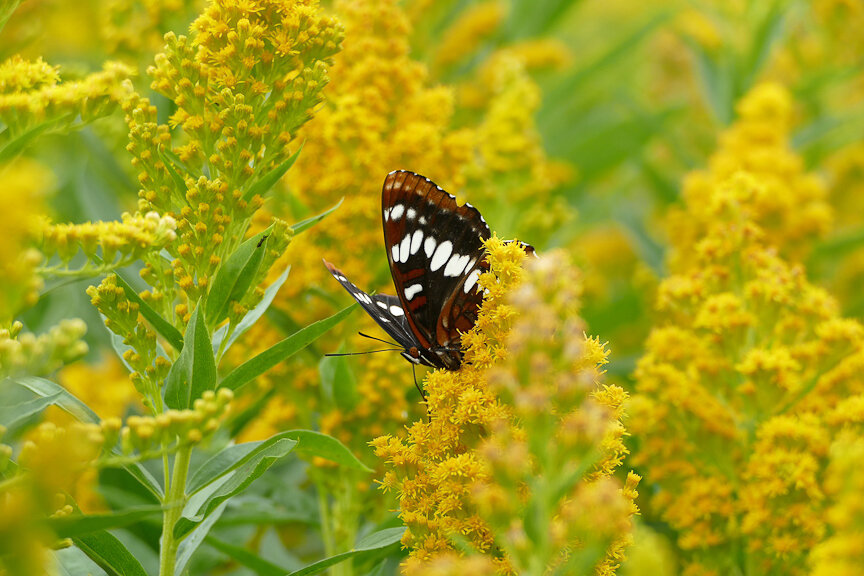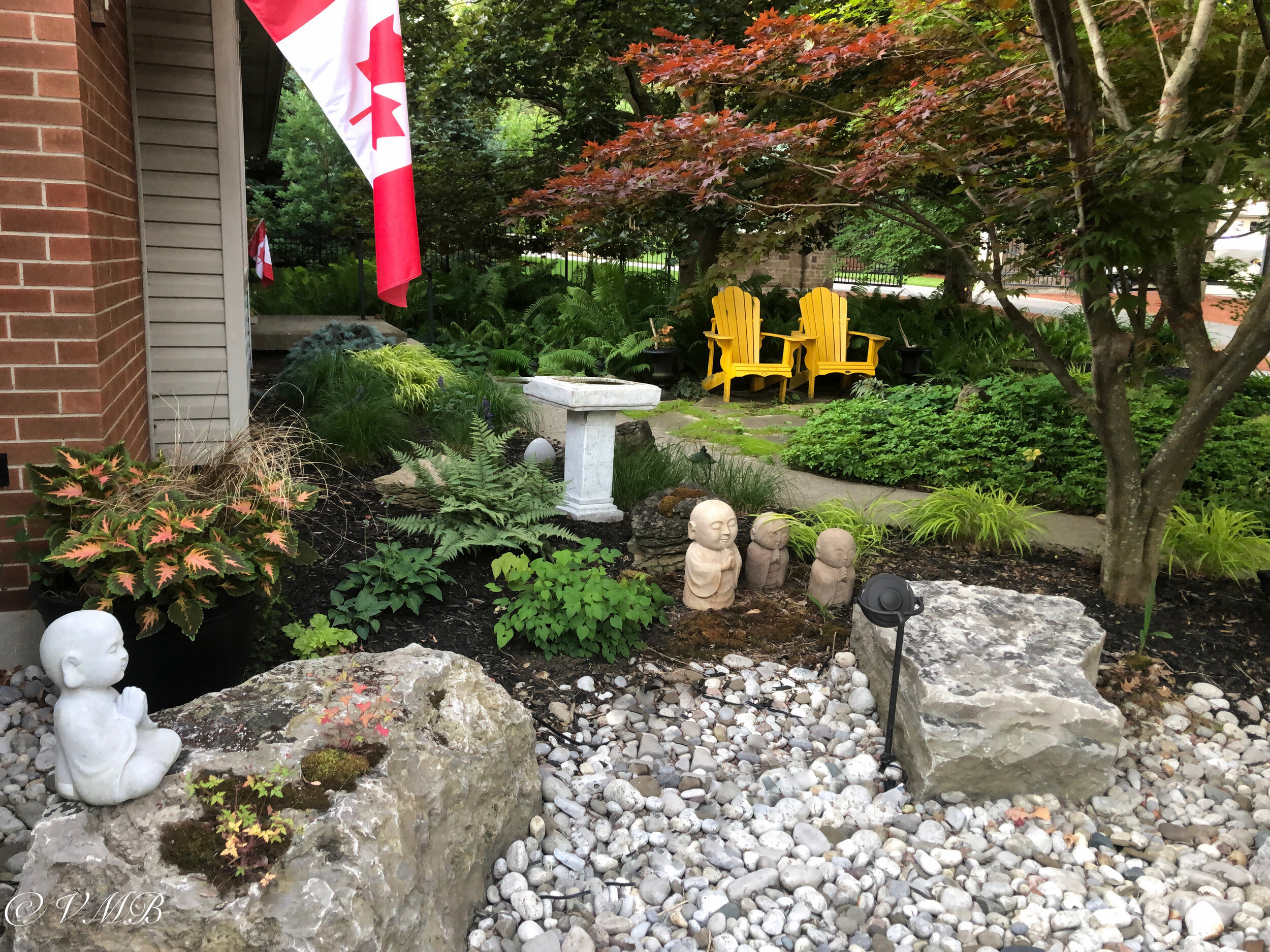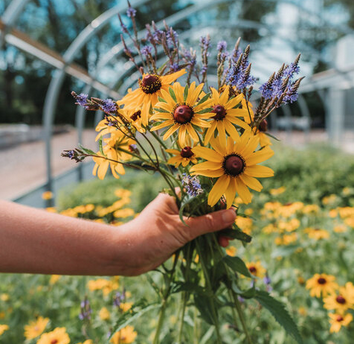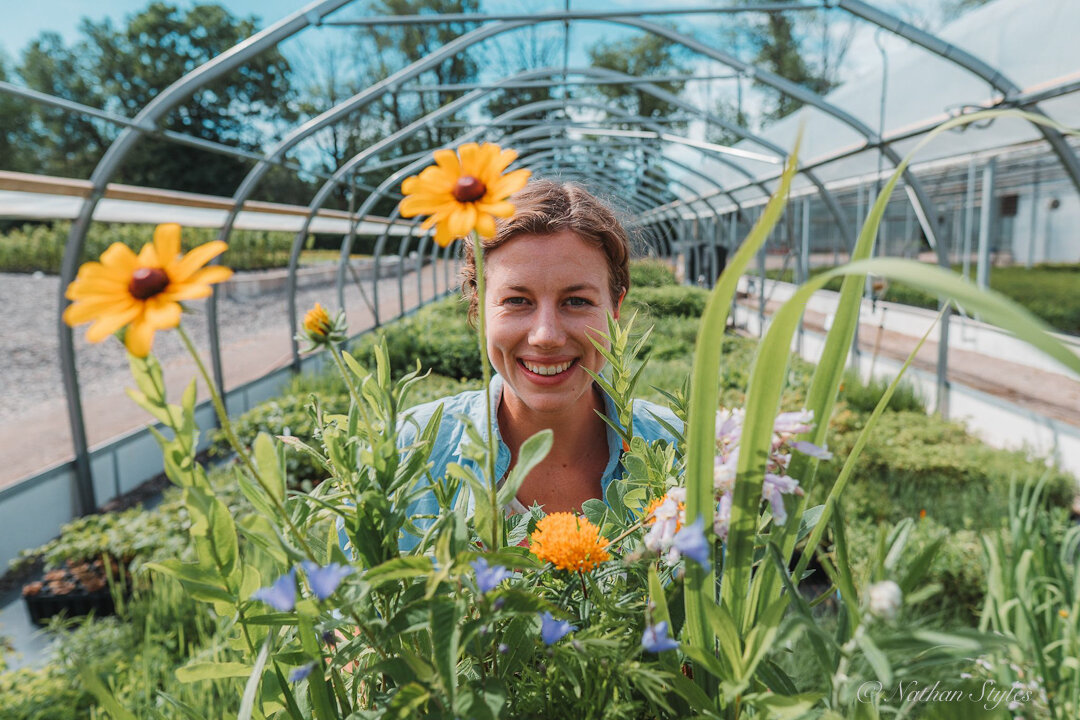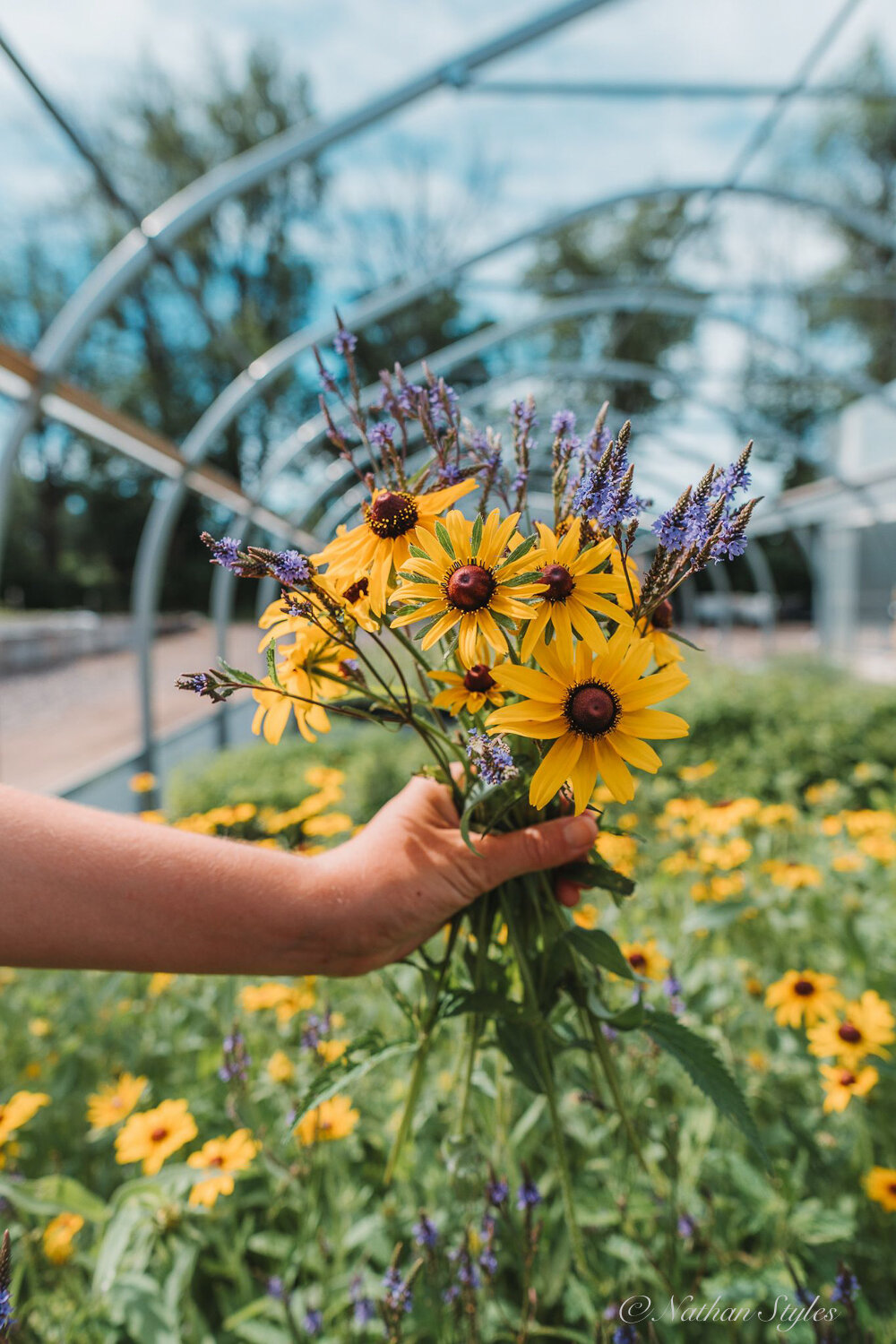Expert Tips for Attracting Birds to Your Backyard Fast
Attracting birds to your backyard involves providing them with a number of key elements including food, water and shelter. This guest post that Ferns & Feather participated in touches on all these elements.
This is a guest article that Ferns & Feathers participated in and that was originally composited by Mike Cahill for Redfin blog in Seattle, Washington. To check out the original post, go here.
When trying to attract birds to your home creating a habitat that serves their basic needs is essential. Food, water, and shelter are key but aren’t the only variables you need to consider. While these satisfy their physiological needs, birds also prefer a safe space where they can socialize freely. That’s why we reached out to the birdwatching experts from Vancouver to New York to provide you with a few creative ways to attract birds to your home.
Foster a bird haven
The most effective way to attract many different species of birds to your yard is to offer a wide variety of food sources including seeds (especially black oil sunflower seeds), suet, nuts, jelly, sugar water (for hummingbirds) and fruits. Also consider installing native plants, fruit-bearing trees, and shrubs in varying degrees of density in your backyard to promote an attractive, safe habitat for the birds to forage, roost and nest in. It’s also a good idea to put out a birdbath or install a small pond garden so that the birds have someplace to bathe, cool off and grab a drink, something that is particularly important during the summer months. Lastly, make sure that you clean your feeders and birdbath periodically and keep your feeders full. Following these steps, it won’t be long before your backyard will become a bird lover's paradise! - Birdwatching N.C.
It’s important to provide multiple clean water for local birds.
This spring, consider turning your backyard space into a welcoming haven for birds! The key to attracting birds to your yard is by providing for their basic needs. Growing native plants is a great way to encourage birds to settle in your yard by offering natural food sources and shelter. In addition, you can add bird feeders with a variety of food types to entice many different species. Proving a water source is another great way to attract birds because of course, they all need water! Putting a birdbath in your backyard is an easy way to provide a place that birds can drink and bathe. A couple of other important things you can do to help out our feathered friends are to avoid using pesticides and herbicides, which are harmful to birds and also to keep cats out of your yard! Have fun birding and good luck! - Meewasin
Incorporate a variety of feeders
Get some hummingbird feeders up in various parts of your garden. Hummers can be territorial so we suggest at least 2 or 3 different feeders in different corners. Keep the feeders well stocked with a 4 to 1 dissolved mix of water to sugar. Once the birds know there is a regular supply of food they'll keep coming back. Take care to clean the feeders every day or so, and replace sugar water which ferments quickly on hot days. It's not just about feeders - get some plants on the go too. Hummers love brightly colored tubular hanging flowers rich in nectar. Reds and purples are perfect, like cardinal flowers, columbines and fuchsias. - Home Happy Gringo
While I get great enjoyment from my bird feeding stations, providing natural food sources to our feathered friends is always the goal we should aspire to in our gardens. I have written a comprehensive post on feeding birds naturally. You can read about it here.
Don’t underestimate the importance of a clean water source
Our Friends know that their own yards can serve as vital mini-sanctuaries whether you live in the rural vast expanse or eastern Oregon or an urban 'jungle'. We have a few tricks for ensuring that you are supporting the birds that may find themselves in your backyard. First things first - food is not enough. Clean, freshwater is a vital and often overlooked necessity for many birds. A resident of Burns, OR and Friends of Malheur Board Member, Rick Vetter, says, "I use a combination of water, feed, and bait to attract a variety of birds to my backyard in winter." Water can be a shallow bath or bubbler and should be cleaned regularly. Rick continues, Feed consists of 2,000 lb of cracked corn and black sunflower see in several feeders supplemented with suet and a large plastic container of skippy super crunchy peanut butter with holes for wood pegs and slots for access to the peanut butter." What about the bait you ask? Well, Rick has a unique approach to that as well. " Bait consists of California quail and Eurasian collared doves eating the feed and in turn, they attract northern goshawks, Cooper’s hawks, sharp-shinned hawks, red-tailed hawks and northern harriers that feed on them. Merlins feed on the smaller birds. - Malheur National Wildlife Refuge
Try planting local natives
Firstly, I recommend planting local native plants like the Firebush (Hamelia patens). This plant is very attractive to hummingbirds and insects, therefore attracting other birds like warblers and flycatchers. Something important to keep in mind is that this plant has a tropical and subtropical distribution. Therefore it attracts birds suited for those conditions that the plant is also well adapted for. For that reason, before planting your garden or designing your landscaping, you have to investigate the local native plants in your area. Also, another helpful and easy way to attract birds in the garden, for example, is if you have old tree trunks on your property. These dead plants can provide a suitable habitat for woodpeckers, owls and in general birds that need a cavity to nest inside. - Drake Bay Birdwatching
Planning your outdoor space with bird-friendly plants that flower at different times of the year will attract a variety of birds throughout the flowering season. By planting early bloomers you will be providing a food source for early summer migrants (or straggling fall migrants) and by planting late bloomers you will be attracting birds leaving a little later (or fall migrants arriving early). And of course, you’ll be providing for your resident birds as well! To learn how to spot some of California’s most notable birds, check out our Guide to Birding. - Santa Clara Valley Open Space Authority
The most effective way to encourage a variety of birds to your yard is to plant as many native trees, shrubs and flowers as possible. These are plants that the native birds have come to know and depend on over centuries. By using more native plants in your backyard, especially those that flower profusely in spring and follow the blooms with berries, you will not only encourage birds and other fauna to visit your yard, you will also encourage them to stay in your yard and call it home. - Ferns & Feathers
Install a moving water feature
A simple, cheap, clean and effective way to attract birds to your garden is to install a moving water feature. Place a floating solar-powered water pump in the middle of your birdbath, surrounded by small rocks to keep it in place and to act as perches. Alternatively, if you want to DIY it, you can make your own "spring" out of a large plastic bucket with a lid (eg paint bucket) and a small solar-powered pump. Paint or decorate it to your taste, punch holes in the lid for the tubing and drainage back into the bucket, and place small rocks or stones on the lid to give it a more natural feel. The moving water ensures that it is oxygenated and stays clean for longer than still water, and it attracts the bird's eye more readily. - Birding in Spain
Originally published on Redfin
Proven Winners’ Idea Book is 41-pages of gardening inspiration
Proven Winners has put together an outstanding book of inspirational garden ideas that will be sending gardeners everywhere to their local nurseries in search of this year’s winners. Their 2021 Garden Ideas book, whether it’s in printed form or PDF, is one of the best deals on the net these days. Did tell you it’s free. Order it, download it – get inspired.
Budget friendly booklet is ideal for beginners
They say few things in life are free. Don’t tell that to Proven Winners.
The company that prides itself on creating some of the most outstanding hybrid plants and shrubs available have produced their 2021 Gardener’s Idea Book and it’s FREE.
For beginner gardeners on a budget, nothing gets better than that.
The idea book is a treasure trove of garden ideas that range from tips on creating “hot, sunny gardens” to containers aimed at attracting pollinators, and everything in between. The impressive 41-page oversized glossy booklet is full of impressive colour photographs that perfectly illustrate outstanding examples of Proven Winners’ plants and shrubs in real landscapes. The Idea Book is an inspirational journey through professionally designed gardens that is perfect for beginners and veteran gardeners.
Beginner gardeners will appreciate the many designs that are drawn out using a numbered planting scheme, matching the flowers with their placement in containers and in the landscape.
Although the 2021 book and download is exceptional, the experts at Proven Winners have recently released newer versions of their Gardener’s Idea Book.
• Be sure to check out the 2023 Proven Winner’s Gardeners’ Idea Book here.
• You can check out the 2022 version of the Gardener’s Idea Book here – 2022 Gardener’s Idea Book.
The book is more or less an extension of the company’s impressive and informative website you can visit at here.
You should be able to order the printed booklet from their site here.
Looking for more money-saving tips? Check out my in-depth article on building a garden on a budget.
The book starts with an introduction of PW’s annual of the year – Supertunia mini vista Pink Star Petunia described as a starry eyed Supertunia in pink and white.
The Gardener’s Idea Book from Proven Winners is a great resource for gardeners looking to add a punch of colour to their gardens either through containers or in garden beds.
Also in the spot light is their choice for Caladium of the year – an impressive white Caladium with a pink eye and green edge to the leaf aptly named “White Wonder.”
Both are impressive plants that are more than capable of standing alone in a container and still stealing the show. That trait can certainly simplify your container planting.
A feature in the booklet every gardener will appreciate is the series of seven different container plantings all featuring the annual of the year supertunia Pink Star and caladium Heart to Heart White Wonder.
An example of the attention and level of detail Proven Winners has gone to help gardeners create striking containers using their plants.
Container plantings simplified
The series of container plantings feature all the thrills, spills and fills you need to create outstanding containers for just about any part of your garden. The illustrated planting schemes makes finding the plants at your local nursery the most difficult part of recreating the colourful containers.
Not only have Proven Winners provided excellent photographs showing the details of each container planting, they also provide readers with examples of the containers in the landscape.
The booklet then takes a few pages to feature many of their other “plants of the year,” including a sweet little perennial Nepata named Cat’s Pajamas. PW describes it as a “little catmint that packs enormous flower power into a single square foot, blooming for months while delighting passing pollinators.”
There’s a variegated hosta with a nice ruffled edge, a compact, purple Buddleia said to be a “huge draw for monarch and viceroy butterflies.”
And to round out this year’s award winners is a hydrangea, a rose and a shrub.
Part of the appeal of the booklet is PW’s use of well-known garden designers to highlight their many offerings.
Youtuber Laura from Garden Answer is just one of several celebrity gardeners PW uses to promote their outstanding products.
Well-known gardeners lend a hand
Those who are like me and spend too much time on YouTube following their favourite gardeners are likely familiar with Laura of Garden Answer who is, as expected, featured in the first few pages of the booklet.
Laura is a popular Youtube gardening star who is a walking, talking advertisement for Proven Winners with her outstanding gardens that allow viewers to see PW’s many offerings in a garden setting.
Also featured in the booklet is The Garden Guy Norman Winter’s garden design of heat tolerant plants with a focus on a trio of heat tolerant, container plantings with an eye on pollinators. Plants used by the syndicated columnist include a Pink Gomphrena, Lantana, Salvia among others.
Other pages focus on Proven Winners’ plants with stylish foliage, and a real winner for gardeners looking to install a new border. The 10’ X 6’ scalable border, complete with a detailed planting list and roadmap, is scaleable depending on the size of the border.
Gardeners with sunny front yards will especially like the cheery design offered in the booklet along with the sampling of container plants for the front porch.
I particularly liked the spread on the “four season front entrance” feature that pictured four different front landing designs based on seasonal interest. That’s particularly helpful for so many of us struggling to keep the front of our homes looking their best at all times of the year.
There’s more, much more you will want to check out in Proven Winners latest gem.
And did I tell you it’s free.
If you can’t wait for it in the mail, it’s downloadable by going here. And, once you land on this page, you will notice that there are many other Proven Winner PDF documents that are just as well done as the latest little gem for you to download. If you would prefer to just view it online you can go here
And they are all free. But take my advice, order the printed version of this year’s Idea Book from Proven Winners. You won’t be disappointed.
Gardening on a budget links
Ten money-saving tips for the weekend gardener
DIY Bark Butter feeder for Woodpeckers
DIY reflection pond for photography
Click & Grow is ideal for Native Plants from seed
Remove your turf and save money
Hiring students to get your garden in shape
As an affiliate marketer with Amazon or other marketing companies, I earn money from qualifying purchases.
Serviceberry: Ideal choice for attracting birds
More native plant gardeners are discovering the incredible value of the Serviceberry tree or shrub. A flush of delicate white flowers that cover the native trees and shrubs in early spring, followed by a profusion of deep red/purple berries creates a magnet for birds, bees and other wildlife. It’s the perfect understory tree for any woodland wildlife garden.
A beautiful multi-stem serviceberry in full bloom in early May. The lovely white flowers will be replace by juicy dark fruits that wildlife, especially berry-eating birds and chipmunks.
A magnet for Robins, Orioles and Cardinals
Looking for the perfect small native tree for your yard? Look no further than the Serviceberry tree.
In my garden these understory trees are a staple, together with dogwoods. My first was a single stem small tree that I planted in the front of the house close to 20 years ago. Since then I have planted several in the backyard, including multi-stem versions and a hybrid columnar form.
Amelanchier species can be grown as an understory tree or in shrub form and is hardy from zones 4 -9. Its delicate white sprays of flowers cover the trees in early spring (usually the first week of May where I live) and soon give way to massive amounts of juicy deep red/purple pome berries in June that are magnets to a host of birds, squirrels and chipmunks.
For my article on why native plants, shrubs and trees are important, go here.
Also known as juneberries, shad-blow, shadbush and Saskatoon berries, Amelanchier Canadensis is a member of the rose family. Both A. Canadensis and A. arborea are native to eastern North America ranging from Newfoundland west to southern Ontario and in the United States from Maine to the Carolinas.
Most of the trees and shrubs stay compact from about 6 feet in shrub form to about 25 feet tall in tree form, and are among the first to bloom in the spring woodlands providing important nectar and food sources for early emerging insects and pollinators including many native bees.
In the United States, the common serviceberry tree which is native to to the midwestern and eastern U.S. can grow to an impressive 40 feet tall in moist soil. It is a a wildlife favourite with more than 40 species of birds consuming the fruit including the cedar waxwing, eastern towhee and Baltimore oriole.
5 reasons to plant a serviceberry
• They are tough, adaptable small trees or shrubs that do well in most conditions
• Their spring flowers are among the earliest making them important native plants for early pollinators, including native bees
• Their fruit attracts a range of birds including robins, cardinals and orioles.
• They are native to Canada and the United States and an important addition to any woodland wildlife garden
• They are a host plant to butterflies and a food source for mammals
Poster created by Justin Lewis. Best viewed on tablet or desktop.
The spring bloom of the amelanchier is followed by the multitude of berries (similar to blueberries in size and flavour but sweeter) just in time to feed young birds that have fledged the nest and are looking for a good meal. Robins are often among the first to find the berries followed by orioles, thrushes, woodpeckers and cedar waxwings just to name a few.
Don’t be surprised if robins and cardinals decide to nest in the thick branches of the serviceberry.
Serviceberries trees are also important plants of the larvae of some of our favourite butterflies including tiger butterflies, viceroys and admirals.
Serviceberry flowers in full bloom from our 20-year-old tree in our front yard lights up the landscape for a few weeks in early May. The abundance of flowers will soon become berries to feed birds and other fauna.
If you garden in more remote areas, you can expect moose, deer, and other animals to browse on the leaves and twigs of the plant. The berries are also a favourite of chipmunks, squirrels and even the wily fox.
In Canada alone there are 24 species of Amelanchier that includes some varieties and some hybrids that are common in the wild. In fact Canada is a hot spot for Amelanchier diversity, potentially sporting the greatest variety in the world. Canada’s east coast boasts several including some that are quite rare (A. gaspensis and A nantuckitensis) and do not grow wild in Ontario.
The flowers of our Serviceberry in early spring. Notice that the flowers have emerged before the leaves are fully out.
The U.S. also has a few more species that are not in Ontario. All of the species share similar attributes including white flowers, gray bark and red/purple berries.
Most of these species are not grown in nurseries. In fact, most of the serviceberries seen at garden centres focus on four species – A. canadensis, A. alnifolia, A laevis and A. grandiflora.
Autumn Brilliance, a very popular nursery-grown hybrid serviceberry, is from the grandiflora species.
The many forms of wild serviceberry (Amelanchier) help illustrate their importance to native wildlife. Each flower has five long bright white petals. The flowers that bloom anywhere from March to June, depending on the species, usually grow in clusters at the end of new growth.
In Canada alone there are several forms from Amelanchier alnifolia that is native to parts of Ontario, British Columbia, Yukon and North West Territories. It grows up to three metres and can form large thickets. The flowers often precede the leaves and the fruit of this Saskatoonberry or western serviceberry is said to be the sweetest and juiciest of all the Canadian Amelanchiers.
A serviceberry in full bloom is the perfect understory tree in a woodland wildlife garden.
Amelancheir Arborea, (Link to Lady Bird Johnson Wildflower centre) also known as the Downy serviceberry or juneberry or common serviceberry is native to southern Ontario and southern Quebec where it is easily identified in spring bloom growing along forest edges and clearings often in dry soil, rocky or sandy areas. Downies grow most often as a small tree with leaves that are tapered to a point and are hairy when they are opening – which is where they pick up the name Downy.
A shrub form of the serviceberry shows off its incredible blooms that will later become a profusion of delicious berries that birds flock will likely get before you do.
Amelanchier laevis (Link to Lady Bird Johnson Wildflower centre) or often called smooth serviceberry or allegheny serviceberry are native to Western Ontario through to Newfoundland and are found in moist woodlands, clearing and roadsides.
Amelanchier stolonifera (Link to Lady Bird Johnson Wildflower centre) is a suckering shrub that grows to only about two metres tall and spreads to form thickets. It is found in the wild along sandy and rocky areas in dry woodlands, along cliffs and dunes.
Serviceberries are not picky about soil conditions and do well in sun or part-shade conditions. In the wild it is most often found growing in wet areas but, some species can be found growing in harsh areas along granite and limestone cliffs.
If all of these highlights still has not go you convinced that a serviceberry is a must for your woodland garden, consider that its fall colours are spectacular with blazing foliage in reds oranges and yellows.
Serviceberries in our garden
In our garden we are blessed with both the tree form and a small shrub that I was lucky enough to score at our annual local horticultural society sale. I planted that a few years ago, and just this year it is really putting on a nice show in the woodland garden.
Our tree form is more than 20 years old and has matured into a beautiful specimen that puts on a magnificent show every year during the first week of May. It throws the perfect light shade on the wildflower garden below and coexists nicely with a Japanese maple. Both trees have begun to merge branches forming a lovely open canopy over the native plants below, including solomon’s seal, columbine, bloodroot, wild geranium and foamflower, and non-natives that include epimedium.
Propagating from cuttings and seed
Serviceberries are easily propagated and can be rooted from early spring hardwood cutting or softwood cuttings taken during the summer months. If you want to plant them from seeds, you are going to have to collect some berries when they begin ripening and turning red to purple. Give the seeds a quick cleaning and plant them in the fall. If you plan to grow them in trays, you will have to stratify the seeds and store them in the fridge for at least three months.
More links to my articles on native plants
Why picking native wildflowers is wrong
The Mayapple: Native plant worth exploring
Three spring native wildflowers for the garden
A western source for native plants
Native plants source in Ontario
The Eastern columbine native plant for spring
Three native understory trees for Carolinian zone gardeners
Ecological gardening and native plants
Eastern White Pine is for the birds
Native viburnums are ideal to attract birds
The Carolinian Zone in Canada and the United States
Dogwoods for the woodland wildlife garden
Bringing Nature Home by Douglas Tellamy
A little Love for the Black-Eyed Susan
Native moss in our gardens
As an affiliate marketer with Amazon or other marketing companies, I earn money from qualifying purchases.
The Mayapple: Carolinian zone woodland native wildflower
Early spring is the time for Mayapples to spread out across the forest floor and our woodland gardens. The spring ephemerals are native to southern Ontario and northeastern United States but stretch as far north as Quebec and as far south as Florida.
Tips for growing Mayapple in the woodland garden
Inspiration in the garden comes from many sources.
Gardens around our neighbourhood are often a good starting point. So too are our favourite gardeners on social media like Instagram and Youtube. The gardeners I follow are a constant source of new ideas and inspiration.
But for woodland gardeners the best source of inspiration is undoubtedly a local woodlot full of native plants trees and shrubs. (For article on the importance of native plants in the garden go here.
My woodland Mayapple inspiration can be traced back 20, maybe 30 years when, as a nature photographer, I roamed the woods in southern Ontario photographing wildflowers and anything else I could focus on.
That’s where I first encountered the Mayapple (Podophyllum peltatum).
This lovely swath of Mayapple grows wild near our home. When I stumbled upon it in the early spring it inspired me to consider growing large swaths of the ephemeral, underutilized native wildflower in our woodland garden.
Mayapple is one of the first Carolinian zone wildlflowers to emerge in the spring in the woodlands of southern Ontario and the northeastern United States, so it became a magnet for many of us photographers just looking for something, anything, to focus on in the early spring woodlands.
So, you can imagine that it didn’t take long for me to start growing a clump in my yard. Turns out it was so successful that I was able to spread it around where it continues to thrive in swaths throughout the garden.
The Mayapple is actually in the Barberry family and grows naturally everywhere in the eastern half of the United States stretching as far north as Quebec and south to Florida and Texas.
You’ll find Mayapple most often growing in moist, open woods and often growing on the edges of boggy meadows in zones 3 to 8. Although it enjoys moist woodlands, it does well in dry woodlands where, once colonized, can tolerate some drought.
These handsome plants are not just lookers, they are a larval host plant for the golden borer moth and the Mayapple borer.
Large colonies of Mayapple can be found growing from a single underground rhizoid stem where the central stalk of the plant emerges wrapped in either a single tightly furled leaf or a pair or more of leaves that slowly unfurl revealing mature specimens stretching 14 to 18 inches (30-40 cm) in height and blanketing large patches of ground completely shading the forest floor. The single leaf stems do not produce a flower or fruit, while the stems with two or more leaves produce 1-8 flowers in the axil between the leaves. The umbrella-like leaves can spread out 20-40 cm in diameter with 3-9 shallow to deeply cut lobes.
Any other plant with deeply-cut leaves like the Mayapple would be a superstar in most gardens but our native Mayapple suffers from a lack of notoriety in most traditional gardens.
Its beauty is certainly subtle.
Unlike the trillium that shines on the forest floor and lets all of us know when it’s in bloom, the Mayapple goes to great lengths to disguise its flower and the resulting fruit (a small golden apple-like fruit), even creating an umbrella to hide its large white flower from peering eyes.
Much like a hosta in a traditional garden, the Mayapple is mostly a quiet groundcover in the woodland garden. In fact, if you don’t get down on your hands and knees and peek under the large umbrella-like leaf, you may never even know that the plant is sporting a flower in the early spring and yellow fruit in the summer through fall.
Where to plant Mayapple in our garden
But that’s okay. We all need a little quiet in the garden and that’s where the Mayapple really shines.
As I write this in late April, my woodland garden is quite bare. But the Mayapple have already poked their heads out of the soil and are unfurling their large leaves to create a lush sea of green that continues to spreads each year throughout our woodland.
Anywhere in the garden where you have open shade or dappled sun and are looking for a natural groundcover is a good spot to consider planting Mayapple. Although it is considered a spring ephemeral and will go dormant in the summer, its spent leaves, stem and fruit are on display for a good part of the year.
Like many spring ephemerals, Mayapples like moist, humusy well-drained, slightly acidy to neutral soil.
The fruit ripens by late June into July and provides a food source for the fauna in our garden.
“Growing a natural habitat garden is also one of the most important things each of us can do to help restore a little order to a disordered world.”
Also known as Mandrake or the ground lemon, it’s important to note that the Mayapple is a toxic plant. The fruit, even the seeds of the fruit can be toxic. As the fruit ripens it becomes less toxic but unless you do your homework on this plant, it is best to grow it for the fauna in the garden rather than consider it edible in any way.
Chances are the neighbourhood raccoons and squirrels will get to the pungent odor of the ripened fruit long before you do anyway. The fruit ripens by late August and is a real treat for the deer and chipmunks in our garden who know precisely when it is safe to eat.
If you have not yet tried Mayapple in your woodland garden, consider growing a few plants in a quiet, shady corner of your garden. It won’t take long before you appreciate this seldom used plant for its early spring carpet of green, and interesting large leaves that will ring in your spring woodland garden.
Don’t be surprised if it makes itself at home and forms a lovely spring carpet of green right at the time you are craving a little green growth in the garden.
More links to my articles on native plants
Why picking native wildflowers is wrong
Serviceberry the perfect native tree for the garden
The Mayapple: Native plant worth exploring
Three spring native wildflowers for the garden
A western source for native plants
Native plants source in Ontario
The Eastern columbine native plant for spring
Three native understory trees for Carolinian zone gardeners
Ecological gardening and native plants
Eastern White Pine is for the birds
Native viburnums are ideal to attract birds
The Carolinian Zone in Canada and the United States
Dogwoods for the woodland wildlife garden
Bringing Nature Home by Douglas Tellamy
A little Love for the Black-Eyed Susan
As an affiliate marketer with Amazon or other marketing companies, I earn money from qualifying purchases.
Great woodland wildlife garden gift ideas
It doesn’t take too much to please a bird lover. A pair of binoculars, a coffee, a comfortable chair and most are happy campers. Here are three sophisticated gifts birders will love not just for their utility but their elegance in the woodland garden.
Birder gifts are both functional and serve as garden art accessories
Birders are an easy lot to satisfy. Give them a pair of binoculars, a comfortable chair near a bird feeder and maybe a glass of wine or a coffee and most of us are good for the day.
That doesn’t mean we don’t appreciate the finer things in life, it’s just that these finer things usually revolve around birds – birdwatching, birdfeeding … maybe a good bird guide.
So, shopping for the birder in your life (or maybe even yourself) usually involves heading out to the local birding store.
Since birding is now mainstream, there are exceptional high-end bird items available in many specialty home stores that might not be the first place you think of shopping at when it comes to gifts for the backyard bird enthusiasts. If you are out shopping for bird enthusiasts or even just gardeners, think copper bird baths, bird houses and other forms of garden art.
One of my favourite on-line retailers is Gardener’s Supply Company. It’s based in Maine Vermont but its on-line site offers delivery in the United States and Canada (depending on the products). If in doubt, check with the on-line store first to ensure they will deliver the products you want.
Also, check out places like Etsy and other online shopping venues where you can easily focus in on local artisans for outstanding, homemade bird feeding and bird watching ideas.
Another favourite is Viva Terra. It’s not hard to spend a lot of time going through Viva Terra’s web site just to get ideas and admire all they have to offer, whether it is for the birds in your woodland wildlife garden or simply for the home.
Their outdoor patio and garden products are as beautiful and sophisticated as their indoor offerings.
The Ceramic Ring Bird Feeder would be a welcome addition to any woodland garden.
Viva Terra, brings together exquisite products that meld rustic design with exquisite style. Its focus is not on birds but it does have some beautiful and useful gifts for birders. The on-line store’s home products will also appeal to Ferns & Feathers readers looking to bring their woodland experience indoors.
Here are just a few of the exceptional gift ideas for bird lovers from Viva Terra. They make the perfect Mother’s Day gift for mom’s who like the finer things in life.
Ceramic Ring Bird Feeder – Blue Terrazzo: Bringing together art and utility in the form of an elegant ceramic bird feeder that you’ll want to hang from a tree branch as close to your favourite sitting area as possible. This artisan, hand-built ceramic clay bird feeder protects the birdseed from inclement weather, while allowing birds to feed from two open sides. The removable lid makes it easy to clean and refill with seed and the 4-inch cord and hook makes it easy to find the perfect branch or garden hook to hang it from.
Solid copper birdbath with twig metal stake: It’s hard not to love the sophistication of a copper bird bath aging gracefully in the woodland garden.
Not only is it a beautiful piece of garden art, the antimicrobial qualities of copper will help keep the water clean and clear for your backyard feathered friends. Last year I managed to track down several copper bird baths on Kijiji and grabbed them immediately. Copper in the garden is just too perfect not to buy it when you can.
The copper basin’s 1.5-inch depth is perfect for small birds to bathe safely and comfortably, while the rim offers perching spots for larger birds. The tall stand, with its bark-inspired tree branch design, forms a solid foundation to give the bird bath stability in the landscape, while the copper and steel construction offers durability.
This Chalet-style bird house (Main picture for this post) with copper roof is the perfect complement to the copper bird bath pictured above. The bird house, with its 1.24-inch entry, is designed for smaller backyard birds such as nuthatches, titmice and wrens. Featuring a verdigras, pure copper shingled roof and entry-guard, the perchless entry helps protect inhabitants from predators. A 3-inch hole on the back with sliding copper door simplifies spring clean-up, drainage holes and air vents keep the interior cool and dry.
The combination of beauty and elegance combined with solid construction and high quality material gives this birdhouse a timeless sophistication that will age beautifully in your woodland garden.
Wind & Weather and Plow & Hearth offer a variety of choices
Another favourite on-line garden and outdoor store is Wind & Weather and its sister store Plow and Hearth.
If you are looking for something really special for the garden, this Tree of Life Arbour, for example, will fit in perfectly in any woodland garden. The arbour’s solid construction and attention to detail makes it both an elegant addition to the garden, and sturdy enough to handle large, vigorous vines and climbing roses.
If birds are more your thing, there is another similar model that features hummingbirds rather than the tree motif.
Both arbours are almost too beautiful to run vines and roses over. As stand-alone features at key openings in the garden, the arbours really can create a warm welcome for visitors or focus points in the garden.
Wind and Weather’s statuary is another feature of the site. There are too many to list here but check out the site if you are looking for well-priced statuary to add to your garden.
One of the features my wife and I enjoy most in our garden is a life-sized rusty buck that we tuck in among the ostrich ferns when they rise up in the spring.
Our male deer brings a big smile to my face every time I come into the yard and catch a glimpse of the buck peering out over the ferns,.
Our favourite piece of garden art, however, doesn’t compare to this deer family collection. (see image below)
These fiberglass, near life-size deer statuary in a bronze finish depicts an entire family, including adult male and female deer and fawns. The good thing is that these remarkably detailed sculptures won’t treat your garden like their personal buffet.
All the statues are filled with striking detail, making them remarkably lifelike. From the defined musculature and realistic fur texture to their expressive faces, all the details work together to create truly impressive art for your outdoor spaces.
I’ve always admired Maine ceramic artist Tyson M. Weiss’s outstanding Fish in the Garden sculptures and dreamed of having a school of his fish swimming up through our garden ferns or large swaths of ornamental grass. Plow and Hearth has its own, less expensive version of Fish in the Garden. Consider adding a little whimsy with these trio swimming up through your favourite ornamental grasses. They are so well priced that a small school of them are well within most gardener’s price range.
Indoor plants in the spotlight
The incredible growth in the past year of indoor plants gives me great pleasure. I do believe that part of the emergence of indoor plants is the result of more than a year of having to stay indoors for the most part during this pandemic.
Although we are slowly emerging from the stay-at-home lifestyle, I truly believe that the fascination with indoor plants will continue to grow. I see it with my own daughter who lives in a condo in downtown Toronto and has discovered the joy of indoor plants.
I recently gifted her one of my seed-grown, pink and green polka dot plants from our Click and Grow system (my earlier article on Click and Grow) that she just loves.
The Click and Grow system (link to company website) is in heavy use these days at our home growing plants for our front window boxes. It’s a great system that has performed admirably over the past several years.
This page contains affiliate links. If you purchase a product through one of them, I will receive a commission (at no additional cost to you). Thank you for your support.
Is battery power better than gas in the garden?
Is it time to switch to battery-powered garden tools? Certainly there are good reasons to purchase battery-operated lawn mowers, chainsaws, trimmers and leaf blowers. Rechargeable batteries have come a long way and their electric motors have become more powerful making these tools effective choices for gardeners.
Battery-powered lawn mower makes grass cutting a joy
I figured it was time to give nature and my neighbours a break from the noise and fumes that have dominated our neighbourhood for too many years. I only wish more of them would do the same for me.
The time has come to replace gas-powered garden tools with the more eco-friendly battery-powered models. I have been purchasing battery-powered garden equipment for a number of years now and could not be happier with the results.
Battery power is the way to go. Get rid of the gas lawn mower, leaf blower and even the chainsaw and adopt the more eco-friendly and neighbourly battery-powered equivalents. For those looking to cut costs, The battery option will even prove more budget friendly for average gardeners over the long term. It will certainly make the tasks more enjoyable.
The sound of chainsaws hacking away at neighbourhood trees has always made me uncomfortable. Despite that, one of my most recent purchases is one of the new battery-powered chainsaws and I love it.
But it’s a chainsaw my neighbours have probably never heard, and, unless they are standing beside me watching me trim dead branches, they probably never will.
They certainly won’t be forced into their homes just to escape the noise of the chainsaw like so many of us are forced into when neighbours fire up their gas-powered machines.
The new battery-powered chainsaw barely disturbs the silence of the neighbourhood.
If you have decided to buy a chainsaw for garden chores, do yourself, your neighbours and most importantly the environment a favour and consider one of the newer battery-powered, eco-friendly models. They have more power than you will likely ever need, startup is a mere click of a button and they are quiet and environmental friendly.
My Ryobi battery-powered chainsaw cut through this large branch in seconds.
The days of the gas-powered behemoths are long gone. Not only are they loud and obnoxious, their two-stroke engines kick out more pollution than most of today’s cars.
For more suggestions and some of my favourite garden things, be sure to check out my Favourite Things post.
If you have not checked out the latest battery-powered garden tools you owe it to yourself (and your neighbours) to give them a chance. Over the past few years, I have said goodbye to every gas-powered garden tool in the shed and replaced them with battery-powered models.
And I have never looked back.
Tucked away in the basement is a charging station for the batteries and I have to say I feel a lot better about a charging station in the basement than I do about a couple tanks of gas in my shed.
The new electric tools have never let me down and I’m sure the neighbours appreciate them almost as much as I do. In fact, my immediate neighbour has joined me in the conversion from gas- to battery-powered garden equipment.
I think I sold him on it when I said I could cut my grass at 5 a.m. and the mower is so quiet that not a single neighbour would know I was cutting the grass. (Not that I would ever do that.) He asked to borrow my Ryobi battery-powered mower to cut his grass and then immediately went out and purchased one of his own. And, unlike me, he is very particular about his tools and his lawn.
The basement battery charging station (a small Ikea work desk) for our growing number of battery-powered garden tools.
Battery-powered lawn mower convinced me to go gasless
My first battery-powered purchase was a lawnmower. After years of battling with gas lawnmowers that required mixing oil and gas every time I wanted to cut the grass, or ones that wouldn’t start after a winter of storage, I began researching the pros and cons of battery-powered machines.
It didn’t take long to realize the benefits of battery-powered mowers.
• They are quieter than traditional mowers
• Better for the environment
• They are extremely light, easy to manipulate
• No gasoline to store in the shed
• No sparkplugs to change
• No fuel filters to change regularly
• Much cheaper to operate over the long term
There are a few drawbacks to battery-operated models
• Batteries may have to be replaced over the years, although I have used ours for four years without a problem.
• In high, damp grass the mower can bog down and throw a circuit switch which shuts it down. A simple click of a button puts it back into production, much like flipping the circuit breaker in your home.
Depending on the brand of mower you purchase, you can expect about 10 years of service out of it and about five years life on the removable batteries. The average battery should give you about one hour’s worth of power or enough juice to cut half an acre of grass.
Ryobi, STIHL offer complete lines of battery-powered tools
We purchased a battery-powered Ryobi model that has worked flawlessly. It came with two rechargeable batteries that have always been enough to cut the turf on our half-acre lot. Since we removed most of the grass on the property, a single battery is more than enough to get the job done.
Ryobi is just one of many respected companies that are offering entire lines of battery-operated garden products. Many of the tools conveniently share the same batteries.
In the Ryobi line, for example, they offer a hedge trimmer, string trimmer, chain saw, pole saw, several mowers and a snow blower just to name a few.
My neighbour chose to go with the excellent-quality STIHL line of battery-operated cordless tools.
STIHL says their “36 V cordless machines combine innovative motor and battery technology with first-class mechanical engineering to produce a brushless, electronically controlled electric motor.” STIHL explains that their “motor is extremely energy efficient … and the power from the lithium-ion battery packs is optimized to achieve a high degree of efficiency and enhance the performance of the machine.
And, like many other systems, STIHL’s powerful lithium-ion battery pack is compatible with all their cordless machines.
The success of the lawnmower resulted in the purchase of a Ryobi grass trimmer and leaf blower that operate on the same battery.
I have never been a huge fan of noisey leaf blowers. Unfortunately, leaf blowers have earned their bad reputations from the lawn companies that come into neighbourhoods armed with massive machines, so large and loud that they are forced to carry them on their backs.
Battery-powered models are much quieter and, if we all started using them, peace might return to our subdivisions.
So, when I decided it was time to make the jump to a chainsaw, the Ryobi model was a natural choice.
The battery-powered chainsaw shares the same benefits that the battery-powered lawn mower enjoys: Push button start, quiet, environmentally friendly, no gas\oil mixing. (Did I say no rip chord to exhaust you before you even begin your task.)
Our battery-powered chainsaw has made many difficult jobs around the garden much easier. This week I used it to remove a massive branch from our Linden tree that was crowding out one of our Cornus Kousa dogwoods. It also made quick work of pruning some lower branches in a maple and tulip tree as well as some wild grape vines as thick as my arm.
The chainsaw, although not used that often, has easily proven its worth around the garden.
I also use it to create brush piles on the property. Everything that gets cut stays on the property to become habitat for birds, mammals and reptiles.
The chainsaw also comes in handy to cut branches to be used as suet feeders around the property.
Obviously any chainsaw can be dangerous so proper cutting techniques and precautions need to be followed.
Oh, I should add that the success of the lawn mower, chainsaw and other power tools resulted in our purchase of a battery-powered snow blower that may lack the power of today’s huge gas-powered blowers that come out once or twice a year, but it gets the job done and doesn’t wake the neighbours.
As an affiliate marketer with Amazon or other marketing companies, I earn money from qualifying purchases.
How to cut down ornamental grasses
Hedge trimmers have taken the work out of cutting back Ornamental grasses. Every garden benefits from ornamental grasses, but learning to cut back these beautiful additions to the garden makes these elegant, four-season plants an even greater joy in our gardens.
What’s the best tool to cut down large ornamental grasses?
Ornamental grasses have grown in popularity over the past several years primarily because they are easy to grow and create four seasons of interest in the garden. The problem for many of us comes when it’s time to cut the larger grasses down in the spring or fall.
The larger clumping grasses, like varieties of Pampas grass (Cortaderia) and my favourite, Maiden grass (Miscanthus), are delicate when first planted, but over the years the clumps grow, the grass stems thicken up and cutting them down can become very difficult work. Even the smaller grasses in my garden, fountain grass (Pennisetum), little bluestem (Andropogon gerardii), and Northern Sea Oat grasses (Chasmanthium latifolium) are a chore to cut back in the spring.
Be sure to check out my posts on the Three best grasses for a shade or woodland garden and the Best Ornamental grasses for sun and shade. You might also be interested in my post on why we should leave our grasses up all winter.
For years, I used simple secateurs to cut down the dried grasses one stem at a time each spring. The job took hours and, although I wore gloves, I was usually left with scratched knuckles and very sore hands.
The job became such a burden that I put it off as long as possible often resulting in having to cut the stems higher than I wanted because the new grasses were already beginning to put on growth.
I am getting older, and cutting back the grasses is getting more difficult each year. It was time to look for an alternative.
This Miscanthus Sinensis is a real winner in the fall with it’s elegant seed heads. Cutting it down in early spring, however, can be difficult without the right tools. An electric headge trimmer (pictured below) made short work of the dried stems this fall.
Last year we used a combination of the secateurs and a weed eater with a string to cut through the grasses. Although we eventually got the job done, it wasn’t easy or quick. A weed eater with a blade is often suggested rather than a string, but I prefer not to work with a spinning blade whirling around my toes. The grasses are replaceable, my toes are not.
This spring cutting back our grasses took a giant leap forward. The solution: I decided it was time to get smart and use an electric hedge trimmer to do the heavy work for me. This cordless model from Gardener’s Supply Company will make the job a whole lot easier.
This spring, the electric hedge trimmer not only cut the grasses down with great ease, it enabled me to cut the stems shorter, giving the garden a cleaner look and opening up the clumps to more sunshine leading to better early-spring growth. It handled the tough, thick stems as well as the smaller more dense grass stems with ease. An added bonus to my spring clean up was that the hedge trimmer was powerful enough to cut down a number of unwanted shrub and sucker growth saplings that were slowly taking over an area of the garden.
I like to cut my grasses down in the spring to benefit from the look of their lovely dried stems all winter and, more importantly, to give insects a safe place to spend the winter. Birds too benefit from the grasses giving them an opportunity to feed on the seeds and any insects or insect eggs they can find hiding in the dried grass stems.
The dried stems can also be cut down in fall, but you would miss out on the delicate snow-covered branches and deprive insects and birds of habitat and potential feeding locations.
This spring, the task of cutting down the grasses was so easy that I can’t ever imagine cutting the grasses with any other tool after using the electric hedge trimmers.
Not only did it make taking down the larger stems a joy, but it cleaned up my smaller ornamental fountain grasses, northern sea oats and little bluestems in mere seconds.
In total, my wife and I cut down about 15 ornamental grasses in less than an hour. The same task using garden secateurs would have taken about three hours and left me with sore, cut-up hands from the sharp, dried, dead stems, as well as a very sore back.
Before you actually cut the grasses down – especially large clumps – it’s a good idea to tie them off with string. Then, when you cut the dead stems off, they are contained nicely in a tight compact form by the string and are easy to carry to the back compost area.
I like to pile them into my large gardening bag or Gorilla Cart (link to my story) to carry several clumps to the back compost area.
Once cut down, it’s a good idea to put the stems in a back corner to allow any insects to complete their spring emergence. It’s always a good idea not to throw out the stems for recycling. We like to carry them to the back of the yard where they are placed on top of an open brush pile. This gives any insects that may be hibernating in the stems an opportunity to emerge from the grasses into a safe and favourable environment.
In addition, I like to take the softer grasses (most often from the dwarf fountain grasses) and place them near bird-feeding stations where the birds can take them to use for nest-building.
Modern hedge trimmers get the job done
The hedge trimmer we used was an older, high quality plug-in electric unit made by Bosch, but there are many units available that can tackle the job including newer, battery operated models that allow you to go anywhere in the garden without having to be tied to an electrical cord.
If you are looking to purchase a hedge trimmer, there are many issues to consider: electric vs. gas, blade type, blade length, blade gap, and much more. These feature become more or less important depending on how you plan to use it in the garden. If your main use is simply to cut down grasses, any of the better trimmers will get the job done.
For a full review of the best trimmers check out this article from Best Reviews. The Amazon products featured on this page are among the most favourable recommendations from Best Reviews.
We actually borrowed the hedge trimmer from my neighbour, who also uses it to cut down his ornamental grasses. The trimmer was originally purchased to cut back a massive hedge between our properties, but that hedge was removed last year and replaced with much nicer and wildlife-friends cedars.
Today, there is little use for the trimmer, so it has been given a new purpose primarily as an ornamental grass trimmer.
If you are a gardener on a budget looking for hedge trimmers, consider checking out thrift stores or Kijiji and other on-line buy- and sell-sites. The trimmers are fairly common sale items on these sites as a growing number of homeowners remove formal hedging and sell off their trimmers.
Since they are required only a few times a year and for a relatively short time, sharing a hedge trimmer with a neighbour is also a great way to cut costs.
If you are looking to purchase your own hedge trimmer, many of today’s models offer excellent ease-of-use whether you purchase and electric version or a battery-operated unit.
When to cut down ornamental grasses
There are generally three classifications of ornamental grasses: cool season, warm season, and evergreen grasses. The rules that govern the cutting, planting and dividing of these grasses vary slightly depending on the type. Proven Winners offers this explanation of the three types:
Cool-season grasses put on most of their growth in spring before temperatures begin exceeding 75 degrees Fahrenheit and in the fall when temperatures cool down. They generally maintain good colour through the summer but won’t grow much when it is hot. It is recommended to trim about 2/3 of the plant for cool-season grasses. Cool-season grasses tend to look good even as the weather cools. Leave their foliage in place until spring and then as soon as the snow is gone cut them back. Trimming cool-season grasses too harshly can irreparably harm the plant.These plants include:
Calamagrostic acutiflora. Commonly called Karl Foerster Feather Reed grass. This 4- to 6-foot tall cool-season ornamental grows in zones 4-9 . Its flumes turn feathery as fall approaches making it a perfect addition for the late season and winter garden.
Deschampsia. These cool-season grasses grow in most soil types in zones 4 through 9. D. cespitosa, or Blue Mohawk Soft Rush, forms a clump of thin dark green blades. The graceful plant gives way to numerous flower stems in summer with gold, silver and green tints. Northern Lights Tufted Hairgrass adds a colourful and natural look to any garden, with variegated leaves rising nearly 3 feet high.
Fescue, or Festuca. Blue fescue are cool-season grasses that grow as clumps of icy-blue leaves and can thrive in sun or light shade. They have deep roots that help them tolerate drought. The compact and cold-hardy perennial can add winter color to edgings or mass plantings.
Helictotrichon. Also called Blue Oat Grass, H. sempervirens is a European clump grass that achieves its bluest color in drier soils.
Warm-season grasses won’t start growing until mid to late spring or even early summer. Their major growth and flowering happens when the weather is hot. They will usually turn shades of brown for the winter. These grasses include:
Acorus. Also called Golden Variegated Sweet Flag, Acorus gramineous 'Ogon' has rich golden leaves that is semi-evergreen. It grows in zones 5 through 11 to a height of about 10 inches.
Arundo (Arundo donax). Commonly called Giant Reed grass, Arundo is a warm-season ornamental that blooms in fall with purple stems.
Andropogon. This warm-season ornamental grass also is called Big Bluestem. I have grown it close to the street for several years and it performs magnificently each year despite the harsh conditions it faces. It grows in zones 4 through 9 and the thin grass blades can reach 4 to 6 feet high. The grass turns from blue-green to reddish in fall.
Calamagrostis. Also called reed grass, C. brachytricha is a clump-forming warm-season grass that grows to nearly 4 feet high, displaying pinkish-tinted flumes in late summer or early fall.
Carex. More commonly called sedge, several pretty warm-season Carex grasses can work in a landscape. They rarely need to be cut back and are semi-evergreen in many areas.
Chasmanthium. This native (Chasmanthium latifolium) has common names like oat grass or wild oats. It grows 2 to 4 feet high and is a warm-season, low-maintenance grass. It sends up blue-green leaves followed by graceful ivory seed heads.
Hakonechloa. H. macra, also called Hakone grass or Japanese forest grass, is a full-sun loving warm-season grass. ‘All Gold’ Japanese Forest grass has pure gold blades that cascade from the centre, reaching only about 14 inches high. Aureola Golden Variegated Japanese Forest Grass grows a little taller and adds stunning, cascading texture with its thick gold and green leaves.
Miscanthus. Usually called Maiden Grass, Miscanthus varieties have blue-green foliage that grows in a vase-like shape. Miscanthus Sinensis (pictured above) is a favourite of mine, especially in fall with its silver-colored seed heads late in the season.
Panicum. Switch grass (P. virgatum) grows well in zones 5 through 9. It can handle poor soil and drought and attracts birds to its flowering heads.
Pennisetum. Commonly known as Fountain Grass, these grasses are actually from tropical areas. Probably the best known variety is Purple Fountain Grass, a colourful warm-season grass, that sports 2- to 4-foot high green and maroon glades all summer. Dwarf Fountain Grass can grow to 3 feet tall in a bright green mound with copper-colored seed heads in fall.
Schizachyrium. This tough and hardy grass, more commonly known as Little Bluestem is a native to North America and features narrow blue-green leaves.
Evergreen grasses are usually plants that look like grasses but aren't actually classified as grasses. Plants like the sedges and carex (see above) are grass-like but not grasses.
Toronto couple team up to save oriole the “snow bird”
A Baltimore Oriole that overwintered in Toronto had a couple of friends to help her. Two Toronto University professors went to great lengths to provide food and warmth to the young oriole during a long cold winter. Violet, as they aptly named her, survived the winter and is ready to celebrate spring.
Young Baltimore Oriole survives Canadian winter with a little help from her friends
Toronto’s little orphan oriole has made it through a brutal Canadian winter thanks to her adoptive parents Stella and Gord.
It took lots of love, caring and work but Violet – the name the couple have given their little “snow bird” – not only survived winter, but seems to have come out the other end in good health. After all, the young Baltimore Oriole dined on an assortment of Stella’s finest, homemade “almond bites” in her fully heated, big-city Pied-a-Terre where the couple worked vigilantly to provide everything the oriole needed to survive the frigid Toronto temperatures.
The specialized, homemade roosting box included a heated floor to help the oriole escape the most frigid temperatures, and even a small, heated birdbath that she used more as a source of water than a place to bathe.
The female Baltimore Oriole, who chose to remain in her favourite Canadian city throughout the winter, probably owes her life to the Toronto couple – both Toronto university professors – who noticed the oriole hanging around late last fall and realized that it was not going to fly south with its family for the winter. That’s when they stepped in to ensure the bird was not going to succumb to a Toronto winter.
Violet, the little Oriole who survived a difficult Canadian winter with the help of two Toronto professors who went to great lengths to help the little Oriole survive.
Several biologists and birder friends suggested that the Oriole was probably born in the summer of 2020. The couple are now hoping that the young bird continues to fly solo until the other Orioles return in the spring so she can reconnect with her own.
"Maybe she'll even have a family,” Stella told Toronto Blog earlier this winter when they were trying to find ways to help the Oriole. “We realize she may not stick around our ‘hood’ once the warmer weather arrives. This is par for the course. We have not done anything to encourage her to let her guard down around humans; we keep a distance. She needs to be her natural Oriole self, with a good healthy caution around people, their cats, and other mammals,” explained Stella.
Her adventure began in late fall after a summer of feeding the birds in her Toronto west backyard, including groups of local orioles. That’s when she noticed something unusual.
“I started putting suet out in November and one day around November 15 I happened to notice this young little female clinging to the suet cage, and I knew it was likely she wouldn’t migrate. After that I started keeping an eye out for her, and the little food experiments started,” Stella explained to Ferns and Feathers in an email communication.
For more on Orioles, check out my posts on attracting orioles with oranges and jelly and the best oriole feeders.
“There were several female Baltimore Orioles in New York state that were documented all winter, and a couple of males in that same state which were not regularly documented/updated.”
Earlier this winter, Stella told Toronto Blog that her husband Gord “is super handy with wood, and we spent days sketching out designs for several feeders that would discourage Starlings and House Sparrows and still allow other species to feed.” She explains that after “some trial and error, lots of observing and moving things around, (Violet) started frequenting a certain feeder that was free of the invasive mobs.”
But Stella and Gord didn’t stop there. Drawing on their educational backgrounds, the couple set up a camera to keep a close eye on Violet while she was inside the roosting box and use that information to focus in on her favourite foods and how they could keep her safe from the more aggressive birds.
“We have set up a Blink security camera system, and we put a few cameras around the Oriole’s platform," she explained in an email to Ferns and Feathers.
“It has a motion sensor feature, so whenever she visits (or when other birds/squirrels visit), I get a notification on my phone,” Stella explains.
Violet enters her custom roosting box complete with heated floor and assortment of food. Video provided by Stella Bastone.
“The system records up to 30 seconds of footage at a time. This has been instrumental in helping me come up with tweaks to the feeding stations and foods for her! Every time I make a little change, I watch the short footage clips carefully to gauge whether I should make more adjustments. (For example, I make what I call “almond bites” for her – consisting of a base of ground almonds and pure lard – and there are a variety of natural additives. With careful observation and some research I’ve come up with 4 “flavours” that she likes. One set is “Red” – with powdered strawberry and raspberry. One is “Green” – with powdered hemp hearts, ground pumpkin seeds. One is “Orange” – powdered orange, chopped dried apricot. One is “Purple” – chopped dried blueberries, powdered berries. I can also see what she eats first, what’s her least favourite, how she’s able to eat foods of various densities and sizes, etc.”
Online community also lends a hand
Stella and Gord were never alone in their quest to help the oriole. The very active online birding community followed along with Violet’s journey and the couple were able to hook up with others in Canada and the United States who were caring for their own orioles that chose not to fly south to Mexico and Central America for the winter.
“There were several female Baltimore Orioles in New York state that were documented all winter, and a couple of males in that same state which were not regularly documented/updated,” explained Stella.
“There is a male Baltimore Oriole who has survived all winter in Haliburton Ontario, and is still doing well. And at least several others in states south of NY. On a less positive note, there was a very well-document female Baltimore Oriole north of Barrie who disappeared in January, as did a Summer Tanager who was wintering near there,” she added.
“A wonderful woman named Marlene was the one looking after the female near Barrie, Ontario. She and I connected regularly to compare notes. Like the others helping out wintering Orioles, she was offering grape jelly and oranges (neither of which my local Oriole cared for), and she also mentioned she was offering live mealworms – that’s where I got the live mealworm idea,” explains Stella.
Video of Violet getting a drink in a heated bird bath during a snowstorm. Video provided by Stella Bastone.
The live meal worms which she was able to get from a local branch of Wild Birds Unlimited proved to be a favourite for Violet providing much-needed protein to keep the bird’s fat content high.
Earlier this winter, Stella told Toronto blog that strangers have been “so eager to reach out to us: ‘thank you for being good humans’, they say. We are amazed. In recent weeks I’ve connected with several others who are also caring for wintering Orioles, or even Tanagers, in Canada and northern States. We are sharing our observations and notes on our efforts.” she says.
Drawing on their education background, the couple designed learning exercises for Violet. The goal was to teach the bird to use the shelter for quick food pickups. Violet seemed eager to learn, not only finding the shelter quickly but learning to quickly fly in and out of the shelter for quick bites.
Oriole proves to be a quick learner
Other, more aggressive, non-native birds discovered the roosting box and more action was necessary to ensure Violet’s survival.
Stella explains that just recently they have had to “set up a few additional feeding spaces since there were all kinds of “breaches” happening in her shelter – squirrels and Starlings started entering.”
“Since I anticipated something like this, I had already started leaving orange ribbons next the feeder bowls inside the shelter, so that our smart little Oriole would associate her food with the orange ribbon and be drawn to orange ribbons elsewhere. So, after the breaches, I set up another semi-enclosed area nearby, with the food bowls mostly out of sight, but with orange ribbon visible, and sure enough the Oriole discovered it right away. Then I did this again with a third little feeder enclosure slightly farther away, and she discovered that quickly too. Eventually I will have to dismantle her raised platform (which is up against our dining room window) so I am glad she knows about the third enclosed area – this will soon have tall ferns growing all around and concealing it, but with any luck the Oriole will continue to flourish and will know to go to that feeder for her mealworms and almond bites. Of course we’re also bracing for the possibility she will stop returning to our yard someday!”
As spring settles in around her Toronto neighbourhood, Stella awaits the return of the Orioles and other birds that she has been feeding in her approximately 40X75-foot backyard.
She explains her yard is larger than a typical Toronto yard “especially the newer ones “where developers are making huge houses with very little green space, after applying for exemptions to the rules – absolutely tragic. Many of our neighbours have similar sized back yards (except for the ones in newly-built developer houses), and since this was historically a European neighbourhood, there are very many fruit trees around here,” she explains.
“I have planted several native berry shrubs: serviceberry, winterberry, chokeberry, dogwoods. I also planted a few very narrow “nativars” called Weeping White Spruce and Louie White Pine, which are better suited for our urban space than the species evergreens.”
Her commitment to native plants may help to explain her success in attracting birds to her big-city garden.
“I started seriously getting into bird feeding maybe 5 years ago. (Before that I just sprinkled seed on the ground now and then.) I have maybe 25 feeders now, but they’re never all out at once. It depends on the time of year, the types of birds that are around,” Stella explains.
“Since my aim is to support local native species whose resources are dwindling, I really don’t want to encourage larger populations of non-native species like House Sparrows and Starlings, so I try to exclude them. There’s not really a 100% effective way to exclude them while feeding all local species, but I have found some partial solutions. For example, I have quite a few caged feeders – these keep Starlings out, and to discourage House Sparrows from those same feeders, I attach thin wire filaments which seem to spook House Sparrows for reasons that are not well understood. I also have almost all of the feeders in the Brome Squirrel Buster line of feeders, which are 100% effective at keeping squirrels at bay. I use a hopper feeder for whole peanuts, which draws Blue Jays all winter (and all of the blackbirds starting in spring). On my tube feeders, I have a "Magic Halo" dangling overhead to discourage House Sparrows. Click here for link to magic halo website.
With the Orioles preparing to invade her Toronto area neighbourhood again this spring, she says she will be ready with her Orange halves and grape jelly to welcome them back to town.
Across Ontario, and northern United States birders will be anxiously awaiting their return along with other migrants, including hummingbirds and warblers, many who decide to make our yards their home for the summer.
Some, like many of the warblers, will continue their journey farther north where insects and other reliable food sources may be more abundant.
In Toronto, Stella and Gord will be watching their little Violet with great anticipation that her long winter will end in a reunion with her family and friends and maybe even lead to her whole family. In fact, their latest Youtube video shows Violet is busy collecting material to build weave her intricate nest.
While we struggled in our own ways over the winter to survive a difficult, sometimes lonely pandemic period, we can all appreciate the struggle Violet endured trying to survive a cold winter without her family and friends by her side.
She did have Stella and Gord – two of the best friends a bird could hope for – watching over her and ensuring that she survived to sing another day.
Why birds choose not to migrate
It’s commonly believed that birds migrate because of the cold temperatures in fall and winter, but, in fact, birds are more driven to migrate in search of food. Birds that depend on insects and berries must move south as cold temperatures either kill off insects or force them into hiding under fallen leaves and in tiny crevices where they wait out the winter in relative safety from the cold and birds.
Many birds, including Orioles, travel as far south as parts of Central or South America in search of an abundance of both insects and fruit, while some cut their journey short and decide to remain in Mexico or the southern United States.
(If you are interested in the migration and annual cycle of the Baltimore and Bullock’s Orioles, Check out this comprehensive, month by month breakdown.)
Young birds, like Violet, injured birds or sick and malnourished birds often decide not to make the long journey south and, instead, try to survive the winter on their own. Many eventually begin to depend on the food we provide in our feeders to get them through the winter. Bug-filled suet cakes, meal worms and fruit are excellent sources of food for these birds and are often a key ingredient to get them through the most difficult of times.
Specialty bird feeding stores like Wild Birds Unlimited are good sources for these products or you can be like Stella and make your own to help them through the winter.
While I get great enjoyment from my bird feeding stations, providing natural food sources to our feathered friends is always the goal we should aspire to in our gardens. I have written a comprehensive post on feeding birds naturally. You can read about it here.
This page contains affiliate links. If you purchase a product through one of them, I will receive a commission (at no additional cost to you) I try to only endorse products I have either used, have complete confidence in, or have experience with the manufacturer.
Three spring wildflowers for the woodland garden
Spring is a magical time of year and nothing says spring more than the ephemeral wildflowers that emerge early and then disappear only to return the following spring. Here are three of my favourite.
Cultivating a love for Ephemerals
Spring ephemerals are often the first thing we think about when it comes to a woodland garden.
You know, those flowers that suddenly appear in early spring and quietly disappear almost as quickly as they appeared until re-emerging the following spring. In the meantime, they provide an essential early source of nectar for many of our pollinators and kick off the official woodland gardening season.
The diminutive Hepatica, the well-loved Trillium, and the aptly-named Bloodroot are three easy-to-grow spring wildflowers to plant in your woodland garden. All three will give you an early bloom, with the Hepatica adding lovely little hits of colour combined with its hairy stems and purple flowers.
Let’s take a closer look at all three of these woodland wonders.
(For my article on the importance of native plants, trees and shrubs, go here.)
The delicate nature of this Bloodroot flower and other spring ephemerals light up the woodland garden in early spring before they quietly disappear only to return the following spring.
Hepatica (Hepatica nobilis)
I remember going out into the woods around our home looking for the perfect Hepatica to photograph. My photo friends and I would crawl around the wet forest floor examining the delicate flowers (actually members of the buttercup family) trying to find the perfect specimen. They would emerge in early spring before the trees leafed out and when the ground was still wet from the melting winter snow. They opened only on sunny days and we would have to bring along a small mister to dampen the surrounding leaves and darken them for the photograph.
That just gives you an idea of how early you can expect these wildflowers to bloom.
Although Hepatica are native to Europe, Asia and eastern North America, our hunting grounds were the hardwood forests of southern Ontario. Theses small evergreen plants appeared, often tucked among the limestone rocks and fallen tree trunks in shades of pink, purple, blue or white sepals sitting atop the three green bracts on very hairy stems. In the United States, they are often found growing in rich woodlands from Minnesota to Maine and even as far south as Northern Florida and west to Alabama.
Spring in the woodland. Hepatica clump growing up against moss-covered limestone rock.
Hepatica nobilis is the plant found in Eastern North America, Europe and Japan, but other varieties, namely obtusa and var. acuta can also be found in North America.
There is nothing like a macro shot of a delicate, blue Hepatica with the sun streaming in from behind the flower and lighting up the delicate hairs along the stems of the plant. To get these shots we had to get low, very low. These flowers rise up only a couple of inches from the ground at best and don’t really flower unless they are getting at least some sun. Great specimens were not easy to find. Adding to the difficulty was the fact that we were capturing these images in the days of Kodachrome or Fuji Velvia with ASAs of 25 and 50.
Those days are done. Modern digital cameras open up the possibilities of capturing these wildflowers in very creative ways. And there is no real need to go into the forest to find these flowers when you can just go into your own backyard to experience them.
Hepatica hybrids have been cultivated in Japan going back to the 18th century. There are Youtube videos exploring the Japanese fascination with these flowers. This obsession is not hard to understand considering the delicate nature of the plants and how well they fit in to a Japanese-style garden. The Japanese have long perfected the hybrids with doubled petals in a range of colour patterns.
Although the hybrids can work in a woodland garden if you want a little more showiness, I always try to get the native wildflower or species plant (Hepatica nobilis)
Remember those Hepatica I photographed years ago? They were growing in alkaline limestone-derived soil. These flowers are not overly particular about where exactly they grow and can be found in a range of conditions, from the deep shade of a woodland to a grassland in full sun. They are most happy in a shaded location with rich organic soil and will live for many years. Once established, they will form colourful clumps of flowers that will bloom early in spring alongside even your crocuses. They are happy in both sandy and a clay-rich soil. What Hepatica really need for success is a covering of snow in winter and an evenly moist soil throughout the year.
Gardeners on a budget can grow Hepatica from seed, however be prepared to wait several years for the plant to bloom. Divided plants will also take a few years to recover and thicken up.
The perfect place to sit and enjoy the spring Trilliums in our front garden.
Trilliums (T. grandiflorum)
It’s hard to imagine a woodland without Trilliums. Easily recognized by their three petalled white flowers surrounded by a whorl of three green leaves, these early spring bloomers have long been a favourite of gardeners looking to celebrate spring.
Although there are more than 40 trillium species, with varying colours ranging from white to yellow, maroon and approaching nearly purple, most are familiar with the white trillium (T. grandiflorum).
Trilliums nestled in around a fallen birch branch in this natural woodland scene.
During those same photographic outings with my buddies we would often stop by the “Trillium Trail” at a local provincial park that was literally covered with thousands of Trilliums in all shapes, sizes and interesting variations. It was always an impressive site but in some ways overwhelming to photograph. So many Trilliums, so little time.
If given proper growing conditions, Trilliums are relatively easy to grow and are long-lived in our woodland gardens. Provide them with an organic-rich soil that is well drained but kept moist all summer. The flowers will bloom early before the trees are all leafed out, and become dormant by midsummer.
Trilliums do not transplant well if they are dug up from the forest floor, so always purchase Trilliums from a reputable nursery.
Gardeners on a budget can propagate Trilliums from seed, but expect to wait up to five years before you begin to see blooms. Seeds sown in the garden will not even germinate until the second year. Propagating trilliums by rhizome cuttings or, even better, division when the plant is dormant is probably an easier way to go.
A bloodroot flower tries to emerge from its leaf that wraps around it like a glove in the early spring garden.
Bloodroot (Sanguinaria canadensis)
Every spring I watch for the Bloodroot to emerge in our front woodland garden beneath the Serviceberry tree and one of our Japanese Maples. They are growing beside a large limestone boulder tucked in and among ground covers that hide the emerging plant until just before they bloom. I’m often surprised to suddenly see the lovely white blooms with the sunny yellow center.
My sudden encounters every spring is not a surprise since the Bloodroot flower emerges from the ground on a single stem wrapped up in their own single, large leaf. The white multi-petaled blossom may even begin opening before the leaf has completely unwrapped. The bloom, which can stretch upwards of 12-14 inches high, manages to rise just slightly above the leaf before opening. On a sunny day the white flower with its blood-red stem and roots, opens to reveal its stunning flower only to close up again at night.
A selective focus image of a Bloodroot flower emerging in the spring garden.
Our native bloodroots are members of the poppy family. Like other ephemerals they are only in flower for a fleeting time in spring before they disappear again only to rise up again the following spring.
Bloodroots spread rapidly and can make an excellent ground cover. And here is an interesting fact, seed dispersal is primarily done by ants.
You can expect to find them growing wild in moist woodlands throughout the U.S. and Canada from Eastern Quebec to Manitoba and south to Florida, Alabama and Texas.
For gardeners on a budget, the best method of propagation is by seed. It is best to plant the seeds immediately after you collect them, usually in early to mid-June. It’s also important to ensure the seeds do not dry out. This is a good reason to harvest your own seed rather than using commercially available stock.
More links to my articles on native plants
Why picking native wildflowers is wrong
Serviceberry the perfect native tree for the garden
The Mayapple: Native plant worth exploring
Three spring native wildflowers for the garden
A western source for native plants
Native plants source in Ontario
The Eastern columbine native plant for spring
Three native understory trees for Carolinian zone gardeners
Ecological gardening and native plants
Eastern White Pine is for the birds
Native viburnums are ideal to attract birds
The Carolinian Zone in Canada and the United States
Dogwoods for the woodland wildlife garden
Bringing Nature Home by Douglas Tellamy
A little Love for the Black-Eyed Susan
Native moss in our gardens
This page contains affiliate links. If you purchase a product through one of them, I will receive a commission (at no additional cost to you) I try to only endorse products I have either used, have complete confidence in, or have experience with the manufacturer. Thank you for your support.
Native plants help rewild his woodland garden ark
The coyote making itself at home on his back deck on his facebook page caught my eye, but the fact that Vince Fiorito brought in 50 tons of boulders and rocks into his backyard caught my attention. This guy is serious about rewilding his backyard.
Boulders build foundation for woodland garden
I thought the coyote making itself at home on Vince Fiorito’s back deck was a sign of his commitment to rewilding his backyard, but when he told me about the 40 tons of granite boulders and rocks that he squeezed into his backyard in Burlington Ont., I knew this guy was serious.
Not only is he rewilding the typical suburban-sized backyard, he is extending his efforts into the ravine behind his home and transforming it from a garbage-dumping area that is infested with invasive, non-native vegetation, into an impressive woodland ark filled with native plants and shrubs that are encouraging more fauna to set up homes in and around the area.
(Here is a link to my article on the importance of using native plants in the garden.
Maybe that explains the coyote that couldn’t help checking out his backyard and wandered up on his back deck, or the minks that came hunting squirrels in his yard this winter. Maybe it helps to explain the many small DeKay Brown snakes that call his backyard home. (See a Youtube video of his yard here.)
All you have to do is talk to Vince for a few minutes to realize this guy is serious about rewilding his yard, the ravine behind it, and the entire City of Burlington if given the chance.
Vince has even been recognized by the Hamilton/Halton Conservation Authority for his work on the Sheldon Creek watershed.
Vince Fiorito’s property backs on to a wooded area that he has worked to not only clean up, but transform with native plants into a naturalized woodland where coyotes, mink and a host of reptiles and birds call home.
It’s not the first time he has taken on the challenge. Before moving to Burlington, Vince transformed a former property in much the same way he has at his Burlington home.
More than 20 years ago in Cornwall Ont. Vince decided he could no longer live with the “McHappy” gardens that overwhelmed subdivisions all over his small town, let alone most of North America. It was then, after helping out with a school field trip to rescue trilliums and other spring ephemerals from a future gravel pit to a school yard natural habitat restoration project, that he decided it was time to take action and start cultivating native plants, with a focus on rare local species that were quickly disappearing.
“That is when I became convinced that the lawn and garden industry had created perceptions of problems where none existed (dandelions) so they could sell us solutions which are really problems,” he added.
Twenty steps to rewild your backyard
Remove all or as much grass as possible.
Stop using chemicals on your property to kill flora and fauna. Try instead to deal with problems naturally.
Replace non-native plants and trees with natives whenever and wherever possible.
Create safe habitat for animals, insects and reptiles of all kinds. This can include natural habitat from leaving snags (dead trees) to planting cedars and other evergreens that provide year-round protection. Supplement natural habitats with commercial or man-made structures such as bird houses and roosting boxes.
Consider providing natural nesting habitat for our native solitary bees as well as high-quality homes that allow for easy cleaning and removal of larvae. See my earlier article on the WeeBeeHouse.
Stop picking up leaves in the fall. Countless insects, reptiles and small mammals depend on leaf litter for winter survival. If you must, pile them into a corner or corners of your yard and let nature take care of them naturally.
Provide natural, native food sources for animals and birds from berries and nuts to flower seeds.
Ensure a safe and regular nectar supply in the yard for hummingbirds, pollinators, butterflies and bees.
Provide several sources of water in the garden, from small ponds, to on-ground bird baths that could include some form of moving water from a small solar fountain.
Consider the value of going vertical with more flowering and fruiting vines. These can also provide nesting areas for birds.
Forget a tidy garden. Nature isn’t tidy. Those spent flower stalks you are cutting down and sending to the curb, are home to insect larvae. Leave them be until late spring or early summer when the insects have had time to re-emerge.
Refrain from using gas-powered blowers on your property when a simple light raking will get the job done.
Build brush piles on your property. Even a small brush pile of sticks can be surprisingly productive. If you are having trees trimmed, ask the tree service to leave the cut branches in a pile in a corner of your property. You will save money and create invaluable habitat and hunting ground for birds and other backyard visitors.
Consider creating a hibernaculum as an overwintering area for snakes, insects, small mammals and other reptiles.
Create an open compost pile which will not only provide you with black gold, but will encourage insects and other fauna to use it as food and habitat.
Consider taking the necessary steps to become a certified backyard habitat to inspire neighbours to take action in their own yards.
Join your local garden and native plants organizations and spread the word about the value of rewilding their yards and neighbourhoods.
Always be on the watch for injured or sick animals and take the time to learn who to contact and what to do if you notice an injured animal on the property.
Put up decals, streamers or some other deterrent to keep birds from striking your windows.
Do no harm. It goes without saying that as gardeners we have a responsibility to do no harm to the fauna that share our backyards. Before taking any action in the yard, consider that possible harm that could result. The next time you are severely pruning a shrub or tree, for example, be sure to first check to ensure a family of birds are not depending on that shrub to hide and protect their nestlings. If so, put the pruning off until fall.
Vince’s outstanding photograph of the standoff between the hawk and a grey squirrel at the border of his garden and the ravine is the perfect illustration of wild nature and our suburban wildlife.
Vince’s journey to rewilding success
Vince explains how he originally became interested in the natural world.
“The biodiversity crisis set me on this path. I grew up hearing stories about the passenger pigeon and other species extinctions during my childhood,” he says adding that he also grew up watching the Nature of Things every week since even before Dr. Suzuki hosted the show.
More recently, he joined the Canadian Wildflower Society (the precursor to the North American Native Plants Society) and went to work teaching himself everything he could about native wildflowers. He soon discovered the informative and expert writings of native plant guru and author extraordinaire Lorraine Johnson.
It all added up to an acquired knowledge that he continues to search for and is quick to recommend the expertise of groups like the Ontario Invasive Plant Council and its program Grow Me Instead guide that is currently in its 3rd Edition. and available online. (This release marks the most extensive update of the guide, first released in 2010. The newest update includes nearly 40 new “invasives” and “alternatives.” In addition to the guides, Grow Me Instead also offers seed packets and other resources for Ontario gardeners interested in pursuing native plant gardens.)
Similar groups are available throughout North America. Gardeners are encouraged to look up their local native wildflower associations for specific information on their regions.)
In an article Vince wrote for the North American Native Plant Society newsletter, he describes some of the work he embarked on at his Cornwall property, which he describes as a typical ‘90s subdivision lot.
“I purchased plants and ordered prairie seed mixes from reputable local nurseries that specialized in native plants. I rototilled most of my lawn and smothered the remnants with newsprint and leaf litter. Then I added two tandem truckloads of furniture-size granite rocks and another 7.6 cubic metres (10 cubic yards) of black earth. I rescued deciduous forest floor plants from a nearby quarry site.”
And the conversion had begun.
Several years later, the turfgrass and non-native volunteers were eliminated and his front yard had become a cornucopia of native plants growing between granite boulders. Black-eyed Susans brightened the late summer months with their sunny dispositions, while asters, goldenrods, prairie grasses such a Little bluestem filled out the curb appeal in the front yard.
In the back, Vince planted taller native grasses including switch grass, bottlebrush grass and big bluestem. trilliums, foamflower, blue cohosh and Jack-in-the-pulpits and bloodroot made up just a few of the more than 100 native plant species – including some endangered species such as goldenseal (Hydrastis canadensis) spread throughout the garden.
“To save threatened species from extinction, we must deliberately create habitats for them in urban areas around our homes and businesses. We need to know about local species at risk, the conditions they need to thrive and deliberately recreate these conditions they need to thrive and deliberately recreate these conditions wherever we influence the landscape.”
The price of being ahead of his time
One big problem. Vince was well ahead of his time and at least one neighbour didn’t agree with his non-traditional landscaping style and complained endlessly to anyone who would listen.
It turns out this neighbour wasn’t the only “McHappy” homeowner who thought a chemical-filled lawn and a couple foundation plantings was the way create a beautiful, healthy neighbourhood.
A job offer in Mississauga was too much for Vince to turn down, and so, the home and garden he had worked so hard to transform had to be put up for sale.
And that’s where it sat for months.
Cornwall home buyers were just not ready to take on what they saw as a high-maintenance, non-traditional garden. Eventually, Vince and his family were forced to take a serious cut in the home’s value to help pay for the new owners to bring in bulldozers to remove all the low-maintenance native plantings and boulders, only to replace it with with high-maintenance, non-native turf and a couple of foundation plantings that could, if they played their cards right, eventually grow too large and cover the view out their front windows. (sarcasm intended)
Many of the native plants went to the school where Vince was first inspired on his journey to rewild his Cornwall home.
The family moved to Mississauga for a short time before settling in Burlington, close to the Oakville border and purchased a home that Vince knew would be home to his next backyard rescue. Only this time, his small GTA-sized backyard stretched out as far as he could see and beyond. His backyard might have been small, but it backed on to Sheldon Creek, a stream that emptied into Lake Ontario a few kilometres downstream. A chain link fence was all that separated his property from the surrounding forest and natural area that was just crying out for Vince’s acquired expertise in restoring nature with love and care and, of course, wheelbarrows of native plants.
“Who needs to drive up North. I have Muskoka right in my own backyard.”
A new city a new challenge
And so, in 2013 Vince accepted the challenge of a lifetime to rewild not only his new backyard but to restore what was once a beautiful, natural ravine back to its former glory.
There was one ultimatum he couldn’t ignore, however. It came from his wife, and there was no arguing about it. The front of the home – the curb appeal part – would remain more or less traditional. The trade off seemed a good one and Vince got busy. Very busy.
“Who needs to drive up North,” Vince says describing Ontario’s rugged northern cottage country. “I have Muskoka right in my own backyard,” he adds proudly.
It wasn’t always that way. When Vince moved into his current home the awkward, 75-foot by a mere 30-foot backyard sloped steeply down toward the ravine, and didn’t have a lot going for it accept plenty of non-native plants including an abundance of Burning Bush.
He installed a large cedar deck to flatten out the slope right next to the house and give him the perfect view of his garden, the ravine the birds and the wildlife passing through the ravine.
Then Vince called in reinforcements in the form of 40 tons of rock and stone, and two guys – one wielding a forklift and the other, a small backhoe.
“People joke that I have Stonehenge in my backyard,” he explains.
That’s a lot of stone for such a small yard but there was rhyme and reason for his madness. After pricing out limestone boulders for his yard, he realized that if he went to the source of the rock (a large quarry) he could get a lot better price. One problem however, he had to fill the flatbed truck with rock to get the deal. “That was about four times more rock than I needed,” he explains.
So he filled the truck, hired some manpower and machinery and the rest is history.
Today, native Redbud trees light up the yard in early spring and native plants from milkweed to black-eyed Susans fill in around the rocks, flagstone and boulders.
In the newsletter article for the North American Native Plant Society, he notes: Since moving to Burlington, I have recreated my ark garden concept. I use rocks and organic material to create overwintering habitat for reptiles and many other creatures. I grow endangered hoptrees, (the host plant for the giant swallowtail), which has appeared in my garden for the past three years. I have planted milkweeds, host plants for monarch butterflies larvae, which I saw for the first time last summer, and New Jersey tea (Ceanothus americanus) host plant for the mottled duskywing butterfly.”
Vince is particularly proud of the giant hibernaculum he created in his backyard just with with the introduction of the massive boulders and stone that now make up the foundation of his backyard.
The small DeKay snakes that call his yard home are just an example of the success he has had in attracting and providing safe areas in his garden for surrounding wildlife. These small snakes, which are capable of putting on quite a show when they are scared, live off of insects and slugs and are, therefore, highly prized by knowing gardeners. (A hibernaculum is a location where creatures can seek refuge during winters, often diving beneath the frost zone in a safe, dry environment. They are most often used by snakes, toads, lizards, insects, and rodents.)
But it’s not hard to see Vince’s compassion for the wildlife around his home and throughout the city he now calls home.
Building an “ark” for his forest friends
He refers to his property as an “ark” the same term Mary Reynolds talks about in her book the Garden Awakening. Ms. Reynolds, an acclaimed Irish landscape designer, is calling on gardeners around the world to create “arks” in their yards in the hope that these “arks” can eventually be joined to create wild corridors for native fauna and flora to once again flourish across the urban areas.
In his newsletter article, Vince points out that scientists have concluded that the earth is in the middle of its sixth great mass extinction.
“Species may be going extinct 1,000 times faster than historical background rates and accelerating,” he writes. “Most species are in decline, degrading the biosphpere’s ability to provide the environmental services that clean the air, purify water and rejuvenate soil. If current trends continue, flora and fauna homogenization, invasive organisms, novel pathogens, overexploitation, habitat loss, pollution/toxification and climate disruption may become so severe that within half a century nature may require three to five million years to recover lost biodiversity and ecosystem functionality.”
the statement could not be more clear as we try to recover from a pandemic gripping the world, killing hundreds of thousands of people and forcing the remainder to seek refuge in their homes far from the ravages of the dreaded Covid-19 virus.
“We must seek coexistence with other species on land directly influenced by human activity,” he writes. “To save threatened species from extinction, we must deliberately create habitats for them in urban areas around our homes and businesses. We need to know about local species at risk, the conditions they need to thrive and deliberately recreate these conditions they need to thrive and deliberately recreate these conditions wherever we influence the landscape. To change common perceptions, we must communicate complex stewardship concepts with easily understood words and imagery.
“We need to build ark gardens.”
All true. And, I will add that the world needs more committed naturalists and gardeners like Vince Fiorito.
More links to my articles on native plants
Serviceberry the perfect native tree for the garden
The Mayapple: Native plant worth exploring
Three spring native wildflowers for the garden
A western source for native plants
Native plants source in Ontario
The Eastern columbine native plant for spring
Three native understory trees for Carolinian zone gardeners
Ecological gardening and native plants
Eastern White Pine is for the birds
Native viburnums are ideal to attract birds
The Carolinian Zone in Canada and the United States
Dogwoods for the woodland wildlife garden
Bringing Nature Home by Douglas Tellamy
A little Love for the Black-Eyed Susan
This page contains affiliate links. If you purchase a product through one of them, I will receive a commission (at no additional cost to you) I try to only endorse products I have either used, have complete confidence in, or have experience with the manufacturer. Thank you for your support.
Ten Money-saving tips for the weekend gardener
Ten tips to create your dream backyard on a budget with both a long- and short-term approach. One of the keys is to create a garden landscape design that can be both built and maintained in small increments on weekends.
Weekend Gardener: Take a long- and short-term approach to saving money
Let’s face it, this hobby of ours can get expensive unless we are constantly looking for ways to save money. Rather than spending our weekends at the nursery buying more and more plants, consider staying home creating more plants through division and seed planting, and finishing that landscaping project that has been staring you in the face for so long.
Becoming a weekend warrior is the answer for so many of us with full-time jobs. It’s certainly one of the keys to long- and short-term saving when it comes to building our dream gardens over time. Set aside a few weekends in the spring, during the cooler months to tackle the bigger landscape-related jobs, and then take advantage of the remaining weekends to continue to get smaller jobs done. Before you know it, your garden design will take shape, you’ll be gathering more and more confidence in the garden, and you will be using the weekends to save money rather than spend it.
For more money-saving tips, be sure to check out my in-depth article on creating a buget-friendly garden.
The good news is that gardening in itself can be a money-saving venture, especially if you add plenty of veggies, fruits and nuts to your landscape plans.
The above picture shows the result of hard work and the benefit of time. I hired a local student to help with a lot of the heavy lifting. The photo below was the beginning of the project that involved installing a solar powered bubbling rock and a dry river bed, surrounded by three clump birch trees that creates the feeling of a forest glade.
But to really cash in, we need to make long- and short-term approaches to saving money a top priority. Saving money in the short term, means we can have more of what we want in the long term, and get us to our desired goal faster and for less money.
Short-term saving, including starting plants from seed, dividing perennials, taking advantage of spring and fall sales and buying products used on line, can add up quickly to big savings.
Long-term savings requires a plan to complete major landscape projects with a view of saving money through the use of our own hard work and learned skills and the value of time. That’s where working the weekends really begins to shine.
Let’s take a look at how a short-term savings plan can work with a real-world example.
If I plan a garden bed with three drifts of three perennials, I can get to that end in several ways.
Start the plants from seeds (definitely the most frugal method.)
Purchase one plant of each variety leaving lots of room in the garden bed to add the remaining plants as the original plants are divided.
Purchase all nine plants for immediate impact. (certainly the most expensive option.)
If growing plants from seeds appeals to you, this is by far the best short-term saving choice potentially costing you almost nothing.
My choice would be to purchase one plant of each with the expectation of future divisions. By purchasing one perennial of each variety and knowing that we can divide them in a year into two or three plants, we can reach our goal in a couple of years. In the end, we save 2/3 in the short term to achieve the same result in the long term.
So, in the short term we save money by using time and smart gardening techniques to get to our desired result. By taking this approach over and over again with smaller projects we create substantial long-term savings.
“Be realistic about what you attempt to accomplish each season. If you are overly ambitious and attempt to renovate your entire property all at once, as we unwisely began to do at our present house, you’ll probably never get anything completed.”
Don’t overlook time as one of the biggest factors in the creation of long-term value in our landscapes.
Consider the potential savings acquired over time just by staying home to enjoy and work on our gardens rather than paying for expensive holiday resorts that offer little more than what could exist in our own backyards over time.
If being a weekend warrior pays high dividends, using a week or two worth of vacation to tackle a large problem is like winning the pot of gold and the end of the rainbow.
A staycation used to be a bad thing. Today, it’s a term used to describe those lucky enough to have a backyard they enjoy. I’m sure the pandemic has had a lot to do with it, but more and more of us are happy to stay home and enjoy the fruits of our labour.
If you love your garden, I’m guessing, you will much rather stay home with a good glass of wine in the backyard watching the birds than spend thousands of dollars to go to a resort to sip pricey drinks around a noisy pool.
Call my wife and I cheap, but our favourite vacation spot is our backyard.
A cardinal takes advantage of the cool water from the solar-powered bubbling rock. The bubbling rock setup was another Kijiji find that helped me to keep the costs of the project on a tight budget.
These long-term goals are made possible by taking advantage of short-term money-saving tips that make it possible to create the very best backyard experience possible at a price we can afford.
Five long-term money saving tips for gardeners
Buy your trees and shrubs as immature specimens and use time to let them mature into large, highly-valued investments. If you are young, and time is on your side, consider planting bare root specimens for mere pennies. Whips of many trees can be purchased for peanuts. Not all trees need to be planted as immature specimens. Key trees in your landscape can be purchased as larger specimens, while understory trees and those on the edge of your woodland can be grown from bare root and whips.
Learn to do your own landscaping whenever possible. Use the winter months to read books, blogs and magazines not only to get ideas but to learn how other gardeners create your favourite spaces. One of the biggest mistakes homeowners make is to think they need to hire professionals to install huge concrete patios or large decks. The sheer size of these projects is enough to scare off the most ambitious DIY gardeners. It is usually much better, and quite frankly aesthetically more pleasing, to create smaller, more intimate settings that are more manageable and certainly easier to create on a budget. Replace the thought of installing a bright white concrete patio with a much more sophisticated rough-cut flagstone patio set in screenings and surrounded by a couple of large rocks for seating. Unlike the concrete that will not age well, eventually begin to crack and have to be replaced in time, the flagstone patio will take on a beautiful patina, moss may begin growing in the cracks between the pavers and any shifting over time can be easily corrected in spring. And, most important, you can do this yourself.
Consider hiring a student, a young family member or a neighbourhood teenager to help you with a lot of the heavy lifting. When we were young, my wife and I did all of the work ourselves. Today, hiring a student allows me to use the skills I have developed, after completing so many of my own projects, to guide them in more simple tasks. (See earlier article about hiring students)
Break down your landscaping into weekend projects. Many years ago I picked up a book by Susan A. Roth called The Weekend Garden Guide, Work-saving ways to a Beautiful Backyard. In the book she explores ways to design easier yards and lawns, creating low-maintenance flower gardens and the creation of easy-care natural landscapes like woodland and wildflower gardens in such a way that most of the work including maintenance can be completed over one or two weekends. If her book did nothing, it pointed me in the direction of learning to downsize major tasks and attempt to break them down into weekend DIY projects. “Homemade versions of grassy meadows and fields of flowers, woodland wildflower walks, gurgling streams, and rough-and-tumble- mountain peaks fall within the reach of the imaginative gardener,” she explains in the book. “Many of these naturalistic landscapes or gardens, especially woodland and meadow gardens, turn out to be ideal for weekend gardeners, because the sites require little maintenance. After all, whoever heard of a tidy woodland? Mother Nature doesn’t sweep up, so why should you?”
Create your own long- and short-term landscape plan or hire a landscape designer to do it for you. If you have a genuine interest in creating the garden of your dreams, then it is likely that creating a plan (or several smaller plans) is entirely within your capabilities of completing over time. It’s possible that your backyard can be divided into several smaller zones or rooms that can be tackled one at a time. Remember to look at your yard as a long series of weekend projects over many years.
For many of us, however, this process is overwhelming or the project is just too large to tackle on our own. In these cases it can be money well spent to find a professional who truly understands your vision and can put it down on paper to help you create the garden over time.
If you are dealing with a highly complex site, or your dreams are so grandiose, then it is probably a wise investment to hire an expert to help you solve these problems.
If, for example, your dream is to have a natural stream winding down into a massive pond, this might be something you need to hire an expert to design and create. That does not mean that you cannot design the rest of the property on your own and leave this area until you are able to tackle it in the future. By following a budget-friendly approach in the years leading up to this expensive installation, the money saved will enable you to hire a company to create the pond, stream, waterfall of your dreams.
Take it Slow
As Ms Roth explains in her book The Weekend Garden Guide: “Don’t attempt too much at once. Renovate your yard slowly. That’s the most valuable, cautionary word of advice you can follow, and it comes from someone who ought to know (me). Be realistic about what you attempt to accomplish each season. If you are overly ambitious and attempt to renovate your entire property all at once, as we unwisely began to do at our present house, you’ll probably never get anything completed. Make a long-range plan and space out your projects over several years, if necessary. The work will wait – it (unfortunately) won’t go away!”
“Many of these naturalistic landscapes or gardens, especially woodland and meadow gardens, turn out to be ideal for weekend gardeners, because the sites require little maintenance.”
Five short-term budget friendly tips for gardeners
If you are just starting out, consider investing in high quality tools, especially the ones you know will be used extensively during your weekend projects. Shovels, picks, a wheelbarrow (or even better and garden cart see my earlier story here) will be in regular use.
Search in places like Kijiji and other used outlets for good-quality landscaping tools. There is no need to spend hard-earned money on brand new expensive shovels, axes, and gardening utensils. Not only are many of these items available on the used market, but many are older, higher quality products that should last you a lifetime.
Check with parents, friends or relatives and ask if they have any good garden tools they are no longer using. Chances are their sheds are full of rakes and shovels they are not using. Electric or gas-powered garden tools are also available on many on-line outlets. Try to always buy high quality because there is a good chance these tools will last a lifetime and save you money over the long term. Take care of the tools, keep them sharp and rust-free for best performance.
Plan now to get rid of as much, if not all your grass, as soon as possible. There is no better way to throw away money than to begin to obsess over a non-native monoculture groundcover that is estimated to suck up $500-$600 a year just on water alone. Add in hundreds of dollars a year more for fertilizer and whatever killers lawn worshippers feel they need to spread over their properties.
Then there are the lawn mowers, rollers, aerators, lawn replacements, lawn companies…. It never ends. Trust me, eliminate what you can and save yourself a lot of money over the long term. (Check out my full story here.) Consider planting native ground covers in place of the grass. They will require less care, less chemicals and help local wildlife that have evolved with these plants to survive in our gardens.
Grow your perennials and annuals from seed if possible. You don’t need to invest in all the lighting and other accoutrements if it’s not something you are really interested in doing. There are many seeds you can sow directly into the ground. Some perennials and annuals are self-seeding which can make the whole process even easier. Learn to recognize the seedlings as they emerge and transfer them to other parts of the garden once they are large enough to be moved.
Pay attention to what other gardeners are growing in the area and, if any plants strike your fancy, tell them you would be interested in any divisions or seeds they would be willing to share. Free plants are always good. Neighbours, friends and relatives can get together for plant swaps, or you can keep an eye out for your local garden club’s annual spring sale. For the past several years, that’s been one of my go-to places for inexpensive trees, shrubs and plants. Many of them are expensive or rare plants that would cost considerably more at your local nursery.
Whenever possible, plant native plants rather than expensive hybrids. There are many positive reasons to move in this direction in your garden. Not only are they of enormous benefit to local wildlife, from insects, to butterflies birds and even larger predators like fox, they create a natural habitat in our yards that usually requires less upkeep and costs. That’s not to say they require no maintenance, but, if planted in the right location and soil requirements, they will grow, reproduce and survive in our gardens with minimal care. In the end you should be left with a garden that requires less care and money while enticing native fauna to your yards and gardens that, in turn, help to control invasive species of plants and insects that can harm the natural ecosystem.
Consider installing a high-end, off-grid solar power system
If you are like me and don’t have electricity in your garden, or at least don’t have it in the far reaches of the garden, consider installing a complete off-grid solar-powered electrical system like the American-based Shop Solar Kit company.
Maybe you have a pergola in the back of the garden, or even a she-shed that you would like to have full power running a small refrigerator, sound system or full-size lamps and lighting. If you need to run pumps and lighting to a garden pond, you can do it with one of these highly capable systems that, once installed, operate at no cost to you at all.
There are complete DIY kits available for approximately $1,500 and up.
Gardening on a budget links
Ten money-saving tips for the weekend gardener
DIY Bark Butter feeder for Woodpeckers
DIY reflection pond for photography
Click & Grow is ideal for Native Plants from seed
Window boxes on a budget: 5 money-saving tips
Few garden elements create curb appeal more than colourful window boxes and containers. They can be built and planted on a budget and offer a low cost way to increase the value of your front landscape. Here are five tips to plant them on a budget.
Cutting your cost on curb appeal
Window boxes are an important element to creating stunning curb appeal, and they don’t have to be expensive. In fact, with a little creativity, good planning and patience, creating window boxes that make a real statement can cost pennies rather than taking a major chunk out of our pay cheques.
The two self-watering window boxes on the front of our home have quickly become the focal point of our home’s curb appeal over all four seasons.
In spring window boxes can be packed with bulbs. In summer they are loaded with fillers, thrillers and spillers and at their prime. By fall and winter window boxes provide the opportunity to create themed boxes featuring pumkins, ghords, dried leaves and grasses. In winter, evergreen boughs spill out between colourful Christmas balls. Just add some white twinkle lights and you’re set.
So if you haven’t given much thought to installing window boxes, now just might be a good time to consider them. There are a number of models available on the market.
For more on building your gardening on a budget, check out my in-depth article here.
This image show the front of the home with window boxes and matching container withing a Japanese-style garden
Mayne window boxes provide lots of options
We chose to go with the Mayne Fairfield 4-ft self-watering black window box mostly because they offered the self-watering feature, were black and came in the exact size we wanted.
For more suggestions and some of my favourite garden things, be sure to check out my Favourite Things post.
Buying or building window boxes on a budget
The Mayne window boxes are a New England style window box made from 100 per cent high-grade polyethylene with a double wall construction that creates the water reservoir and helps to insulate the plants from temperature extremes.
They can hold approximately 4 gallons of water with a soil capacity of 9.5 gallons. We purchased the optional decorative wall mount brackets in the same powder coated finish. The brackets, although they are mostly decorative, make the window boxes look more authentic and substantial.
An example of one of our window boxes with Toffee Twist Carex as the thriller with supertunias, coleus and other annuals adding colour and texture to the grouping.
If you are a little handy and looking to save even more money, there are lots of plans on the internet that will take you through simple steps to build your own out of wood.
Extra precautions would be needed to protect the wood against rotting from constant watering and the weight of the units after filling them with soil, water and plants.
But this post is not about building window boxes on a budget. I’ll leave that for the handy guys.
This is about planting them up on a budget-friendly approach so that we can use any remaining funds to get our containers planted up as well.
One of the surprising benefits of installing our window boxes is that they create an opportunity to add a little fun, whimsy, colour and seasonal interest to the front of our home on a small scale, but in a very budget-friendly manner.
A quick stroll through Pinterest or google will reveal some spectacular examples of beautiful window boxes packed with thrillers, fillers and, of course, spillers. It doesn’t take long, however, to see that more than a few pennies were spent creating these wonderful window boxes.
Tips to planting boxes on a budget
Our goal is to find ways to cut costs and still get outstanding results.
Budget-friendly Tip #1: Go to your nearest Dollar Store and go on a buying binge: fake flowers, fake ferns, fake greenery even fake fall leaves – anything that might be appropriate for your seasonal window box designs.
The artificial flowers are, of course, the best. They come in handy in early spring to create spectacularly colourful looking window boxes entirely of fake flowers and greenery.
They are a great way to get you into the garden spirit when the snow is on the ground and the mornings are too frosty to have anything growing. It’s mid March in our area of Canada and our window boxes are filled with yellow daisy-like flowers surrounded by Pearly Everlastings.
The Dollar Store finds can by used year after year for a punch of spring color but don’t stop there. They are also vital to create that full look in the window boxes before your live plants have taken hold.
The fake flowers are the perfect placeholders well into the summer as you await the full impact of the live plants. You can even combine real flowers and fake flowers right through the summer to keep your window boxes in flower and looking full.
The artificial plants tend to disappear as the real ones begin to take over the boxes.
The perennial Northern Sea Oats can be used in window boxes for a year or two before making its way back into the garden.
Budget-friendly Tip #2: Consider growing your container plants from seed in the months leading up to spring. Many of these container plants are ideal to grow from seed. You likely won’t need too many plants to fill your containers, so even if you don’t have the room or equipment to grow plants on a large scale, you could grow a handful of container plants from seeds at a kitchen window. I use the Click and Grow system which makes growing seeds super simple. In fact, two of the plants, a magenta petunia and a black viola that we used in this year’s boxes are grown from seeds in our Click and Grow. More on the Click and Grow on this earlier blog post.
A few container plants your can easily grow from seed:
• Sweet Alyssum is are quick to germinate and should be started indoors several weeks prior to the last frost. It likes full sun to partial shade, is available primarily in white or purple and makes for a nice filler. Some of the newer varieties are more full and will spill out of the boxes more readily.
• Nasturtium is super easy to grow from seed. It is available in yellow, orange and red blooms, that are eatable with a peppery flavour, and are quick to germinate once they have gone through a stratification period for 24 hours. These trailing or semi-trailing plants are happy in sun but also do well in part shade. Varieties are available with handsome foliage including some that are variegated. Collect the seeds for more flowers net season.
•Zinnias can be a showstopper in your window box with their bright colours. Their mounding growth habit makes them ideal as a colourful filler and their height and abundance of flowers throughout the summer (in the range of 9 to 12 inches) makes them a thriller candidate.
• Dusty Miller brightens up a window box with its soft, grey foliage and contrasting colour and texture. It can be grown form seed sown early indoors 4-6 weeks before the last heavy frost and moved to the window box after the last frost. These are tough, drought-resistant plants.
More tips for your containers
Budget-friendly tip #3: Use perennials that are already growing in your garden. There are so many perrennials to choose from. The best part is that you can leave them in the window box rather than replanting them every year.
Using your existing perennials just might be the best advice I can give to save money planting your window boxes. Spring is the ideal time to divide your perennials. What to do with all the extra plants? You can spread the divisions around the garden and still have some left over to experiment with them in your window boxes. Some of the best plants to consider are small to medium grasses that can really look great spilling out of the window boxes. In fact, this year we are using two grasses in our window boxes that were taken this spring as divisions from the perennial gardens: Northern Sea Oat grasses are being used as the Thriller (see image above), and Little Bluestems are being used as filler both in our window boxes and in a large container in the backyard.
I’m looking forward to seeing how the bobbing flat seedheads on the Northern Sea Oats that start out green but eventually turn from buff-coloured to a deep bronze will look through the summer and into the fall. If I like them enough, I can leave them to use again the following year.
And, since the seed heads are attractive with a dusting of snow, they could be left in the boxes and used as decorative elements until the spring when they can be popped out and planted back in the garden.
A few years years ago, we used Proven Winner’s Toffee Twist Carex as the thriller in the boxes. PW describes the unique grass as slender, with iridescent leaves that offers an elegant sweeping, trailing habit. Some may describe the 18-25-inch tall plant as looking dead with its bronzy brown appearance, but it works well in a container. Considered an annual where I live, it can be overwintered in zones 7 through 10.
Small fountain grasses, and Sedges such as Carex buchananil, comans, elata, flagellifera, and testacea are easy to grow, low maintence and tough. (check here for images of many of these Sedges)
For more bold statements, consider using smaller hostas as filler plants. The more upright, taller hostas, especially those with variegated or blue varieties can even be used as thrillers for a season before they return to the garden to continue growing.
Other perennials in your garden you might want to consider are Heucheras. Since they are primarily foliage plants and available in a variety of colours and leaf styles, they make excellent fillers and some can even work as spillers.
Don’t forget ferns (especially Japanese Painted ferns), Snow in Summer (grey foliage with a profusion of white flowers), Sedums, Creeping Thyme and Forget-Me-Nots just to name a few.
Budget-friendly tip #4: Much like the previous tip – using perennials from your garden – purchasing perennials for use in your window box with the express purpose of eventually moving them into the garden can be a very budget-friendly approach to gardening. By purchasing perennials when they are smaller plants, and using them as a filler plant for the first year or two while they fill out in size before planting them out in the garden, you can get double the production out of them.
I have used Japanese Forest grass (Hakonechloa) All Gold in the window boxes for a year before pulling them out in the fall and planting them out in the garden. After a season of growth, it’s even possible to split the grasses into two before planting in the garden.
Window box in fall decor just to add a little whimsy as the garden season draws to an end.
Budget-friendly tip #5: Be creative when putting together your window box. You might want to use it as an opportunity to grow fresh herbs, or even vegetables. Cherry tomato plants are being bred to be grown in containers and can be used both as thrillers (if they are staked) or spillers cascading out of the window boxes surrounded by flowers. The herbs and tomatoes can all be grown from seed to save costs and they will more than pay for themselves at dinner time.
In addition, Don’t be afraid to use indoor plants in creative ways. the variegated ivy that is so popular with indoor plant enthusiasts is a great addition to outdoor window boxes and containers.
Also, plants like the polka dot plant, another popular houseplant, works very well in a window box. In fact, I am in the process of growing one in my Click and Grow device that is slated for my window boxes once summer rolls around. My plan is to continue to grow the plant until I can take a couple of snippets. Those snippets will be grown in water until I get roots. Those snippets will be my house plants, while the original seed-grown plants will be outdoor plants until fall threatens. That will give me 3-5 plants from a couple of seed-grown pods grown in a small device in our kitchen. Now that’s frugal at its best.
Gardening on a budget links
Ten money-saving tips for the weekend gardener
DIY Bark Butter feeder for Woodpeckers
DIY reflection pond for photography
Click & Grow is ideal for Native Plants from seed
Remove your turf and save money
Hiring students to get your garden in shape
This page contains affiliate links. If you purchase a product through one of them, I will receive a commission (at no additional cost to you) I try to only endorse products I have either used, have complete confidence in, or have experience with the manufacturer. Thank you for your support.
What’s better the Kamado or the Kettle BBQ
Choosing between a Kamado-style charcoal barbecue and the traditional Kettle-style is a debate that continues to rage between traditional grillers both young and old. There are no easy answers to which is best but price might help us settle the argument. Especially when you consider my previous blog post on building a garden before filling your yard with high-end BBQs, fire tables and hot tubs.
Kamado-style grilling vs the Kettle
So, what’s better a Kamado or a Kettle? Trying to choose between a Kamado-style grill or a more traditional Kettle charcoal BBQ really comes down to price. There is no question that the Kamado style grill, whether it’s a Big Green Egg, Kamado Joe or Louisianna Grill, is more adaptable to most grilling styles than the Kettle. The problem is that you will pay dearly for that convenience.
Both get the job done. If you are like many busy people, however, and don’t want to spend hours behind the BBQ preparing a meal for your family, you should probably look into a natural gas or propane unit.
But retirement certainly has its benefits.
Somehow, spending two-three hours cooking chicken wings on a charcoal BBQ is a luxury I can afford these days rather than an inconvenience. Nursing the little guys with a low and slow smoke over our new Louisiana Kamado-style Grill can be an enjoyable way to spend an afternoon. I must admit, however, that I never felt that way working full time. It was off to the local pub for a basket of chicken wings and a pitcher of beer.
The chicken wings were hit and miss but the beer was always good.
Besides, trying to cook chicken wings on our old rusty propane BBQ would have been an exercise in futility. It might have been easier to just cook them over an open flame.
So it was time.
For more suggestions and some of my favourite garden things, be sure to check out my Favourite Things post.
This image, from the Louisianna Grills website, shows our Kamado-style grid in action out on the road. The portability of the unit makes it perfect for camping or tailgating.
A search on YouTube led me to the popular Kamado-style grills and smokers dominated mostly by the popular Big Green Egg and the Kamado Joes. They looked cooler than the BBQs I remember growing up, but they came with hefty price tags for what my wife and I needed. Besides, I wasn’t even sure if I wanted a charcoal BBQ after living most of my adult life with propane.
A quick search on-line turned up the Louisiana Grills’ Kamado mini for a good price. Sold.
It was advertised as being able to handle 10 hamburgs at a time, but when it arrived I quickly realized that 10-burger claim must have been a typo. As one on-line review suggested, more like room for 10 meatballs. Oh well, it was still perfect for the two of us and even big enough to handle cooking for three or four with a little ingenuity.
Our mini Kamado has a 10-inch grill surface and lacks the accessories the larger Big Green Egg and Kamado Joes offer. So far, though, I’ve really enjoyed barbecuing with it and have not really felt restricted by the lack of accessories or the very small grilling area. No doubt one of the the reasons is that we teamed it up with a propane BBQ. More on that in a later post.
Our Kamado-style grill is small but mighty handling everything I have thrown at it so far. It is a mini grill, ideal for taking with you to the cottage or a tailgating party.
If you are buying into the whole Kamado experience, Big Green Egg, Kamado Joe and Louisiana Grills pretty much have you covered as far as ceramic bodies are concerned. There are other top-notch manufacturers of Kamado-style grills that are definitely worth checking out. including all-steel models by a number of prestigious manufacturers. The 22-inch stainless steel Caliber Pro Kamado, for example, will set you back about $1,900 U.S. but weighs in at a mere 75 pounds, making it a real alternative. And it comes in several colours including turquoise.
The market, however, is definitely dominated by the two big boys. Big Green Egg, for example, offers the Mini, MiniMax, Small, Medium, Large, XLarge and 2XL. Kamado Joe offers a similar line up of grills and an impressive array of accessories.
The mini Egg is the closest to the Louisiana Grill we purchased with a grid diameter of 10 inches or 25 cm. and a weight of just under 40 pounds or 18 kgs. Both are advertised as the perfect solution for picnics and tailgating, but they would also work well on apartment balconies and camping when you don’t want (or can’t) use propane canisters.
We were looking for something small and stylish, and were intrigued by what we had seen on Burlington Ont. resident Smoking Dad BBQ’s YouTube channel. The guy takes Kamado-style BBQing to an art form and I wanted to get in on the action – at least in a small way.
Firing up our Kamado grill for the initial burn in knowing it will never again be this clean.
In comparison to our 10-inch diameter, the Xlarge Big Green Egg has a grid diameter of 24 inches or 61 cm and weighs in at a hefty 219 pounds. Keep in mind that the grill size can easily expand with accessories that let you vertically more than double up on grill size. The Eggspander kit is on the Big Green Egg site at $265 U.S. and more than $400 Cdn on Amazon. There is not a Big Green Egg accessory you can think of that is probably not available for either the Big Green Egg and Kamado Joes, but be aware that it can get very expensive with each new gadget. The pizza accessory for the Kamado Joe, known as “DOJOE”, will set you back in the neighbourhood of $300 Cdn on Amazon. An excellent alternative to buying a separate, wood-fired pizza oven, but still not cheap considering the original cost of the BBQ.
So why choose a Kamado-style grill over, say the traditional Kettle grill, such as the popular Weber Kettle? Proponents of Kamados will tell you the secret is in the ceramic housings that retain both heat and moisture resulting in a finished product that is more tender and juicier than it would be on a regular charcoal grill. I am going to refer readers to this excellent and informative article to help further explain the benefits of the Kamado grills.
And, as champion Pit Master Chris Lilly once said about Kamado grills: “Ask your children what colour they want, because they will inherit it.”
With all that said: what about the more traditional charcoal grillers such as the extremely popular Webber Kettle. There is a reason these things have been around since they were invented by Weber’s founder George Stephen in 1952 and has since developed a cult following around the world. The Kettle’s are also available in various sizes, have an easy cleaning setup, a huge number of accessories and continue the long tradition of charcoal grilling while offering regular modern updates.
And, have we talked about the price. The basic Weber Original 18-inch black Charcoal Kettle will set Canadians back a mere $119. Upgrade to the Premium 22-inch model and you are at $229 Canadian. Add $10 for a coloured version (crimson, copper or green. A premium 26-inch Kettle will set you back a mere $469 Cdn.
Whether it’s a Weber or Kamado Joe you are cooking on, cast iron cookware is almost indispensible. For my post on using, seasoning and why you need a cast iron skillet, check out Cast Iron Cookware.
In a previous blog post, I talked about the importance of creating the bones of your garden before you go out and purchase the latest and greatest BBQ. Getting that garden foundation established as early as possible will pay off in the long run. Even if that means only buying a single tree to begin your woodland garden.
This is where the Weber Kettle or a similar BBQ steps to the forefront. It’s a simple, inexpensive BBQ that will go a long way to give you a foundation in BBQ techniques at a very reasonable cost. Weber’s website even offers excellent posts to teach you how to master the art of cooking with charcoal. If you are just starting out in the world of charcoal barbecuing and looking to create your ideal woodland garden, the Weber Kettle is an excellent choice to get you on your way.
If your garden is much further along and you are ready to take barbecuing to the next level, consider a more expensive Kamado-style BBQ.
Either way you can’t lose.
I also have a propane BBQ which gets plenty of use. Our Vermont Castings Vanguard BBQ is an excellent choice for those looking for a propane or gas style BBQ.
Check out this link for my article on our Vermont Castings Vanguard propane BBQ.
And this article for information on using cast iron cookware on the BBQ.
This page contains affiliate links. If you purchase a product through one of them, I will receive a commission (at no additional cost to you) I try to only endorse products I have either used, have complete confidence in, or have experience with the manufacturer. Thank you for your support. This blog would not be possible without your continued support.
How to help Hummingbirds during migration
Twice a year our little hummingbirds perform a minor miracle during their migration to and from Mexico and Central America. Along the way they could really use our help. Find out how you can help them survive their arduous journey by providing nectar and insects along their route and then welcoming them back home.
How far do hummingbirds migrate
It’s hard to imagine our tiny hummingbirds embarking on a two-week journey all by themselves covering between 3,500 - 4,000 kms from southern Mexico to the Great Lakes area and returning to the same backyard feeder they left seven months earlier.
But for many of our little Ruby-throated hummingbirds, that is the miracle they perform twice a year. Some, who spend our winter in Central America, can travel even farther. If that wasn’t enough, every year thousands of hummingbirds make the dangerous journey over the open water of the Gulf of Mexico flying non-stop for up to 500 miles to reach the safe shores of the United States. That solitary flight alone can take up to 22 hours.
So when do hummingbirds do most of their flying?
Experts believe that hummingbirds begin their migration because of the changing level and angle of the sunlight. They then use the daylight hours during migration to do most of their flying. This way they can take advantage of the nectar sources along the route. Years of migration have taught them what flowers to watch for along the way and by flying low, the birds can actually see food sources and make regular pit stops to stock up on energy along the way.
How can we help Hummingbirds survive their journey?
Providing perches for Hummingbirds to rest near a food source is a great way to give them a needed rest as well as an opportunity to photograph them.
5 Tips to help Hummingbirds during migration
Ensure your commercial feeders are cleaned, and up a few weeks earlier than you would expect them to normally arrive. Keep them filled with a 4:1 mixture of 1 part regular white sugar and 4 parts of water. It’s best to boil the water first and dissolve all the sugar in the boiling water. place it in the refrigerator until cooled and then fill the feeders and hang them out in the garden. I have found that the feeder hanging off our home’s eavestrough attracts the most hummingbirds, but spread your feeders throughout the garden to give the hummers the best chance of seeing them as they pass through.
Put out fruit, say on a shallow birdbath, to attract fruit flies – a great source of protein for the migrating birds.
Refrain from using any insecticides in the garden to encourage as many small insects and spiders as possible. We should never be using insecticides but especially in the spring when the birds depend on insects for their survival and, if nesting, for their young.
Plant flowers to provide natural nectar for the migrating hummingbirds. If you do not have any early-flowering varieties, consider going to the nursery and picking up some flowering annuals that provide the birds with an early nectar source.
Provide a shallow birdbath or one with a gentle fountain for the birds. Hummingbirds need to keep their feathers in top shape and will flutter in and out of a gentle spray cleaning their feathers and/or taking a small drink. Hummingbirds do get most of their water needs met through the nectar they consume.
Native plants are best food source
Using native plants in the garden is the ideal way to give our hummingbirds the necessary food to survive the long migratory journey.
Experts say that the little birds have learned to take advantage of tail winds to help them travel more efficiently and burn less calories. Ruby-throated hummingbirds have been know to eat one to three times their weight every day.
For some, their journey is close to complete at that stage, but most keep going bringing them as far west as Texas and North Dakota and as far north as parts of central and eastern Canada. Many settle in and around the Great Lakes where gardeners in Toronto, Hamilton, Cleveland, Buffalo and Niagara Falls welcome them with open arms and a host of hummingbird feeders, cleaned and topped with fresh home-made nectar.
Still others, continue their journey farther north.
To better understand the extent of the journey the Cornell Lab of Ornithology estimates that the 3,900-mile migration from Alaska to Mexico is the equivalent of 78,470,000 body lengths to the 3-inch hummer. The Arctic Tern’s migration of about 11,185 miles is only 51,430,000 body lengths. That’s a mighty difference for such a tiny bird.
Getting to their final destination involves a perilous journey. Storms, cold snaps and injury all play a major role in whether they are able to finish this journey. So too does the availability of food along the way.
Another interesting fact is that along the migration, if a hummingbird gets caught in a cold spell, it will shut down and enter a sleep-like state called torpor. The hummingbird can be seen hanging upside down and looks to be dead, but in fact, it has dropped its body temperature and heart rate to conserve energy. It even goes so far as to make its breathing intermittent. Once temperatures rise, the hummingbirds will continue its journey.
Prior to setting off on their journey, whether it is the Fall migration south, or the spring migration north, a hummingbird will typically gain 25-40 per cent of their body weight this will help to sustain them in the first part of the journey but food sources along the way are critical for their survival.
Natural food sources are always the best for migrating birds and that includes an abundance of small insects that provide them with the necessary protein they will need to continue the journey. Gardeners in the southern states and along the migration route up to and including through parts of Canada need to ensure they are not only putting out commercial feeders and growing native, early blooming shrubs and flowers to help the hummingbirds along their way, they also need to put away any urge to reduce insects and spiders through the use of insecticides in their gardens and natural areas. These insecticides will limit the availability of insects at such a crucial time in the migration.
In fact, by putting out ripened fruit in spring, we can help give the hummingbirds a fresh supply of fruit flies during their migration. The fruit flies are an excellent source of protein and easy for the hummingbirds to eat in large quantities.
Gardeners are also urged to put commercial feeders, like this beautiful copper feeder from Gardener’s Supply, near natural nectar sources, most often red or orange tubular-shaped flowers. Consider columbine, honeysuckle and penstemon just to name a few. Lupines, foxgloves and hollyhocks are also favourite flowers for hummingbirds, although they bloom later in the season.
While I get great enjoyment from my bird feeding stations, providing natural food sources to our feathered friends is always the goal we should aspire to in our gardens. I have written a comprehensive post on feeding birds naturally. You can read about it here.
During that migration, where these tiny birds can travel up to 23 miles and day, they consume more than their weight in nectar and insects every single day. Hummingbirds have an average of 53 wing beats per second (ranging from as low as 15 to as high as 80) and a heart rate of 1,260 beats per minute, so you can imagine how much food they need just to keep up with the incredible amount of energy they expend on the journey.
To say their journey is complicated is an understatement. If they travel too fast they will run the risk of outrunning the early blooming times of the native flowers along the route. Too slow, and they might not get to their destination in time to recover and begin the process of reproduction.
The other factor that is growing in importance and potentially threatening hummingbirds is climate change. Most gardeners are aware of the changing agricultural zones that climate change has brought on many of our own gardens. That same change is having some impact on the availability of flowering plants that the hummers depend on during their journey. Already, experts are saying that 10 per cent of all hummingbird species worldwide are threatened with extinction. The introduction of more commercial hummingbird feeders are likely to become an increasingly important source of nectar for the birds as they migrate through the United States and up into Canada.
At the time of writing this post On Thursday March 11, the hummingbirds were gathering in the southern states with reports of Ruby-throated hummingbirds in Riverside, Alabama, Jackson Mississippi, Georgia and North Carolina. Many of these may have simply chosen to spend the winter in these warmer climates, but there is no doubt the migration is beginning to pick up steam.
If you want to follow the spring migration as it works its way through the United States from Central America and Mexico into Canada, sign up for my free newsletter which will be tracking the migration and reporting back to subscribers throughout the spring. Sign up for the free newsletter at the bottom of my home page here.
As an affiliate marketer with Amazon or other marketing companies, I earn money from qualifying purchases.
Keter Artisan shed review: Contemporary flair and top quality build
The days of your dad’s old garden shed kits made of tin with flimsy doors that keep falling off, are long gone. Today, homeowners can choose garden shed kits constructed of wood, resin and steel that all have a place in our yards. Why did choose a contemporary resin design over a traditional wood shed? There are several key reasons that may surprise you.
Why I chose prefab resin garden shed kit over a wooden shed
The search for a stylish, well-priced garden shed kit for our Woodland garden sent me down many paths, but it all came to an abrupt end when I stumbled across Keter’s Artisan contemporary design.
So what makes the Keter Artisan shed a great product? The shed is available in different sizes, but we went with the largest 11X7-foot design with double door entry and a series of small windows across the front and down the sides to let in plenty of light during daylight hours. Its sophisticated and stylish look allows it to fit into any garden style. It’s easy to build yourself, offers double-door entry and is a quality, steel reinforced product that can stand up to tough Canadian winters.
We also added a Keter High-Store Shed on one side of the Artisan shed for additional storage (seen in the photo above on the right side). Together, the two stylish sheds blend together and have a sophisticated appearance with their beautifully weathered cedar-look finish in that highly sought after silvery grey colour. They combine to give the appearance of one large shed with a bump-out not unlike those you may see on a mobile home or trailer. The amount of storage these two sheds provide is astonishing.
You can also add the matching impressive Keter Denali box for extra storage. It has the same grey weathered cedar look to match the other products.
Keter’s Artisan shed together with the High Store shed on the side provide an elegant, sophisticated contemporary look together with the three water bowls.
So why did I choose a prefab contemporary vinyl shed over a more traditional wooden one?
The answer to that question is difficult. In short, however, the Keter shed provided extremely high quality at a reasonable price with a sophisticated look that really would have been difficult to match in a wood product. The silvery-grey finish would have taken years to occur naturally, if ever.
An unstained wood shed in the dampness of a woodland garden would most likely have taken on a dark grey mold rather than the silvery look of sun-bleached cedar. At the very best, a wooden shed would need regular maintenance including regular cleaning and staining to keep that natural silvery-grey look.
In addition, the texture and quality of the exterior hard-wearing durable resin makes it difficult to distinguish whether the siding is actually a wood product or vinyl/resin. In many ways, the vinyl siding looks and feels more like rough cut cedar than the real thing.
In fact, nothing really comes close to the look and feel of Keter’s innovative DUOTECH siding that offers a real wood texture with the durability and all-weather resistance of resin. It’s also easy to clean, requires zero maintenance and is fade free. But more on that later.
Five reasons I chose a resin shed
Contemporary design with a sophisticated look that works well in our Woodland garden.
Maintenance-free exterior and interior with easy-to-clean washable Duotech panels.
Steel reinforced framing for durability and a roof that can handle heavy snow loads.
Easy assembly with basic tools making it a DIY job if you are up to a little hard work.
Plenty of storage space, and because of the design, lots of headroom. The floor panels are an added bonus that keeps everything clean and dry.
To be fair, I must have looked at hundreds of wooden shed designs prior to purchasing the Keter shed. My plan was certainly to eventually buy a wooden shed and have the company construct it for me either on a deck or concrete slab. They were all well-built and quite nice. Most had a rustic look to them and all involved some kind of construction either by myself or by a crew who would come in and put up the shed in a day or two.
The real nice ones were a little expensive for my taste and the ones I felt I could afford were, quite frankly, kind of boring and predictable.
While a rustic shed in a woodland setting seems totally appropriate, I could not help but be drawn to the more contemporary sheds that I often came across while looking at pictures on Pinterest and other sources. Their simplicity was attractive to my aesthetic and I knew I could landscape around it to make it fit in to the woodland experience.
I was also interested in creating the feeling of a separate garden room where I could view the woodland from a different perspective than it is usually viewed from. Part of that involved incorporating three large, black water bowls into the landscape design in front of the shed and I knew the three water bowls would create a contemporary feel to the design not completely in keeping with the rustic aesthetic of the wooden sheds I had seen.
And then I came across the Keter Artisan shed. Instantly, I liked the look. The silvery-grey colour reminded me of the elegant and sophisticated wooden structures I had seen years earlier during vacations to Canada’s western provinces, especially Vancouver and the Victoria area. I knew it would work perfectly with the water bowls and other design features I had planned for the area.
I had already purchased other Keter products and was impressed with how easily they went together and how sturdy they were once completed. Think, the highest quality Ikea products, but for the garden.
We were so impressed with their products that we eventually added two black Keter raised planters on the left side and two Keter planters on each side of the double doors. (See photo at bottom of article.)
The Keter Artisan shed was large, much easier to construct than wood products, and the double doors made it easy enough to pack away many substantial garden products from lawn mowers to BBQs if necessary.
My plan was always to save money and build the shed on my own. We ordered both sheds, but because the Artisan model was on back order, we received the High Store shed weeks earlier. I was impressed with it from the beginning. It went together quickly and easily in an afternoon and the Duotech finish was exquisite.
Then came the big boy. It came in several large boxes on a couple of skids in a large truck. It even needed to be unloaded with a fork lift. It was around that time that I began to wonder what I had gotten myself into. I didn’t expect it to be so large and heavy.
The first task was to create a platform for the shed. My plan was to use a base of screening to level off the uneven ground in an area of the garden. It was more difficult than expected for an old guy lacking the skills necessary to get the job done in a timely manner without having a heart attack. In the end, I hired a local handyman to help with the construction of the both the base and the shed.
In just one full exhausting day we were able to build the platform, spread the screenings and have the shed 90 per cent built. All that was left for me to finish on day two was the construction and installation of the two front doors.
We are now preparing for the second full summer with the two sheds, and I could not be happier with the results.
They have performed admirably all year. There have been no problems and the sheds continue to look as good as new.
What makes the Keter Artisan so special?
Let’s take a quick look at why this shed has proven to be a winner.
The Keter web site lists only two sizes the 7X7-foot and the 9X7-foot, but the larger one still appears to be available. It is certainly still listed on Amazon.com.
The shed’s positives attributes begin with the contemporary architectural design that makes the sheds stand out from the crowd. The silver-grey Duotech walls were the selling point for me. But the steel-reinforced double-wall construction and an extra-strong roof that can withstand serious snow loads ranging from up to 200-150 Kg/sqm is an important selling factor – especially in Canada where snow is a guarantee.
The Keter XL Utility Entertainment Storage Unit and cart was one of the first things we put inside the shed. Although it’s advertised as a BBQ cart, it can work nicely as a potter’s table.
In case you were wondering, it also features heavy-duty floor panels that keep out critters and protects the interior from a muddy floor and rainwater seeping in from underneath. The easy access double doors, clear windows and a lock on the door for added security are just additional bonuses.
The Duotech walls are as elegant on the interior of the shed as they are on the exterior. But if the silver-grey colour does not appeal to you, the interior and exterior walls are paintable any funky colour your heart desires.
The paintability of the walls make the Artisan sheds perfect for the creation of a she/he shed complete with funky interior wall colours.
The walls are also drillable, (although I would recommend using the special wall hangars provided by Keter) making hanging anything from pictures on the wall to tool organizers a simple task.
I could go on singing the praises of Keter but one more key factor that is always important are warranties. Keter advertise that their sheds come with warranties from 5 years to lifetime guarantees.
In fear of sounding like a commercial, we have purchased several Keter garden products before and after buying the two sheds. All the products, from the raised planters (earlier post I wrote about them), the large container planters that now flank the doors of the Artisan shed, a large deck box and two small balcony boxes, have proven themselves time and time again.
Our Keter sheds, raised planters and containers flanking the doors all work together to create unified look in the garden.
A potter’s table to match
One final Keter product that I can recommend wholeheartedly is the Utility XL Entertainment Storage Unit. Keter describes the Unity XL Entertainment Storage Unit as an all-in-one solution. It’s made out of a strong, weather-resistant resin with an appealing wood-like texture and has a durable steel top for cooking, serving and other hosting duties.
That might all be true, but gardeners might want to know that this storage unit is actually an ideal little potter’s table with its stainless steel top and under-cabinet storage. Right now it lives inside the shed (see above photo) but because it’s on wheels, it can be easily wheeled out whenever there is a need.
WeeBeeHouse and tips to attract native solitary bees
Native, solitary bees have a friend in Joe Prytula. His Weebeehouses have been making their lives a whole lot better and beautifying backyard gardens at the same time. Joe decided to use his outstanding carpentry skills to create extremely well-built, high performing and safe homes for our native bees.
Solitary bees have a friend in Joe and his WeeBeeHouse designs
Don’t get Joe Prytula talking about bees, particularly those solitary ones. They’ve literally changed his life and there is nothing he wants to talk about more than his bees, unless of course, it’s his WeeBeeHouse designs.
What makes his bee houses so special?
WeeBeeHouse designs serve as breeding space and sanctuaries for solitary orchard mason bees and leafcutter bees. The high quality, well-made wooden homes are built specifically with the bees’ well being in mind. Unlike most commercial products, these homes can be easily taken apart to be cleaned out and prepared for more bees year after year. There are even cleaning tools and detailed instructions supplied with the house to ensure success.
In fact, it took only about a week before bees found my WeeBeeHouse in our garden and began using filling it with offspring.
Afterall, these artisan, solitary bee houses that have taken up so much of his time since he retired in 2014 after 34 years as a tool and die maker at a Hamilton Ontario area manufacturing facility.
He’s the first to admit “it’s been a labour of love” toiling away in his home workshop, where he’s built hundreds of the custom bee houses for gardeners and nature lovers interested in saving the native bees that prefer to live alone rather than the massive hives associated with honey bees.
Joe Prytula looks over one of his WeeBeeHouse designs in his workshop.
“Most native bees are cavity nesting, looking for existing holes in trees or deteriorating stems of ground plants,” Joe explains.
WeeBeeHouse with cleaning tools that are provided with the purchase of a bee house along with extensive instructions.
“Mason and Leaf cutter bees were original pollinators in North America before honeybees were brought over from Europe,” he explains. “These bees collect pollen only and are three times more efficient at pollinating than honeybees. Their method of pollination results in greater yield per acre. As well some plants can only be pollinated by native bees, tomatoes by bumblebees and apples by mason bees,” says Joe.
The mason bees focus their prolific pollinating skills primarily on fruit and nut trees as well as vegetables in the spring. Leafcutter bees pollinate many of our summer garden vegetables, says Joe.
An exploded view of the WeeBeeHouse showing the bee tunnels where the eggs are planted by the bees as well as the chamber where the beekeeper stores the bee pupae in winter before they fly off.
Woodland gardeners may have noticed perfect circles cut out of the leaves of, say, their native Redbud trees. The culprits would be our leafcutter bees who use the leaf pieces to seal off their nesting cavity.
Joe’s bee houses are designed to serve as breeding space and sanctuaries for solitary orchard mason bees and leafcutter bees. The good news is that these native bees are non-stinging, so they are perfect for gardens with children and pets.
These solitary bees do not make honey and you don’t need the protective gear used to handle traditional honey bees, because these bee species don’t sting. They are simply driven by their need for pollen and nectar to support reproduction through the laying of eggs.
Joe’s Mason and Leafcutter Bee Care Sheets
The public is not only aware but also incredibly concerned over the decimation of our bee populations. We have all heard about neonicotinoids and the damage they are causing to our environment. Whether nicotinoids such as; imidacloprid (the most widely used insecticide in the world) are the problem or not, the fewer insecticides being used, the better. These gentle bees are amazing pollinators for spring fruit, nut trees, berries and blooming plants. These bees do not produce honey
What are Orchard Mason Bees?
The Orchard Mason Bee is the common name of a native bee (Osmia lignaria ssp.) that pollinates our spring fruit and nut trees, flowers and vegetables. It’s estimated a single mason bee may visit approximately 2,000 blossoms a day. The mason bee’s name comes from using mud to seal the egg chambers within a nesting hole. A female mason bee will collect a pollen ball (as a food source for the larva), lay an egg and seal the chamber with mud, usually laying six eggs to a chamber. They are the first bee to hatch in the season usually in late March to early April.
These bees wake to the warmth of the early morning sun, and will pollinate until day’s end. This bee is non-social which means it does not live in a hive. In the wild, mason bees nest in hollow stems, woodpecker drillings and insect holes found in trees or wood. You will find mason bees active in your yard until early summer at which time they have laid a new bee for the following season.
Mason bees are known as gentle bees and can be observed at close range. They rarely sting (the males have no stinger) and when they do it is similar to a mosquito bite.
What do they pollinate?
These bees are perfect for spring fruit and nut trees, blueberries, and virtually all flowers in your yard needing pollination.
What are Leafcutter Bees?
Complete instructions and cleaning tools are included with all of Joe’s Weebeehouses.
The leafcutter bees are a useful friend to gardeners as they provide valuable and efficient pollination for plants such as your summer vegetable gardens.
The leafcutter bee is a smaller bee than the mason bee but just as gentle and as hard working.
They tend to hatch out of their cocoons in mid to late July, being cued to do so by heat and daylight hours.
The leafcutter bee is a cavity dwelling bee, so she lays her eggs in existing holes. She does not create holes or damage structures to make holes.
Leafcutter bees stay close to home, foraging for pollen and nectar within 100m of the nest. Like mason bees, these bees are cavity nesting and need ready-made nests such as soft rotting wood, pithy plants stems like roses or man-made tubes.
Once a suitable home is found, the leafcutter bee will build its nest using a piece of leaf for lining, which they will use to make a cylindrical cavity that looks like a cigar. Leafcutter bees will cause crescent or almost circular shaped hole in a leaf. This damage does not harm the plant. Like mason bees, these bees are gentle and observed without the fear of being stung.
Native bee life cycle
The life cycle of native bees begins with the male and female emerging from their nests and mating. Soon after, the male dies and the female is left to find a suitable nest. She gets busy collecting pollen and nectar to make a specialized “bee bread” that will be eventually used to feed her young. The female deposits one egg on the bee bread, seals the chamber and repeats the process until she runs out of eggs. After laying the eggs, she dies. Her offspring will remain in the nest for about eleven months, where they pass through the egg, larva and pupa stages before emerging as adults.
A Redbud leaf with parts of it cut out by a solitary leafcutter bee.
“These bees collect pollen only and are three times more efficient at pollinating than honeybees. Their method of pollination results in greater yield per acre.”
How to attract native bees
• Grow a variety of pollinator-friendly native wildflowers throughout spring, summer and fall to provide plenty of nectar and pollen the bees need to feed their young.
• Ensure access to nesting materials such as moist soil for mason bees and leafy plants such as Redbud trees, roses and lilacs for leafcutter bees.
• Do not remove dead flower or woody stems that the bees use for hibernation and egg laying.
• Install a WeeBeeHouse
It should come as no surprise that the honeybee population in North America is being decimated from chemicals, making the protection of native bees important to ensure pollination continues. The vast percentage of food we eat, explains Joe, depends on pollination directly or indirectly.
In fact, Joe explains, pollination is essential for humans to exist. “If we lose bees, we’ll die.”
Joe hasn’t always been the bee house guy.
He and his wife, Linda, own an 1875 Italianate style home in the historic section of Thorold (near St. Catharines and not far from Niagara Falls) surrounded by many Century Homes. He honed his outstanding woodworking skills through their loving restoration of the home.
It just so happens that the couple also share a love for gardening and the introduction to native bees has changed their way of thinking when it comes to planning their gardens.
However, the path from fine woodworking skills to WeeBeeHouses wasn’t a direct one. He actually started by trying to save our feathered friends, namely bluebirds and wrens.
The decision to use his woodworking skills to create products for gardeners and bird lovers came as a result of a failed business relationship with a local garden supply business in 2014 to build and supply Wren and Bluebird houses as well as Bluebird feeders.
The volume proved too low to make the project profitable, however, the building of nesting habitat for native bees showed promise.
“I was given parameters to design around and came up with two designs,” he explains. “To my surprise orders took off with about 225 units sold between January and April, 2015. The second season saw a similar amount sold,” he says.
But it was around this time that he began feeling too much pressure to supply under tight timelines, explains Joe. Afterall, he was officially retired and wasn’t looking for a full-time job. Asking for more lead time proved fruitless so he was left with the decision to end that relationship. Before long, he was on his own and working local craft shows.
And WeeBeeHouses was born.
He currently offers four different designs. He likes to make them in batches of 40. Many of the parts are interchangeable fixtures to make the various components of the houses, which helps him construct them more efficiently. He estimates 40 WeeBeeHouses requires him to work four to five hours a day for about two weeks.
Perfect for a retired guy to give he and his wife some alone time to pursue their other loves.
The pandemic has pretty well killed sales, says Joe, who relied heavily on selling at outdoor events and events aimed at eco-friendly consumers.
He ships the units through Canada Post pretty much anywhere in the world people want them. He has shipped several units more recently to the United States where the threat to native bees has become an important issue confronting agricultural activities.
So what makes his houses so special?
Commercially available units usually have reeds or cardboard tubes which should be replaced after each season, he explains. “This information is not shared with the buyer, nor are replacement tubes available to purchase,” says Joe. The result can mean death for the young bees in the chambers.
“The lack of maintenance information (from commercial units) is another concern” says Joe. These bees are being asked to live in an environment that is similar to living in an apartment building. In the wild they are scattered and rarely use the same nesting cavity,”
Although the solitary bees have predators, they are able to survive quite well on their own. However, in a bee house that uses tubes or reeds, pollen mites brought back to the nesting site will thrive in this type of environment, explains Joe.
“They will feed on the pollen left for the eggs. Eventually the nesting site will become a Death Chamber,” he says.
After much research, Joe began to use stackable nesting trays which can be easily cleaned each season to ensure an ongoing healthy environment for his bees.
He is also careful to provide detailed instruction procedure sheets for harvesting and cleaning his bee houses.
Joe is always tweaking his designs to perfect his houses both for the bees and to improve construction of the impressive houses.
In fact he is just completing a prototype that will be tested this season. So far, the new style is only on paper right now. The nesting cavity diameters will range in size from 1/8"-3/8" and the goal is to attract a more diverse population of other cavity nesting pollinators.
The four styles he currently offers are : Observation Style, Barn, Villa, Starter.
If you are interested in purchasing one of Joe’s WeebeeHouses, you can either contact him through his instagram account @weebeehouse or by email at [email protected] Be sure to use the code Fernsfeathers10 to receive a 10 per cent discount.
This page contains affiliate links. If you purchase a product through one of them, I will receive a commission (at no additional cost to you) I try to only endorse products I have either used, have complete confidence in, or have experience with the manufacturer. Thank you for your support.
The Humane Gardener: Nurturing a Backyard Habitat For Wildlife
Nancy Lawson’s love affair with the natural world and all its inhabitants big and small, is on display in The Humane Gardener: Nurturing a Backyard Habitat For Wildlife. It’s a book every gardener needs to have in their library and a message of respect and compassion the entire world needs to hear.
A simple plea for respect and compassion
Even Nancy Lawson’s note paper is testament to her love affair.
It was tucked into the book she sent me along with a lovely note. In the bottom right corner of the note is a green garden beetle. Not a cute little rabbit, chipmunk or even a fawn. It’s a beetle. Probably one of those many gardeners pick off their plants and drop into a bucket of soapy water.
Nancy’s proclaimed love has nothing to do with looks. Cute and cuddly is not in her vocabulary. Her relationship with the garden and the many critters that call it home is rooted in compassion.
Nancy Lawson’s book, The Humane Gardener, (Amazon link) is a plea for respect and compassion toward all species. It’s a message gardeners need to hear and describes why and how we should welcome all wildlife to our backyards. It’s as much a gift to gardeners as it is to the birds, beetles, bugs and creepy crawlies that are so vital to the success of our woodland gardens.
If you like The Humane Gardener, you might want to check out Nancy’s latest book Wildscape.
Her love and compassion for wildlife comes from a lifetime of helping animals. As a gardener and editor with the Humane Society for many years, her extensive knowledge of the relationship between fauna and plants in the garden comes honestly.
For more from Nancy Lawson, be sure to check out my post on her newest book Wildscape: Trilling Chipmunks, Beckoning Blooms, Salty Butterflies and other Sensory Wonders of Nature.
If you are looking to purchase the Humane Gardener or any other book for that matter, be sure to check out the outstanding selections and prices (used and new) at alibris books. (see ad below).
“Plants are the solution to everything,” she writes on her website humanegardener.com. “Whether you’re trying to resolve conflicts with wildlife or immersed in efforts to save local fauna, you’ll be more successful if you let plants lead the way.”
Plants and Animals: Making the connection
The intricate connection between animals and plants came to her about 20 years ago thanks to a poop problem. Specifically, mass groupings of Canada geese creating land mines all around lakeside communities.
Nancy Lawson’s, The Humane Gardener, is a plea for respect and compassion toward all species.
In an attempt to find an alternative to mass killings, harassment or oiling eggs to prevent hatching, she read about a solution while working on a Humane Society magazine about resolving conflicts with geese humanely. The solution: Plant native grasses and wildflowers around the banks of the ponds, proved to be the most humane and effective. Removing the delicious turf around the ponds, giving predators easier access to the goslings and making access more difficult for the geese, encouraged them to go elsewhere.
“It was something I read about, and then as the years went by, research continued to confirm what an effective strategy the plant buffers are. I’ve done a lot of my other planting strategies to resolve conflicts since then – such as with deer, rabbits and other mammals,” she explains.
“I often tell this story toward the beginning of my presentations – because at the time, it sort of coalesced so many things for me. I’d long thought lawns were wasteful, and as a relatively new gardener, I was just learning that some plants had much more value for wildlife than others. And so the geese coexistence solutions made me think about how plants can both draw wildlife and resolve conflicts with them,” she explains.
These native plants proved much more beneficial than simply providing a visual barrier to the geese. These same natural barriers also created habitat for butterflies, birds, turtles and frogs. They helped filter pollutants and “played multiple roles in healing the local environment, just as plants do everywhere,” Nancy explains.
“Creating vegetative buffers to mitigate conflicts was still a novel idea in 1999. But in the two decades since I first reported on the issue, some progressive waterside communities have embraced the practise.” (For more see my article on the work of Reyna Matties at Ontario Native Plants)
The Humane Gardener
“There were many rules to follow but not much heart behind them. I learned how to start seeds but not why I should leave their progeny – the seed heads – in place as a food source for birds.”
Nancy speaks out on her own garden transformation
Nancy’s extensive knowledge comes from more than 20 years of gardening on her own two-acre property that she transformed from barren turfgrass to a natural, wildlife garden. Much of her garden is started from seeds way back in the year 2000 when she began to welcome rabbits, deer and small mammals into her garden. As the native plants took off, so did the rare butterflies, native bees and birds.
“All were welcome,” she says on her website. “None were turned away.”
“Common or not, each one of these animals is precious here, with a role to play in our mini-ecosystem: As squirrels helped plant more hickory trees, rabbits created habitat for bumblebees who reuse their old nests. Deer pruned dogwoods and sumacs, inviting cavity-nesting bee moms to lay their eggs in the sawed-off tops. We’ve left as many plants as we can for the animals and in turn the animals contribute in ways we can’t always predict.”
So, she speaks with authority and The Humane Gardener spells it out in such an entertaining, informative and knowledgeable way that it’s hard to put down once you pick it up.
“Common or not, each one of these animals is precious here, with a role to play in our mini-ecosystem: As squirrels helped plant more hickory trees, rabbits created habitat for bumblebees who reuse their old nests. Deer pruned dogwoods and sumacs, inviting cavity-nesting bee moms to lay their eggs in the sawed-off tops. We’ve left as many plants as we can for the animals and in turn the animals contribute in ways we can’t always predict.”
Nancy’s easy writing style, no doubt the result of her journalism background, adds to the enjoyment, but also explains one of the most enjoyable aspects of the more than 200-page hardcover book: The human-interest vignettes throughout the book that profile the work of home gardeners across the United States and Canada.
She breaks up the regular chapters of the book with a 10-15 page profile on gardeners, illustrated with photos of their gardens and the insects, butterflies and birds that call their garden home.
There is the story of Dennis Mudd, who gardens on his two-acre suburban site adjacent to 5-acres of canyon property he purchased in California where he has transformed a typical turfed property into a plant lovers dream where he shares it with everything from raccoons, rabbits and moles to hawks, Great Horned Owls and dusky-footed woodrats. And, of course there are the rattlesnakes that he has to keep an eye out for in the garden.
And there is the story of Jennifer Howard, a wildlife rescuer and activist who gardens in a small backyard sanctuary in Innisfil, Ontario, Canada. In her garden near Lake Simcoe, Jennifer works to protect the wildlife being threatened by the suburban creep that is threatening important wetlands. Jennifer has added ponds in her backyard to create more habitat and lobbied local government for turtle crossing signs.
She’s just one of many examples of how gardeners are recognizing the importance of many of the fauna that has traditionally been ignored or, even worse, eliminated because they did not meet the gardeners vision on what their garden should become.
The Humane Gardener is not the first book to encourage a new, more thoughtful approach to gardening, but it is certainly a groundbreaking one that brings together ideas and practises with vignettes of gardeners who are putting these approaches into action everyday in their gardens.
Book offers a New Kind of Dream Home
The book opens with a chapter entitled: A New Kind of Dream Home where she urges gardeners to adopt a new planting style that eschews turfgrass and calls for a landscape of native plants. But she doesn’t pretend for a moment that she was not caught in the same trap most gardeners find themselves in at the beginning of their journey.
“Though my husband teased me about my addiction to ‘flower porn,’ I also read these publication for the articles, learning about everything from proper spacing… to the best time to trim back dead perennial stalks. But inspiration eventually turned into frustration, and it became clear that Will (her husband) had a point about the emptiness of the endeavor.”
“There were many rules to follow but not much heart behind them. I learned how to start seeds but not why I should leave their progeny – the seed heads – in place as a food source for birds,” she writes.
And so begans her quest for what real beauty meant to her.
“I developed an almost innate sense of how to keep voluptuous cottage garden flowers thriving but had little knowledge of trees, shrubs and other plants critical to wildlife. Most wasteful of all, I looked beyond my borders for beauty, rather than taking the time to understand the potential already there in my own backyard.”
In the remaining chapters, Nancy talks about “letting go” by letting nature guide your garden along its path. This approach leads to a chapter on creating a family-friendly backyard, not necessarily for the humans that use it, but for birds and mammals that depend on it to raise their own families.
There are chapters on how to share the fruits of the garden with birds and forest creatures like deer, ensuring our gardens are safe for wildlife and rejoicing in death and decay in the garden for the life that rises out of it. This chapter focuses on the importance of leaving dead and dying trees in the yard for woodpeckers, bluebirds and nuthatches to create homes. She talks about the importance of decaying logs left in the garden and the insect life they attract. The salamanders, snakes and birds that then move in to feast on the insects.
Nancy’s approach is not to preach, not to judge, but to simply point out how we as gardeners can change the way we approach our land, our challenges and our vision to include, and maybe even prioritize, the birds, bees, butterflies, rats, snakes and bugs in our gardens. To make nurturing a fledgling as important as raising a favourite flower.
Nancy informs me that she is working on a new book. “It’s kind of an extension of the ideas in the first book, but I’m looking in more detail at how the animals and plants perceive the environment around us through their senses – and how some of our practices in gardening/landscaping get in the way of their ability to sense their world and each other.”
If her new book is anything like The Humane Gardener and reflects the same dedication, knowledge and commitment to excellence, the new book will only add another chapter to the outstanding work she has already accomplished and the influence she has had on so many gardeners looking for more than just a beautiful lush garden to call paradise.
Native Plants find a home on Vancouver Island
Satinflower Nurseries Native Plants owners Kristen and James Miskelly are reshaping and rewilding the gardens and natural areas around Canada’s beautiful city of Victoria on Vancouver Island. The couple is bringing their expertise of native plants to gardeners, and large commericial clients and restoring the natural habitat of the Saanich area.
Satinflower Nurseries Native Plants working to rewild Canada’s gardening paradise
Kristen Miskelly has travelled a long way to find her new home near Victoria B.C.
In fact, it would be harder to find a location in Canada much farther from her Toronto-area roots than her current home on the Saanich Peninsula northeast of Victoria, British Columbia.
But there’s no doubt in her mind that Vancouver Island – undoubtedly one of the finest area in Canada to garden – is her new home.
It’s also the home of Satinflower Nurseries Native Plants, seeds & Consulting (formerly Saanich Native Plants), the business Kristen and her husband, James, have grown from a seed of an idea into a highly successful native plant nursery and consulting firm.
Satinflower Nurseries Native Plants, seeds & Consulting offers a robust retail side to their business, but much of the nursery’s work involves consulting and installation of much larger properties in and around the Victoria area ranging from private lands restoration to commercial and government. The native plant nursery is helping to rewild the land around Victoria B.C.
(For more information on West Coast native plants and garden design, be sure to check out my comprehensive post on Seattle landscape designer Alexa LeBouef Brooks. Also, Check out Alexa’s Pacific Northwest front garden design plan complete with plant list.)
Also, if you are interested in native plants, be sure to check out my post on Gardening with Native Plants of the Pacific Northwest.
Satinflower Nurseries Native Plants (formerly Saanich Native Plants) is an excellent source of native wildflowers, shrubs and trees for westerly residents especially in the Victoria-area.
For my article on the the importance of using native plants in our garden, go here.
“I absolutely love the Victoria area,” she says. “It’s an absolutely beautiful place.”
It’s not surprising that Kristen, who was born in Welland Ontario but from grade 4 to 12 lived in Aurora just north of Toronto, is in love with the stunningly beautiful landscapes and moderate weather that makes Vancouver Island such a special place. The Saanich Peninsula, once a farming region, is surrounded by water on all sides and continues to feature pastures and an abundance of rolling hills. It’s hard to imagine a more perfect place for a couple with a great love for gardening and native plants.
“We’ve built our business on the core principle of valuing nature. We try to continually work with integrity and excellence and value collaboration greatly.”
It’s the ideal canvas to begin the work of rewilding with native plants, with the goal of helping to bring back much of the rich variety of plants, trees, insects and animals to the area.
Their work has not gone unnoticed. In fact, Satinflower Nurseries Native Plants, seeds & Consulting (Saanich Native Plants) was the recipient of the area’s 2016 environmental award in business achievement.
“I love growing indigenous plants and there is no part of the year we can’t work on them here at our nursery,” she explains on a cold, snowy, mid-February day in Ontario. “We are just planting up some grasses here today.” she adds.
Kristen knew she was home when she left Ontario to begin her studies at the University of Victoria, where she completed both her undergraduate work and a Master of Science in Biology. Her undergraduate work focused on grass taxonomy and her Masters research used palynology – the study of pollen grains – to learn more about the ancient vegetation of southern Vancouver Island.
Her husband, James, has similar expertise. The co-founder of Satinflower Nurseries Native Plants is a biologist with expertise in Garry Oak ecosystems, plants, insects, and restoration. He has a Master of Science in Biology, also from the University of Victoria.
So, it’s no surprise that upon graduation the couple went to work establishing the roots of what soon would become their prosperous native plant business.
“James and I made a decision that when I finished my Masters degree we would begin working more intensively with native plants.” Afterall, she admits, they “were both obsessed with native plants.”
• If you are considering creating a meadow in your front or backyard, be sure to check out The Making of a Meadow post for a landscape designer’s take on making a meadow in her own front yard.
Meadow plants put on a show at one of the Nursery’s locations.
Their nursery took root in 2013 at Haliburton Community Organic Farm, where they had been working as volunteers to coordinate the restoration of a native meadow and wetland. They used a small front lawn of the farm house as their retail outlet for what would become the Saanich Native Plants Nursery & Consulting business (now known as Satinflower Nurseries Native Plants and seeds.) In 2015, they leased an additional half acre at Haliburton Farm for plant propagation and native seed production and in 2018 expanded their native seed fields further to Fairfield Farm just outside of the Victoria core. Kristen emphasizes how grateful both her and James are for the opportunities that the non-profit Society who runs the farm has provided to them and the broader community.
Growing popularity of native plants
From those simple roots rose a successful small business that now employs up to 10 employees over the course of the year and features more than 200 native plants, a large, ever-growing native seed catalogue, several planting fields and soon, a new home for the growing business.
The couple have recently purchased a property in Metchosin near Victoria and plan to use it as a base for their growing business. The new 2-acre property will be staged as growing fields for both plants and seed production. The nursery grows most of its own plants from seed and offers a large selection of seeds at both the commercial and retail level.
Although Satinflower Nurseries Native Plants offers a robust retail side to their business, much of the work involves consulting and installation of much larger properties in and around the Victoria area ranging from private lands restoration to commercial and government.
The new, larger location may be illustrative of the growing popularity of native plants not just on Vancouver Island but across Canada, the United States and Europe.
Kristen says it’s difficult to tell if the expansion of Satinflower Nurseries Native Plants and Seeds is a natural progression of the business or the result of a surge in the interest of using native plants in the gardens of both homeowners and in large scale commercial settings and government projects. But, she is quick to add that with the emergence of social media groups such as Facebook, native plant groups and on-line discussion groups represent “a change in education outreach in society.”
“There is a genuine interest in restoration and conserving nature,” Kristen explains. People are seeing “more habitat destruction every day and they are trying to find something proactive to do to counter that devastation.”
“Sometimes,” she adds, “just planting a few native wildflowers in your garden exposes you to the joys and benefits of using native plants and from there, the enthusiasm just grows.”
Satinflower Nurseries Native Plants and Seeds is certainly playing a role in conserving nature and helping to educate gardeners in their area about the importance of using native plants.
Besides teaching a range of courses and workshops related to plant identification, botany, restoration, and propagation, Kristen currently teaches Ecosystem Design through Propagation of Native Plants and Urban Restoration and Sustainable Agricultural Systems at the University of Victoria.
Their website states that the company’s aim is to inspire and empower people to restore and conserve nature by providing native plants, seeds, education, and expertise.
Education and outreach make up the foundation of the nursery. Here Beangka Elliot, Tsartlip First Nation, co-hosts one of the nursery’s regular educational workshops.
Expertise at the root of Nursery’s success
When it comes to expertise, it would be difficult to find a more knowledgeable staff than the folks at Saanich Native Plants. You already know about Kristen’s expertise, her husband, James, has his own expertise in Garry Oak ecosystems. His Master of Science focused on butterflies and their habitat needs. Besides his work in various capacities in rare plants and animals, he is a research associate at the Royal BC Museum in entomology with a focus on Canadian Orthoptera (crickets, grasshoppers and katydids.) For his day job, James works with Natural Resources Canada, where he helps to conserve and restore habitats and rare species of Federal Department of National Defence (DND) lands.
At the nursery, James plays a role in the consulting aspects of the nursery that often works on larger government projects. In addition, he manages the native seed fields and develops specialized seed mixes for nursery customers.
But that really is just the beginning of the expertise the nursery offers customers. Julia Daly, with a BSc in Geography from the University of Victoria and a diploma in Applied Coastal Ecology from Northwest Community College, puts her knowledge of plant identification, species-at-risk management, ecological restoration, and native plant gardening to work at the nursery.
Andrea Simmonds brings new perspectives to native plant garden installations with her artistic background and her patient and kind demeanor is always welcome when working with a range of clientele.
Josh Aitken brings extensive experience from working on farms growing up in rural Australia and Paige Erickson-McGee brings a passion for conservation and knowledge of native plants along with her BSc Geography from UVic and an Environmental Technologist diploma from a local College.
Sasha Kubicek brings an extensive knowledge of local orchids and protecting orchid habitats. He and his wife, Robin, oversee the seed saving part of Sea Bluff Farm – a 10 acre certified organic vegetable farm with a 600-foot section set aside as a native pollinator hedge row. They are also actively rehabilitating the farm’s Garry Oak grove.
Daniela Toriola-Lafuente moved to Victoria in 2012 from France after obtaining her BSc in natural sciences at the University of Lausanne and PhD in tropical forest ecology at the University of Paris. One of her passions is propagating native plants and taking great pleasure that her work is having a positive ecological impact.
Other consultants and partners bring a diversity of expertise and perspectives. Beangka Elliott from the Tsartlip First Nation of WSÁNEĆ (Saanich) Territory has a background in sharing traditional knowledges of Indigenous foods and medicines through workshop-based learning. Beangka started working at Saanich Native Plants in 2018 in propagation as well as providing workshops on a variety of topics. Beangka, no longer a regular employee, leads a suite of regular workshops at the nursery with a focus on consent-based practices and Indigenous foods and food systems.
Kristen points out that although many of the people who make up the nursery team have impressive credentials, nothing replaces a “passion for native plants. When we hire we are looking for that authentic passion – everything else can be learned.”
“Expertise is important when you are selling indigenous plants,” explains Kristen. Many of the plants are not well known to the general population so Kristen and her staff consider it vital to be able to pass on their knowledge on the care of the plants and educating clients to know what they are planting and how the plants will perform in various growing conditions.
She also emphasizes that land stewardship by Indigenous Peoples, past and present, continues to play a critical role in the awareness of the importance of native plants and natural areas in the Victoria area.
We’ve built our business on the core principle of valuing nature. We try to continually work with integrity and excellence and value collaboration greatly,” states the introduction on their website.
The nursery grows plants and produce seeds native to a variety of habitats in the Victoria area, including meadows, woodlands, forests, wetlands and beaches. The company also specializes in the restoration and ecology of Garry Oak ecosystems (Prairie-Oak ecosystems in Ontario and the southeast United States) and meadowscaping.
The native plant seed rows at Satinflower Nurseries Native Plants, seeds & Consulting provide a stunning visual display as well as habitat for wildlife.
Their commitment to the environment is evident in the fact that no herbicides or pesticides (including neonicotinoids) or chemical fertilizers are used in their business.
Although it would be easy to think that everything grows perfectly on Vancouver Island, that would be a false presumption. Kristen explains that annual precipitation across the Island varies greatly, ranging from rainforest on the westcoast to Mediterranean-like to the southeast
In Saanich, where the Nursery is located, it is in the “rainshadow of the Olympic Mountains resulting in extremely droughty summers,” explains Kristen. In fact, the location has the lowest average summer precipitation anywhere in Canada. “Even Vancouver gets two times the rainfall we do,” she explains. “Just a couple hours from where we are is rainforest.”
All this means that the native plants they grow are very focused to a specific geographical area. Kristen explains that their growing zone is part of a broader ecoregion that extends into Washington and Oregon.
Kristen and James love returning to Kristen’s roots in Ontario to experience the diverse range of flora and fauna of the Carolinian zone in Southern Ontario. She points out that her former home in Ontario is very biodiverse, having a wider variety of both flora and fauna than they enjoy on the Saanich Peninsula.
Bringing in the butterflies
Sometimes a single plant in a homeowners garden can inspire them to explore more native plants, explains Kristen. Every time we see wildlife using the native plants, it serves as endless inspiration to keep doing the work that we are doing.
The social activism and access to nature that many BC residents enjoy has resulted in an engagement with nature that she also hopes is being felt in Ontario as well. Kristen notes that “The gardeners, conservationists, and environmentalists in Ontario who have been working to educate others on the importance of native plants serve as inspiration for others”.
On an earlier visit to Ontario, the couple were particlarly impressed with the massive growing facilities at St. Williams Nursery & Ecology Centre in Norfolk County in the heart of southwestern Ontario’s Carolinian Life Zone. The largest native plant nursery in Ontario, stretches some 6 acres of greenhouses and more that 250 acres of production fields, is a wholesale conservation nursery and ecological restoration provider. Its team of restoration scientists and practitioners, nursery growers, and technical experts support and supply a variety of conservation initiatives across the province of Ontario.
Kristen and James have also spent time with Ontario Naturalists Mary Gartshore and Peter Carson who started Pterophylla in old South Walsingham. Peter and Mary worked to restore a 60-acre Tobacco farm back to black oak savanna and forest. Kristen notes that the “Pterophylla restoration project continues to be a tremendous example of what conservation impacts hands-on restoration by individuals can have”.
It’s always exciting to see how others operate their nurseries and get new ideas, she says. Places like St. Williams have greatly inspired us.
What’s the future hold for Satinflower Nurseries Native Plants, seeds & Consulting? The couple are busy preparing their new nursery location in Metchosin with everything from installing irrigation to re-planting their native seed fields. The Nursery is also re-doing their website in an effort to provide more online educational resources for the public. The new website will also feature a digital newsletter and online store to make native plants and seeds more easily available to everyone in their area. If you haven’t already, be sure to check out the impressive new Ontario Native Plants’ website.
Readers in Canada’s west who are looking for homegrown native plants need to check out Saanich Native Plants.
More links to my articles on native plants
Why picking native wildflowers is wrong
Serviceberry the perfect native tree for the garden
The Mayapple: Native plant worth exploring
Three spring native wildflowers for the garden
A western source for native plants
Native plants source in Ontario
The Eastern columbine native plant for spring
Three native understory trees for Carolinian zone gardeners
Ecological gardening and native plants
Eastern White Pine is for the birds
Native viburnums are ideal to attract birds
The Carolinian Zone in Canada and the United States
Dogwoods for the woodland wildlife garden
Bringing Nature Home by Douglas Tellamy
A little Love for the Black-Eyed Susan
Native moss in our gardens
As an affiliate marketer with Amazon or other marketing companies, I earn money from qualifying purchases.
Japanese inspired garden: Six elements to success
Japanese-inspired gardens are meant to look simple but are, in fact, highly designed, nature-inspired landscapes. Stone, water and plants form the structure of a Japanese garden with Japanese Maples, small evergreens and moss adding life to the design.
Finding serenity in a Japanese inspired woodland
I’ve always loved the peacefulness a Japanese garden evokes.
They seem so simple, yet, in reality, are highly thought-out designs that reflect the natural world. This appearance of simplicity hides what often is the meticulous placement of elements in the garden.
The main purpose of the Japanese Garden is to create a feeling of serenity and nature. A well designed Japanese garden strives to remind us of a natural landscape, but, in fact, is a carefully controlled landscape highly designed and maintained. They are nature-inspired, but it’s unlikely you will ever find them growing naturally. But that doesn’t mean they don’t evoke feelings of some of your greatest memories of wandering through the woodlands and coming across a beautiful moss-covered grove with large boulders protruding from the ground.
For more suggestions and some of my favourite garden things, be sure to check out my Favourite Things post.
Three elements make up the Japanese garden: Stone forms the structure of the landscape; water which gives it a life-giving force; and plants that provide what little color and changes the gardens provide throughout the seasons.
With all this in mind, I embarked on my Japanese-inspired garden.
If you love Japanese gardens and want more information, be sure to check out my post on Using Japanese Maples in the landscape. For more on the majesty of a mature Japanese Maple. Weeping Japanese Maples for landscapes big and small.
The Japanese-inspired garden in late spring with the blue Fish In The Garden moving through the plants.
The plan was to create a garden that would hide the fact that our home’s garage was long ago converted into a family room. Up until the garden was installed, the driveway’s blacktop came right up to our family room where the garage doors were once located. It never looked right to me and emphasized the garage conversion. So, by reducing the length of the driveway by adding large boulders, pea gravel and square cut gray flagstone, we were able to not only create the Japanese-inspired garden, but hide the fact that the family room was once a garage.
Three Japanese maples, the large boulders surrounded by pea gravel, a fern, moss and a bird bath combine to create an area that allows the primarily woodland garden to showcase a separate japanese-inspired garden area.
Key Components of a Japanese Garden
Adding Japanese garden art helps to create the mood of the garden.
1) A single large boulder or several large boulders (depending on the size of the garden) form the basic structure of a Japanese Zen Garden. Stone in a Japanese garden represents longevity and the forces of the nature. They anchor the garden to the ground and give it its specific personality. They should always be buried in the ground to look like they are emerging from the sand or stone they are on. Stones are laid out depending on their shapes and sizes. Their placement is key to creating a cohesive look. Look for boulders that are different in size and shape. A bonus is if you are able to grow moss on the boulders to give them a lovely aged look.
2) Pea gravel or sand surrounding the boulder(s) is another structural element. In zen gardens, it represents water, or, like the white space found in Japanese paintings, emptiness and distance. They are perfect places for meditation. In Zen gardens, the pea gravel is meticulously raked to create the illusion of waves surrounding an island of stone.
3) Incorporating evergreens (often pine trees) not only gives the garden year-round interest but they add a sense of permanence. Preferably, the evergreens should be smaller, slow-growing specimens that can be trimmed and either given a bonsai look or kept on the small side. The large boulders are the perfect place to display bonsai specimens either growing in pots or in pockets carved out of the boulders.
4) A water source is another important garden feature. It is said to represent renewal, calm, wonder and continuity in the garden. Everything from a small on-ground stone pool to an electric fountain or a bird bath can be used. There are many alternatives available which can either be created or bought commercially. Every effort should be made to keep and commercial products in keeping with the Japanese theme.
5) A beautiful Japanese Maple (or several) can either become a focal point or used as smaller trees in the landscape. Their natural form complements the garden style and they can be used as bonsai.
6) Statuary really helps to bring the Japanese theme into the landscape. Sculptured in stone, the Yukimi-gata lantern, sometimes called the snow lantern, was originally intended to guide visitors during evening events. Its light was also considered the light of knowledge clearing away the clouds of ignorance. Praying Jinzu statues positioned in strategic areas will delight garden visitors.
The Japanese-inspired Garden includes large boulders that provide a strong foundation and a mature Japanese Maple planted more than 20 years ago.
Keep garden proportions in check
Keep garden structures such as pathways and plantings in proper size relative to a human body.
Feel free to use a variety of plant sizes to keep the eye moving around the space.
Balance large trees with gradually smaller trees and shrubs to bring them into scale.
My Japanese-inspired garden plan was given a major boost when a neighbour over estimated the number of boulders needed for a large landscape project and I was able to nab 11 massive limestone boulders. Four of the boulders formed the structure of the Japanese-inspired garden. The rest were used as a retaining wall for the driveway. But they all worked together to provide the foundation of the Japanese garden.
Adding to the basic structure was a large Japanese Maple I planted the year we moved into the house twenty-plus years ago. Back then, Japanese Maples were just beginning to gain in popularity in this area of Southern Ontario. Time has turned the sapling into a beautiful, full-size multi-stem specimen.
With the basic structure in place, we placed square-cut, blue flagstone through the space and moved yards of river rock and pea gravel into place around them. The flagstones provide a path from the front of the home to the backyard.
A small cutleaf weeping form of Japanese maple backed by large grasses took it’s place on the opposite side of the larger mature specimen.
Under the mature Japanese Maple, I’ve planted variegated Japanese Forest grass, a clump of epimedium, a ghost fern and a couple of very small blue hosta. The connected garden that stretches across the front works as a transition from the Japanese-inspired garden to the Woodland garden that dominates the rest of the property. The front garden contains several small fountain grasses, a large clump of Japanese Forest grass to complement the clumps around the mature Japanese Maple and a large horizontal blue spruce ( picea pungens Dietz) all on a black mulch backdrop.
Where the stone meets the garden, just beside a square birdbath water feature, we’ve added three small Jinzu praying on a bed of moss. The three statues represent our small family – me, my wife and our daughter.
It’s also important to include evergreens into the design. We have two – the horizontal blue spruce and a serbian spruce growing in a container on the square-cut flagstone pathway.
Low-voltage lighting allows us to enjoy the garden both day and night.
This page contains affiliate links. If you purchase a product through one of them, I will receive a commission (at no additional cost to you) I try to only endorse products I have either used, have complete confidence in, or have experience with the manufacturer. Thank you for your support. This blog would not be possible without your continued support.
Ontario Native Plants: Taking back nature one garden at a time
Reyna Matties and Ontario Native Plants is saving our natural environment one garden at a time. The Hamilton-based native plant on-line store offers more than 100 plants, shrubs and trees native to Ontario and the Carolinian Canada forest zone to shoppers on their informative on-line catalogue.
McMaster grad brings native plants to Ontario
Reyna Matties knows her native plants, and she knows how important they are in urban revitalization, restoration and sustainability.
The 30-year-old manager of Ontario Native Plants (onplants.ca) is using that wealth of knowledge in her mission to bring back native plants to Ontario one garden at a time.
For my article on why native plants are important in the garden, go here.
What is Ontario Native Plants?
Ontario Native Plants (onplants.ca) is a Southern-Ontario mail order company, based out of Hamilton, that specializes in providing an impressive selection of native plants, shrubs and trees to Ontario residents. They offer more than 100 varieties of native plants. To ensure clients get only the hardiest plants native to their agricultural zone, Ontario Native Plants only delivers to Ontario residents.
It all started for Matties at McMaster University in Hamilton, Ontario where she earned a bachelors of Science (Environmental Science) and a Masters of Science (Biology). But it wasn’t until she embarked on her Masters thesis project that her love of native plants took root.
Her thesis focused on analyzing the success of a new parking lot restoration project on the McMaster campus. Part of the restoration involved the extension of a riparian buffer to protect a creek habitat from water runoff of a large campus parking lot.
“Being able to provide habitat and a food source for the local wildlife that visit your yard is such a beautiful and important motivation.”
The creation of the buffer called for the extensive seeding with a mixture of hardy prairie native plants (rye, bergamot, rudbeckia, etc.). Plant and soil studies were done to assess the success of the restoration (i.e. proportion of native to non-native plants).
Reyna Matties with a selection of native wildflowers from the ONP greenhouses.
The research created an impressive native-plant knowledge base and she landed the manager’s position for the small upstart company in 2019. Ontario Native Plants actually started in 2017, the same year Reyna graduated from McMaster. The job seemed too perfect to be true, combining her education with a desire to make a significant environmental impact.
The McMaster project, Reyna explains, “grew an interest of mine in urban planting and green infrastructure in cities. More specifically, I became interested in how people perceive restoration work and planting native in general.”
“I wanted to work at a plant nursery or business that helped with ecological restoration, or connecting home owners to native plants. The ONP manager job ticked all my boxes of what type of work I wanted to be involved in, and also provided a diversity of roles to learn from in a new small business.”
A bouquet of wildflowers from ONP.
Needless to say, the business literally took off after Reyna came on board in the spring of 2019. Today, the on-line mail order business is enjoying great success with a strong on-line social media presence and word-of-mouth advertising.
In 2019, ONP had a crew of about four people during the busy period between May and June. For 2020 that number almost doubled to about seven people and Reyna says that number is expected to grow again in 2021.
“The last two years (2019 and 2020) have been very important for our growth as a business,” Reyna explains.
She has great praise for the staff that have played a key role in ensuring the success of the business.
“The crews have all been such amazing individuals that enjoy working with plants, and bring so much energy to each day,” she explains.
Part of that success is the result of a growing awareness of the environment and the loss of habitat being experienced worldwide. “The interest for planting native is growing,” she explains. “Being able to provide habitat and a food source for the local wildlife that visit your yard is such a beautiful and important motivation.”
The Covid pandemic is also creating more awareness of gardening and the environmental affects of planting native flowers, trees and shrubs.
Reyna looks over some of the many wildflowers in one of the ONP greenhouses.
“With people staying home more in 2020, there was another natural surge in gardening with homeowners having more time and interest in gardening,” Reyna explains. “The physical and mental benefits are mentioned frequently by our customers.”
“With our store being completely online and contactless, we have been able to provide a very efficient way for people to purchase plants for their gardens. We are excited for 2021 and are busy updating our website and getting organized for our opening on March 1, 2021.”
But taking an upstart, online native plants nursery to new heights takes more than good timing and a growing interest in using native plants in the typical backyard garden. It takes both a knowledge of plants and first-rate service.
Ontario Native Plants seems to have found the perfect combination.
I can attest to this after a work colleague and I placed an order with the company last year. Not only were the plants shipped in a timely and obviously caring manner, the product was vigorous and extremely healthy. It transplanted well and produced in its first year. The cardinal flowers I planted proved to be a simply outstanding addition to our garden and helped to draw in a number of hummingbirds and hummingbird moths that worked the flowers from early to late summer providing me with endless chances to capture excellent photographic images in a natural setting.
“Since we are only an online store, we have been able to focus on creating a very streamlined ordering process. Customers can simply create an account, and then add different plants to their cart. The check-out is also very simple, and payment is processed by credit card or Paypal. (Website: onplants.ca)
By delivering only to Ontario, clients can by assured they will receive only the hardiest plants native to their agricultural zone.
“We only ship within Ontario as our business model is to keep the plants in their native range. We also only grow our plants from Ontario sourced seed, so you can be assured that the plants will be well adapted, and also genetically unique. We provide information on each plant’s hardiness zone for you to determine whether it can grow succesfully in the zone you live.”
Success certainly breeds more success, much to the benefit of their clients.
“We have also been able to add a handful of new species each year and, in 2021, we are offering more than 100 species of flowers, grasses, trees, shrubs, and ferns. Pretty exciting stuff!”
An important part of the ongoing success of the business is a growing awareness of the importance of using native plants in typical urban and suburban gardens rather than more showy hybridized versions of the same plants.
“We work to provide as much information in the plant descriptions about the benefits of each plant to the local wildlife, often an important nectar or food source for a variety of butterflies, caterpillars, moths, etc. We also share articles or information on Facebook and Instagram that highlights the importance of native plants,” Reyna explains.
Three reasons to use native plants
What does Reyna consider the three main reasons for using native plants in our gardens?
1. Food source/habitat for local wildlife. From the nectar from a Blue Lobelia flower, to the acorn of an Oak tree, native plants provide a diverse buffet for local wildlife in your garden. Especially in urban areas where green space is limited, bringing native plants into your yard provides “food along the road” for migrating insects, birds, and other small mammals.
2. Ecological connectivity – pockets of native plants in homeowner gardens help weave back together ecosystems that have been removed. This once again could benefit wildlife with corridors for movement or food, habitat, etc. Native plants also contributes to climate resiliency by cooling urban areas with connected patches of trees, shrubs, flowers, etc.
3. Mental and Physical benefits for the gardener – Digging in the soil and taking time to observe the beauty around you. Noticing the small insects that feed on your plants. Moving compost all day and the satisfaction of the physical labour. There are so many ways to enjoy your garden, and then, in turn, benefit from that enjoyment.
This season ONP is adding 19 new plants to its on-line catalogue of more than 100 plants, shrubs and trees. The on-line catalogue lists 59 perennial species, 48 tree and shrub species (For this year’s new plants, look for the ones listed in bold).
A quick look at the website shows perennial flowers ranging from Wild Columbine (see my earlier article here), Wild Ginger, three types of Milkweed, two types of Joe Pye, Asters, Wild Strawberry, Bottle Gentian, Woodland Sunflower, Rose Mallow, False Solomon’s seal, two types of Beebalm, Yellow Coneflower and Black-eyed Susan.
Grasses listed include Big and Little Bluestem, Switchgrass, Bottlebrush Grass and Indian Grass. Carexes include Bebb’s sedge and Fox sedge. Four ferns are listed including Lady Fern, Marginal Wood Fern and Sensitive Fern.
ONP has an impressive list of 23 trees listed for sale, including Alternative Leaved dogwood, Tulip tree, Eastern Red Cedar, Paper Birch, Paw Paw (see my article here), Eastern redbud (see my article here), Eastern Hemlock, Tamarack, White Cedar and Bur Oak.
There are 25 Shrubs listed including Serviceberry, Black Chokeberry, Flowering Dogwood, two types of Sumac, Elderberry, Lowbush Blueberry and Nannyberry.
Besides individual plants, shrubs, trees and grasses, the catalogue also offers gardeners “plants packs,” perfect for gardeners planning to plant a larger area with more specialized needs. For fern lovers, there are a number of packs offering assorted ferns, or packs of four specific fern types such as lady fern, sensitive fern or wood fern.
In addition, there is a plant pack focused on rain gardens.
The catalogue is organized to provide plenty of assistance to seasoned gardeners as well as novice native gardeners. Not only are the plants broken down according to light requirements (partial shade to shade, full sun, sun to partial shade…) it is also broken down according to moisture requirements and soil type.
Reyna works in one of the greenhouses at ONP headquarters in Southern Ontario.
New gardeners or gardeners new to ordering through ONP should be aware that many of the plants sell out over the course of the spring and summer, so they may want to get their orders in early.
Last season Lowbush blueberry, Elderberry, Pawpaw Tree, Butterfly milkweed and Wild lupine sold out.
In addition to native plants ONP also sells trees and shrubs. In Spring they offer 1-year-old plants, and then by late summer start selling a 4-month-old crop from that year. So trees and shrubs don't sell out as quickly throughout the year.
“With perennials (Flowers, grasses, ferns) there is only one crop seeded either in the prior fall or Spring, so we are able to order more as quantities permit, but those are more in demand. This is why we emphasize ordering as soon as you can to ensure you get the variety you were hoping for in Spring.”
How to place an order
ONP start taking orders on March 1st. Then, begin to ship orders with ONLY trees and shrubs in mid April. All other orders begin to ship in early May. It is essentially a queue so the earlier you order, the earlier your plants will likely be shipped in May.
Ontario Native Plants offers an updates page (https://onplants.ca/updates/) where they post information on what order numbers are shipping and good tips on making up your order.
Western Canada readers should check out Saanich Native Plants
Ferns & Feathers readers in Western Canada, specifically British Columbia, should check out Saanich Native Plants. They grow plants and produce seeds native to a variety of habitats in the Victoria area, including meadows, woodlands, forests, wetlands, beaches and more.
Their impressive website states they aim to inspire and empower people to restore and conserve nature by providing native plants, seeds, education and expertise.
“We’ve built our business on the core principle of valuing nature. We try to continually work with integrity and excellence and value collaboration greatly.”
More links to my articles on native plants
Why picking native wildflowers is wrong
Serviceberry the perfect native tree for the garden
The Mayapple: Native plant worth exploring
Three spring native wildflowers for the garden
A western source for native plants
The Eastern columbine native plant for spring
Three native understory trees for Carolinian zone gardeners
Ecological gardening and native plants
Eastern White Pine is for the birds
Native viburnums are ideal to attract birds
The Carolinian Zone in Canada and the United States
Dogwoods for the woodland wildlife garden
Bringing Nature Home by Douglas Tellamy
A little Love for the Black-Eyed Susan
Native moss in our gardens
As an affiliate marketer with Amazon or other marketing companies, I earn money from qualifying purchases.





